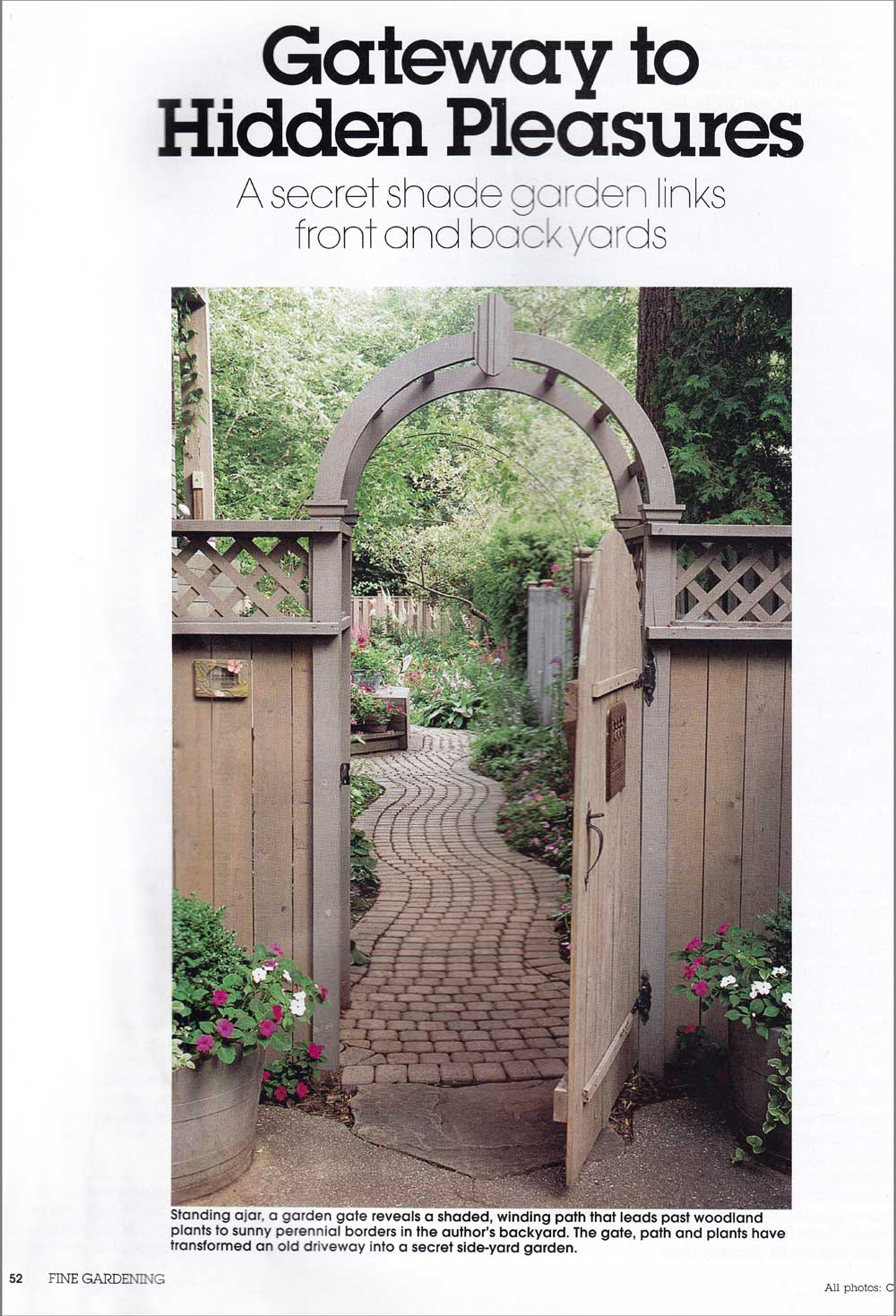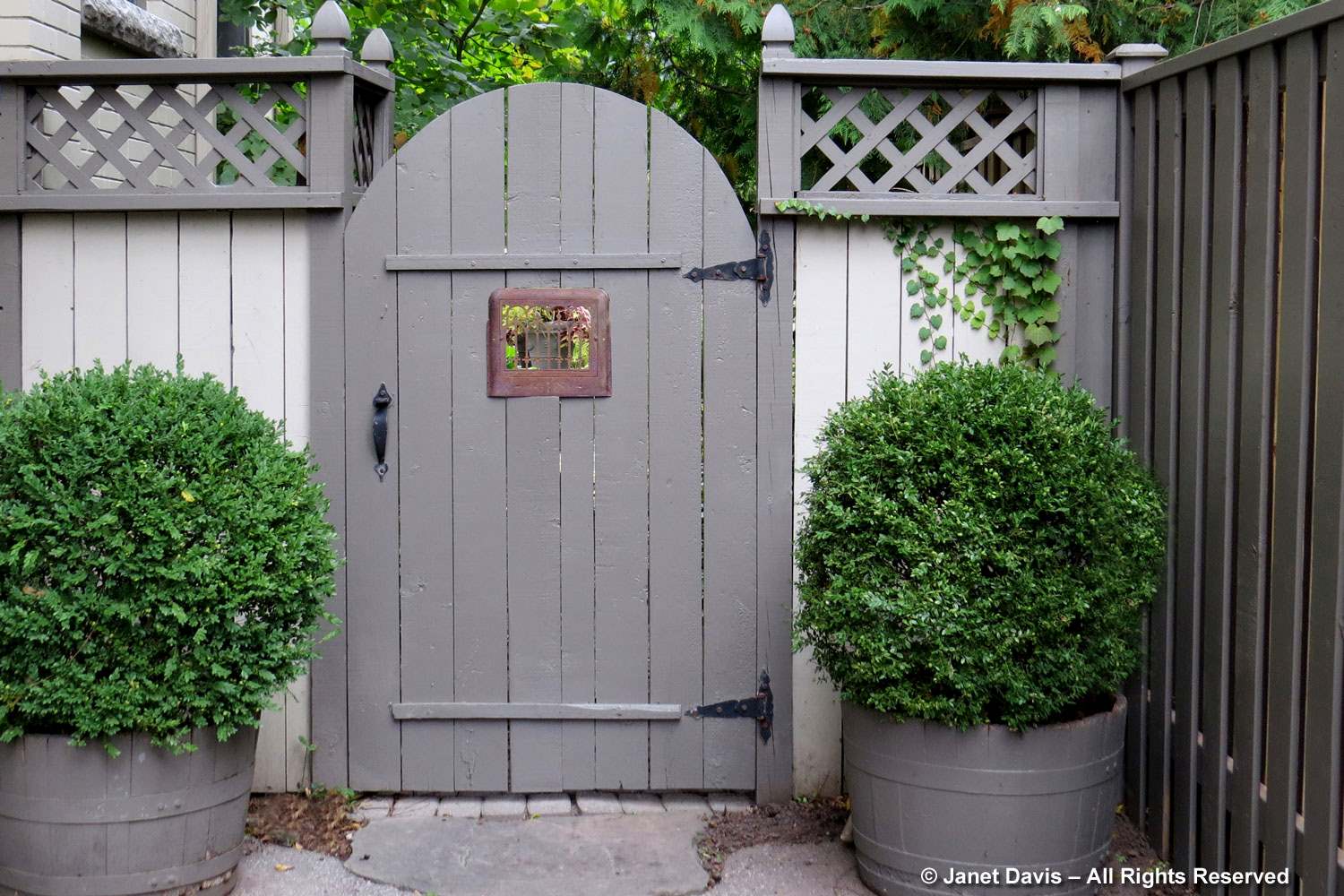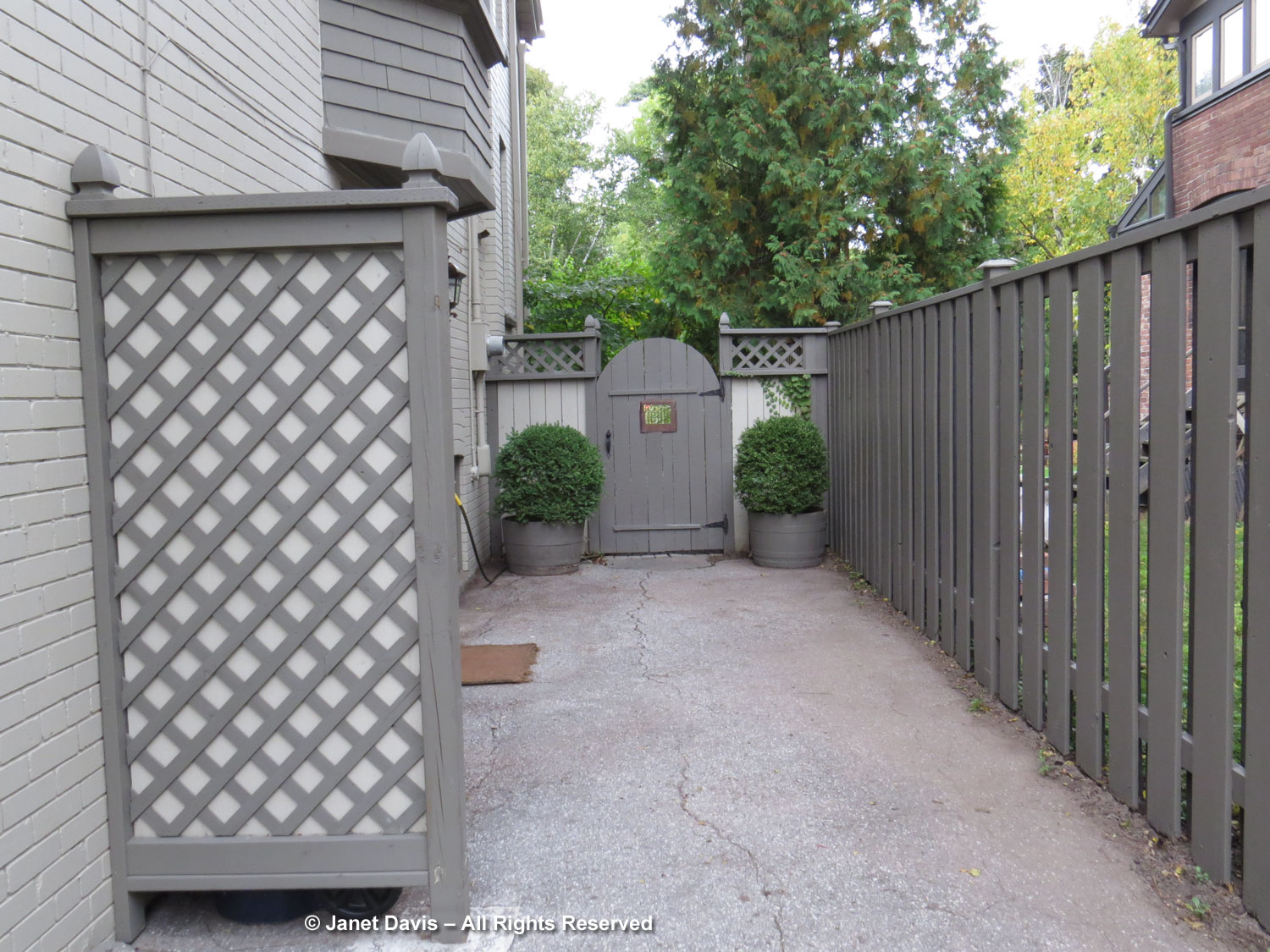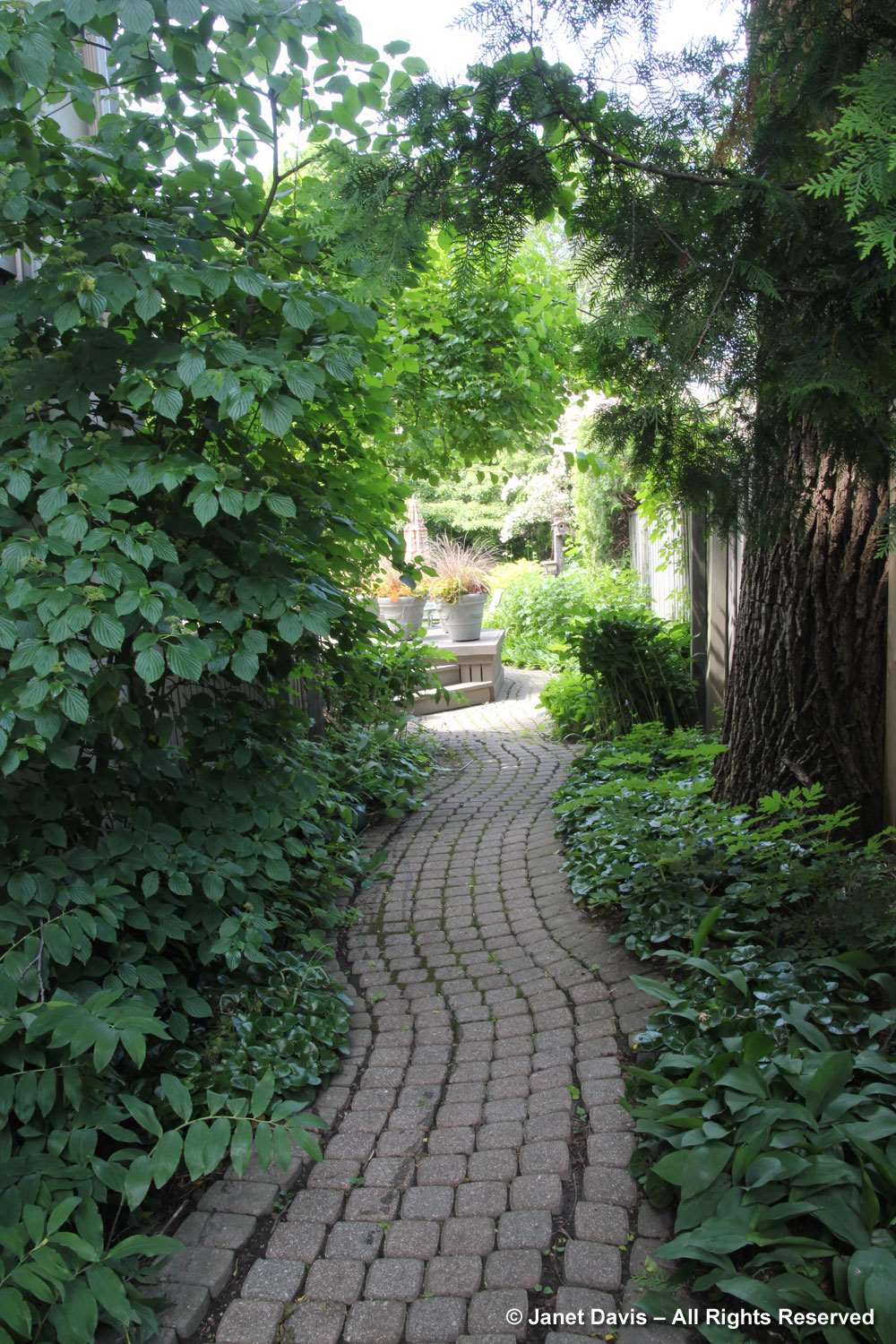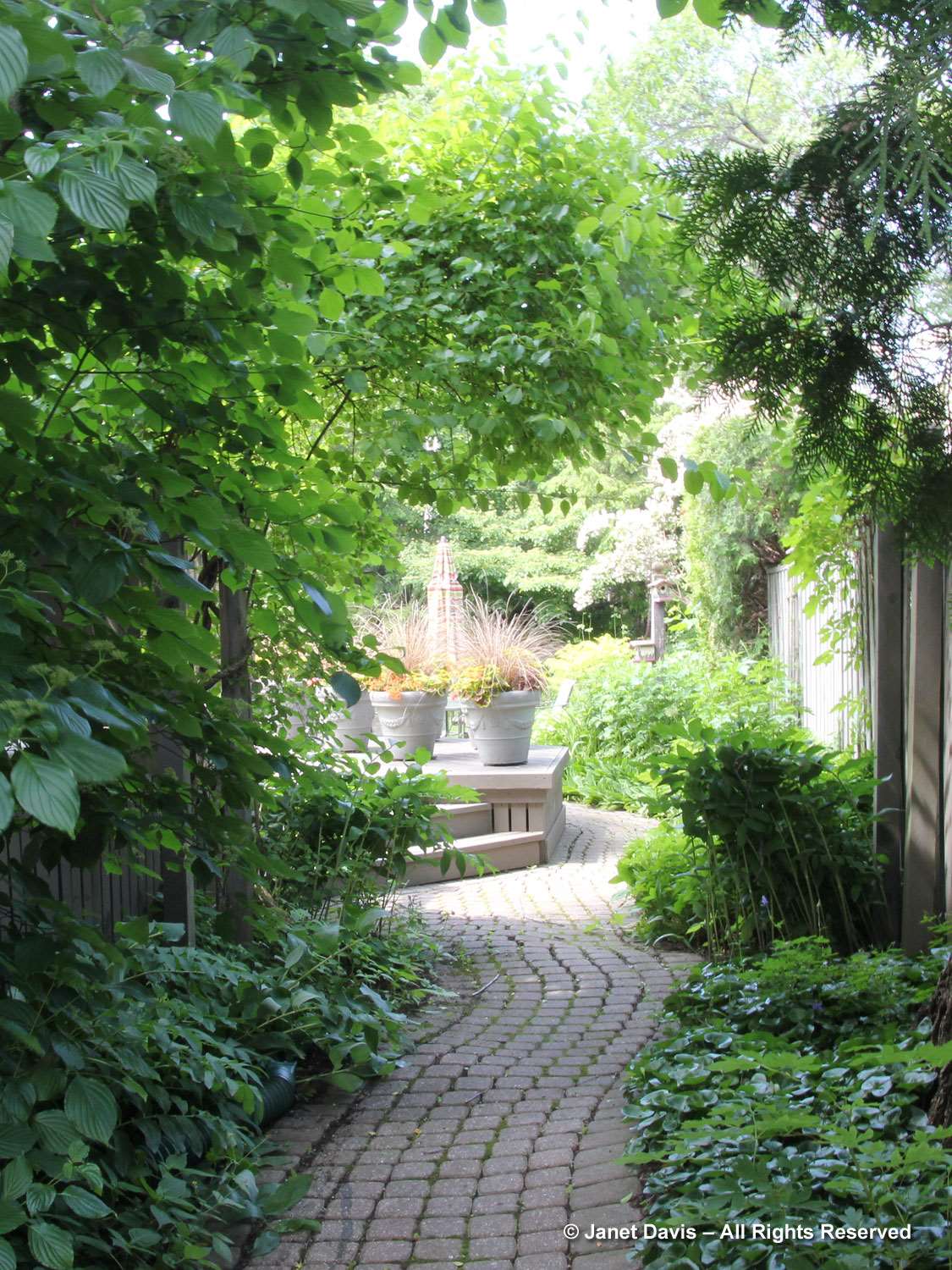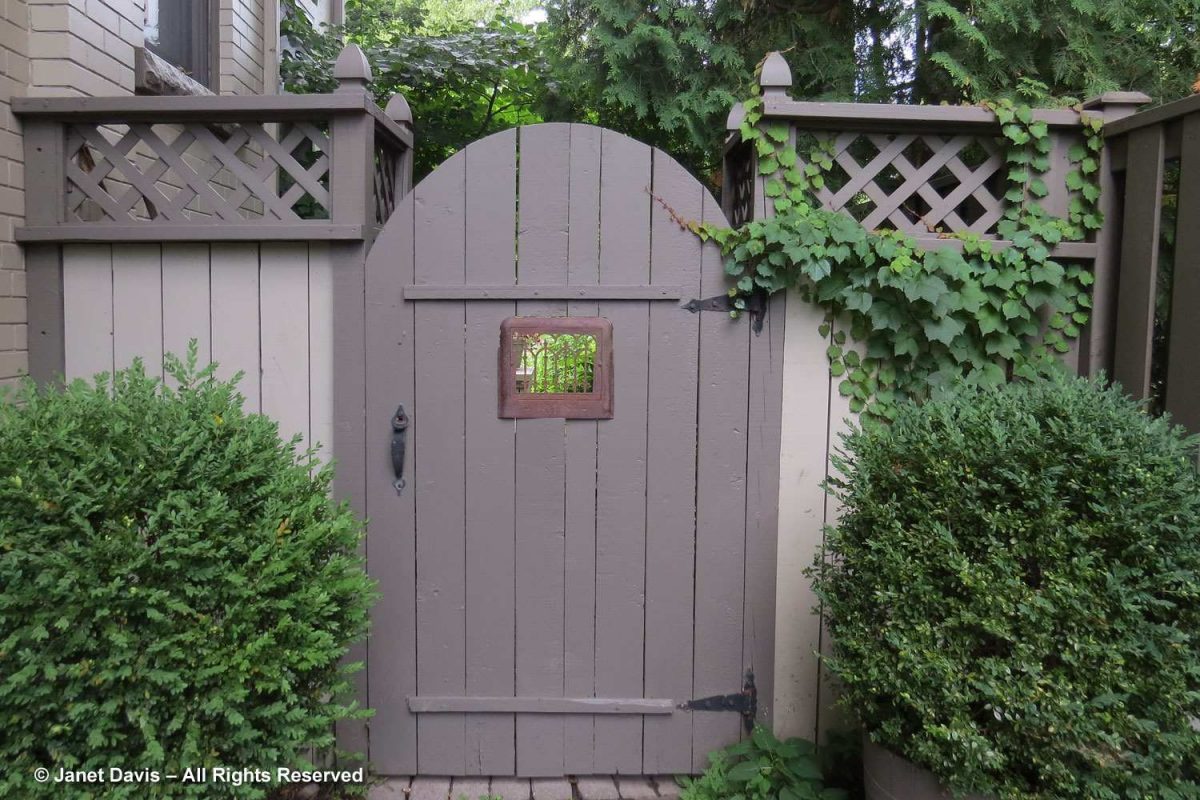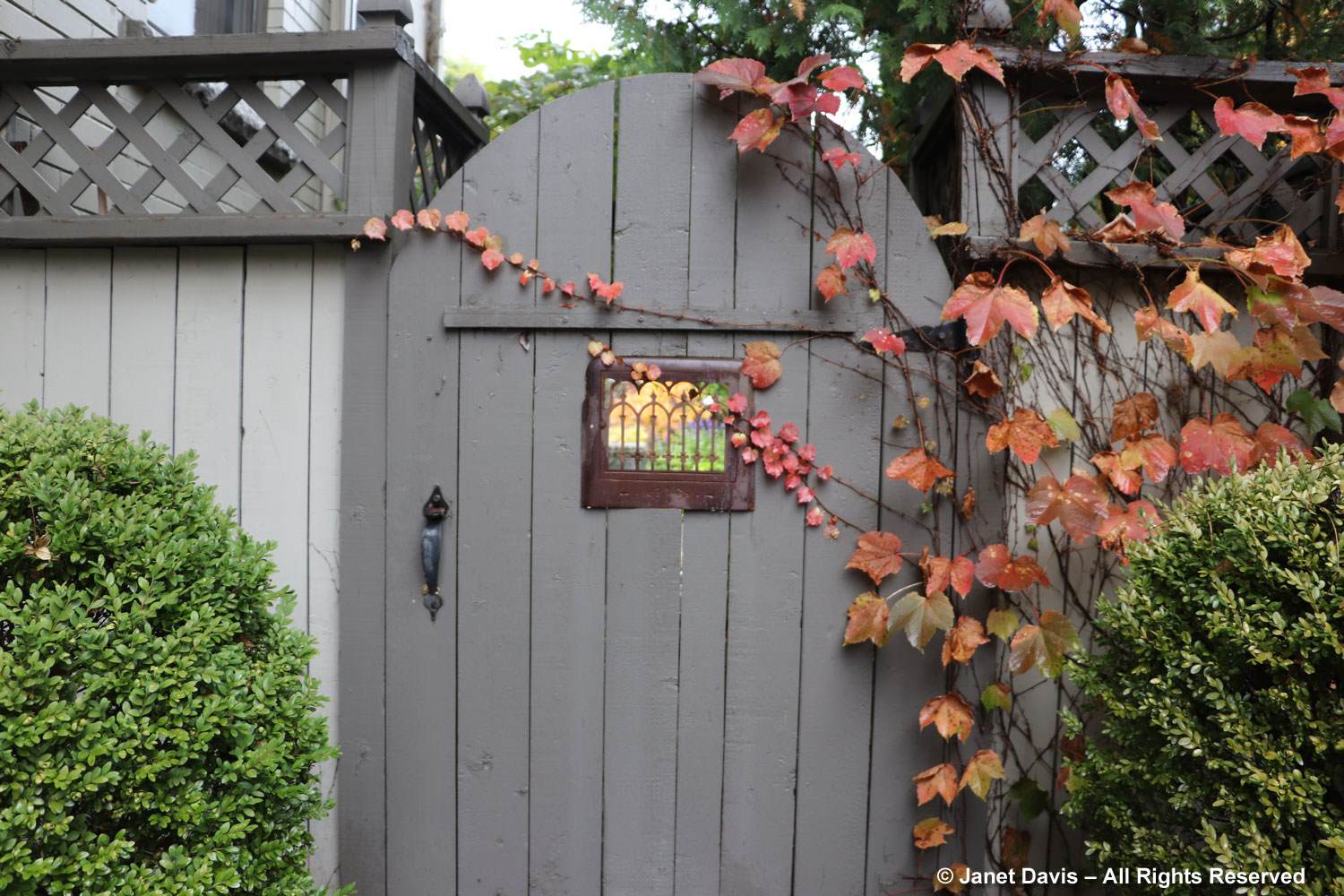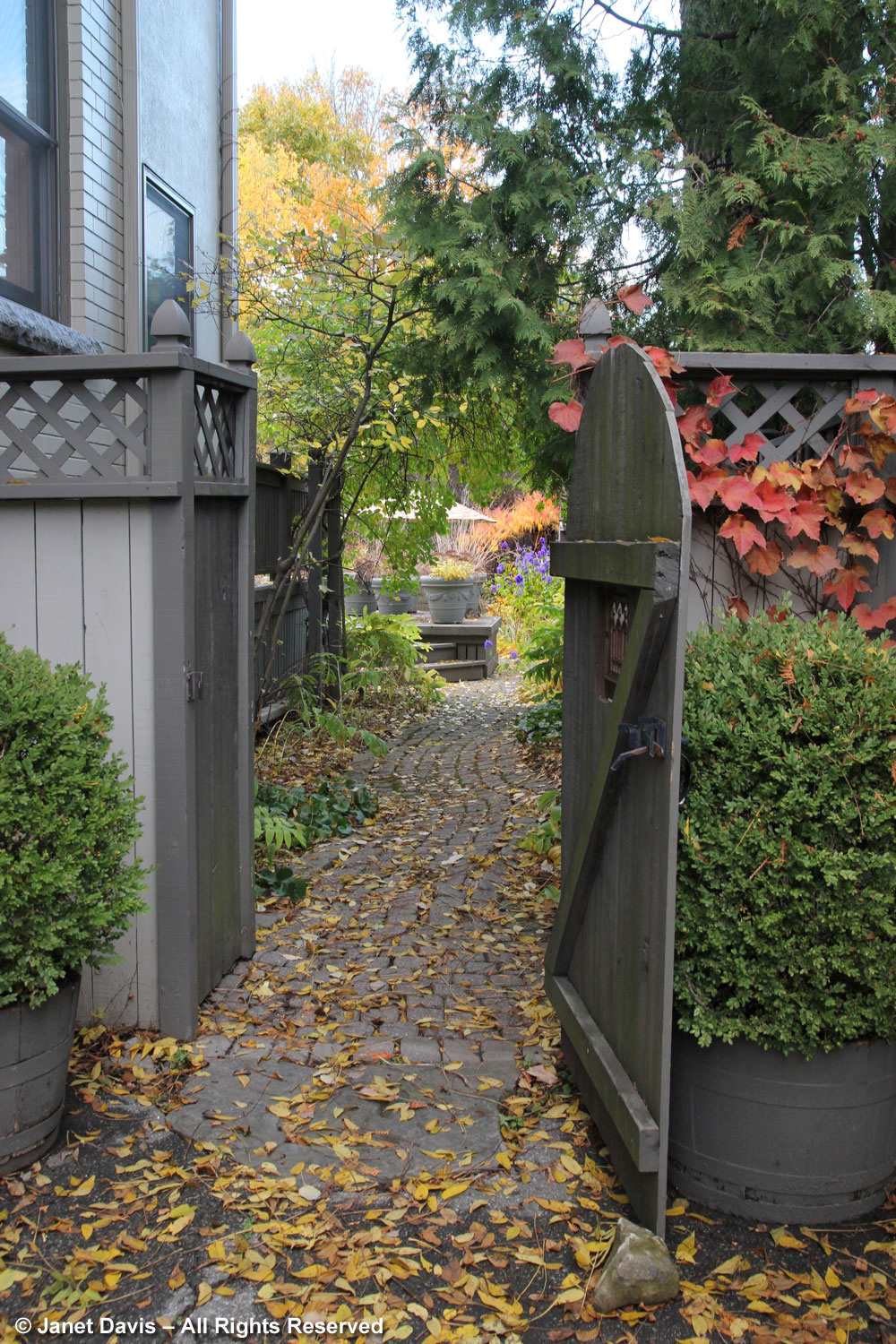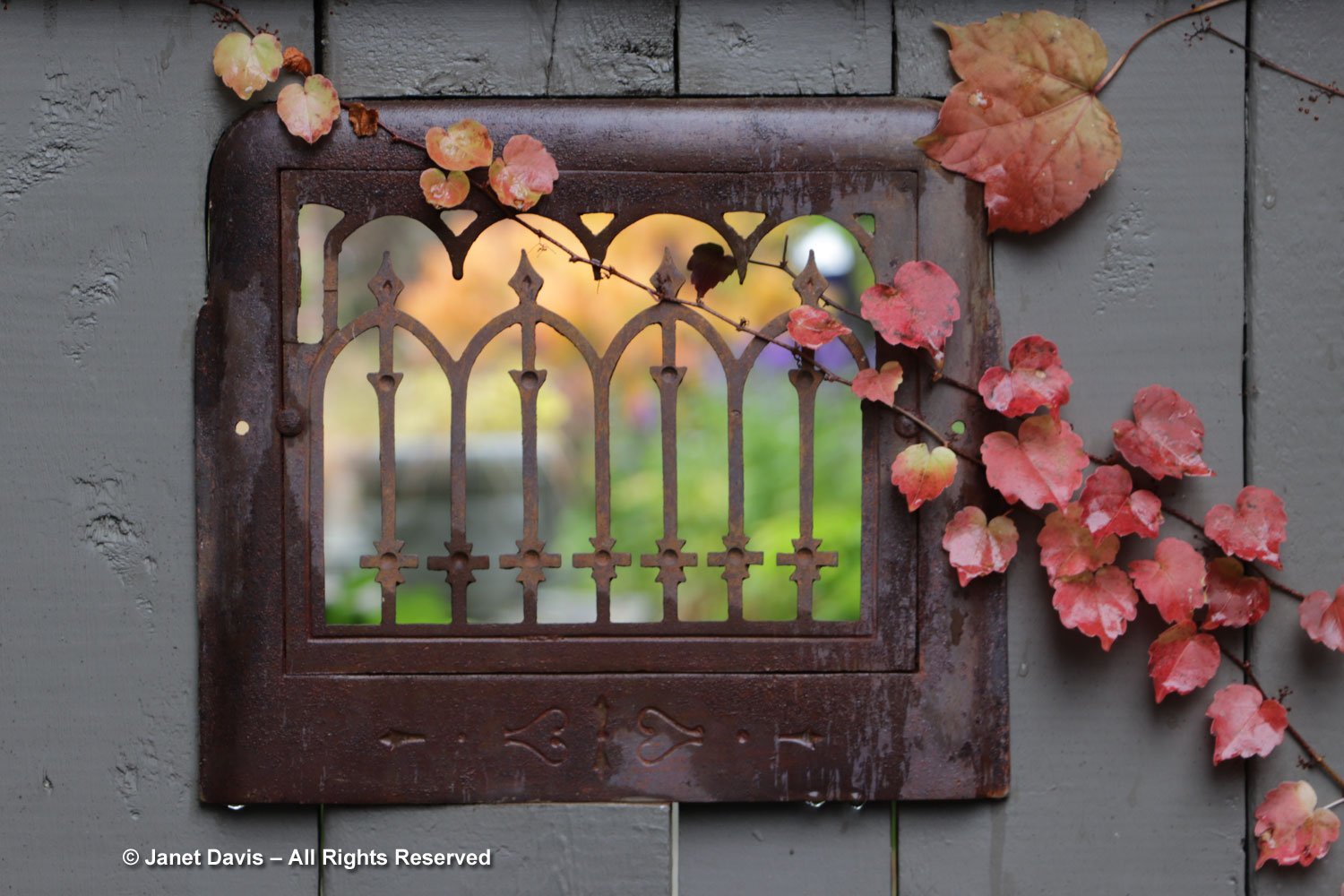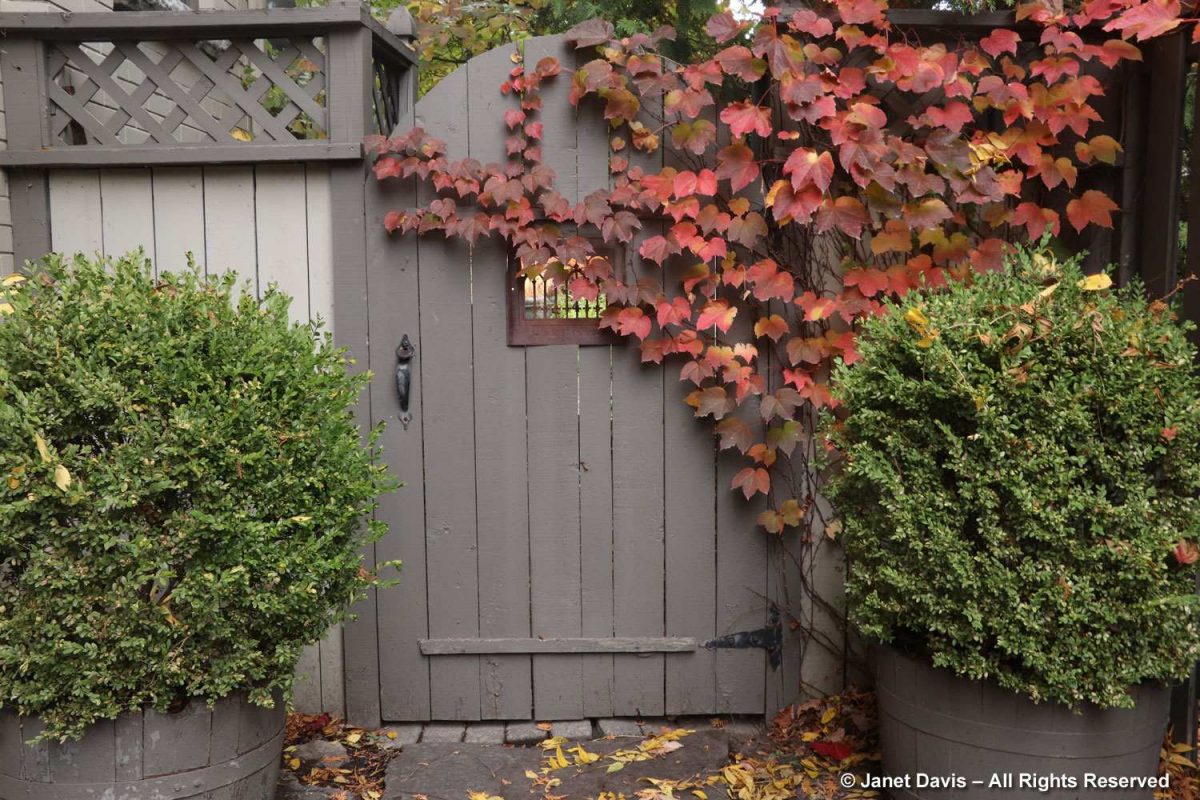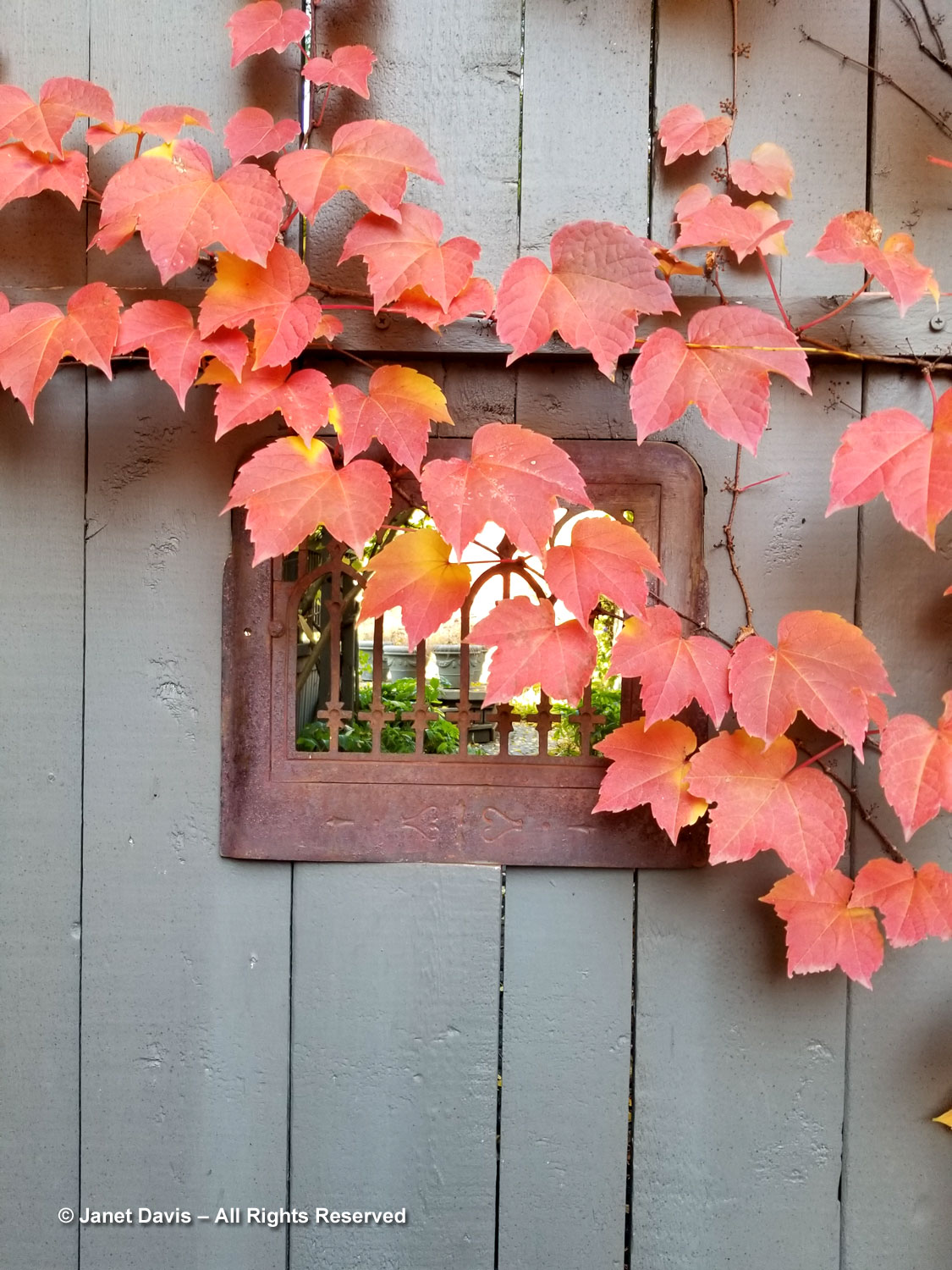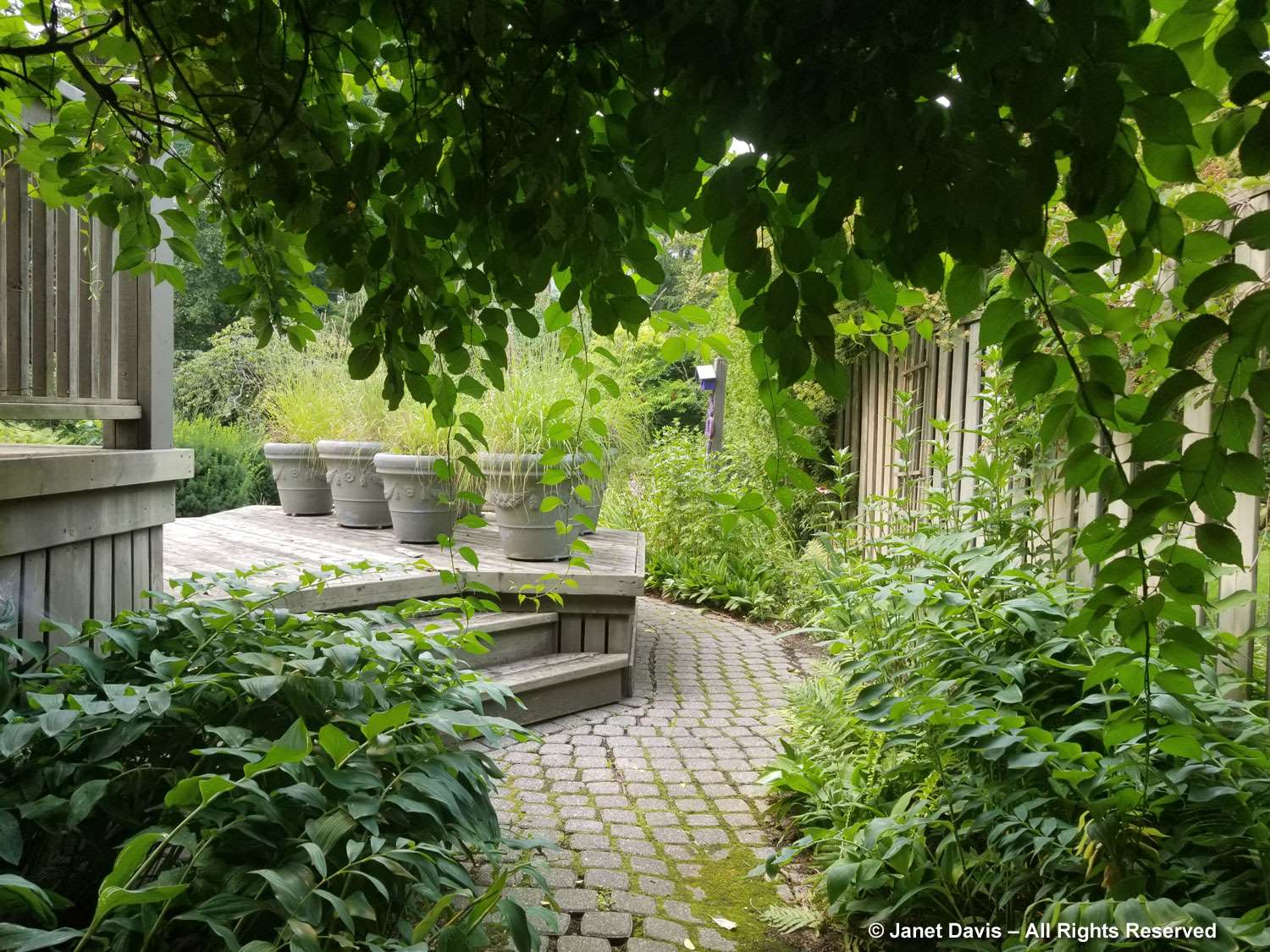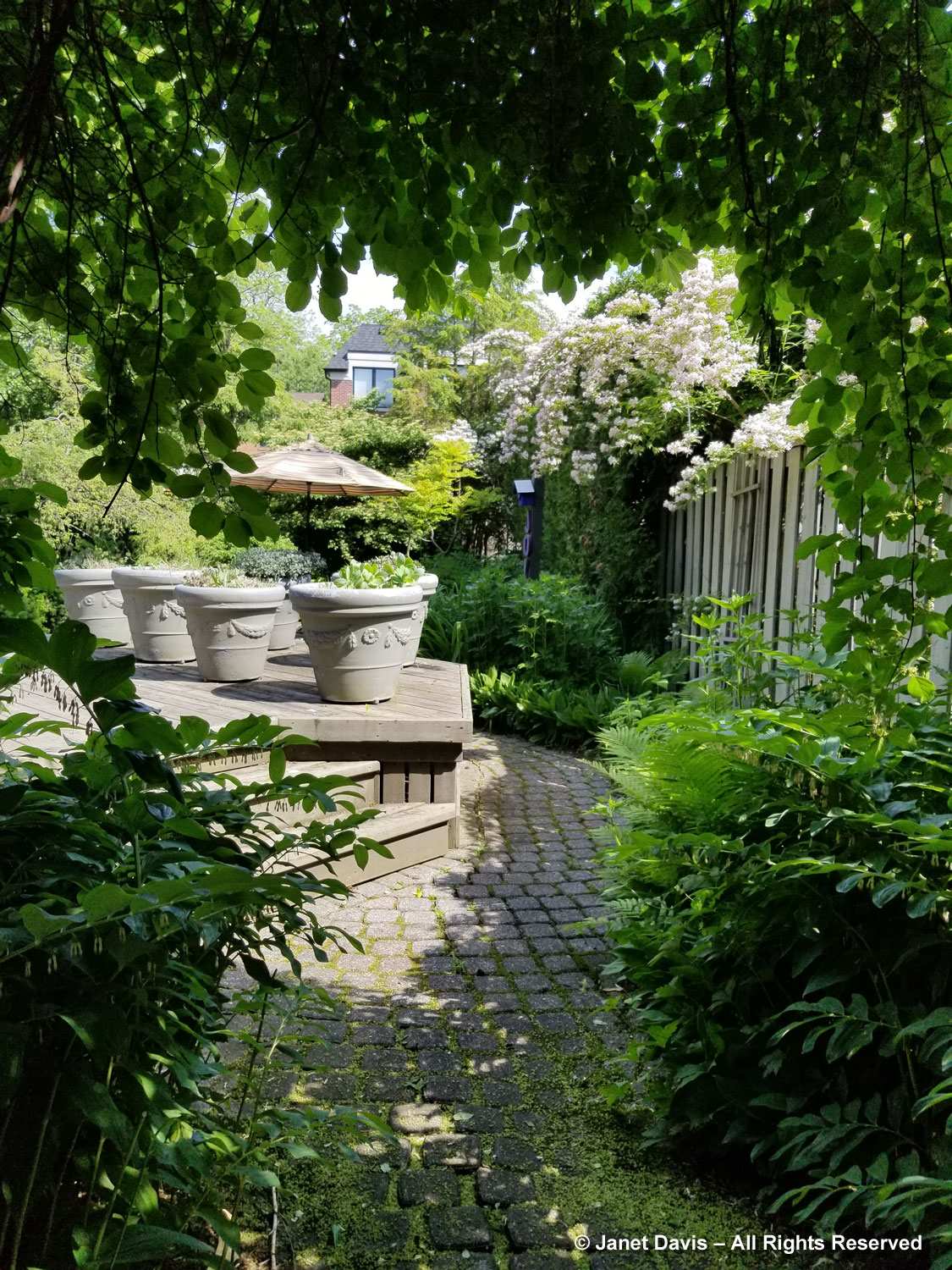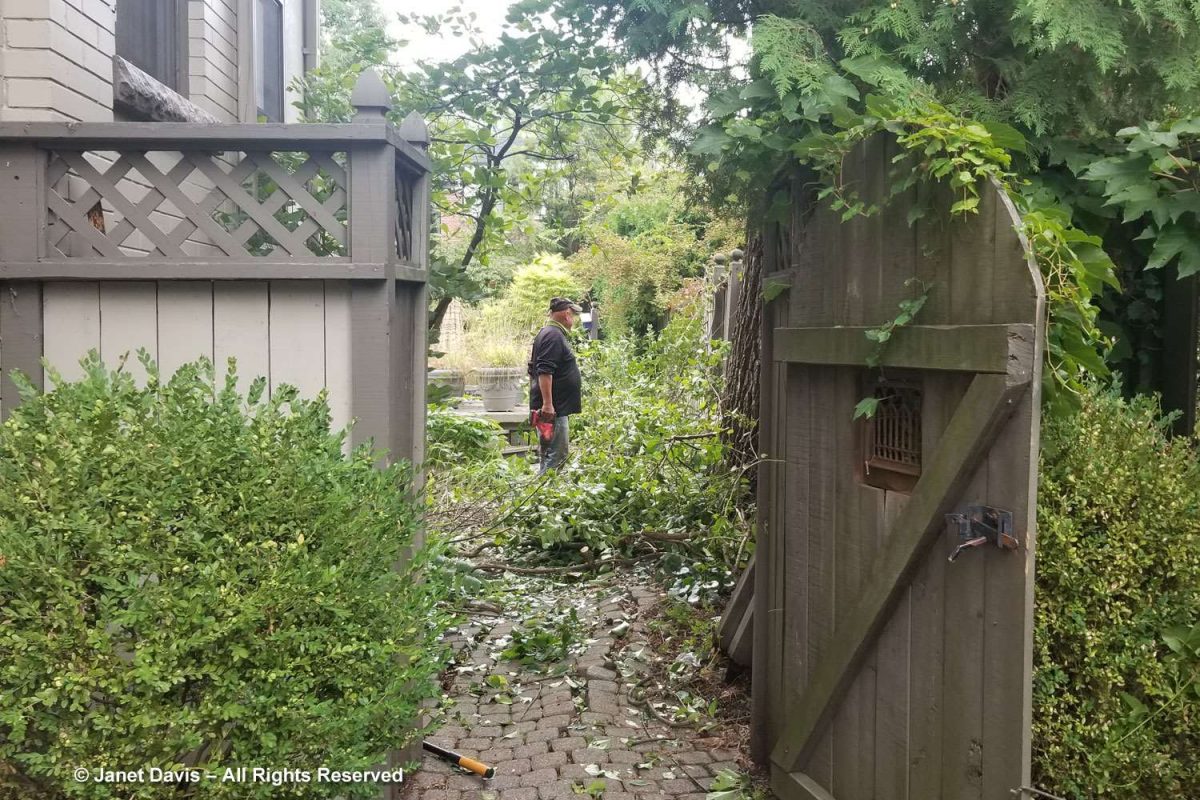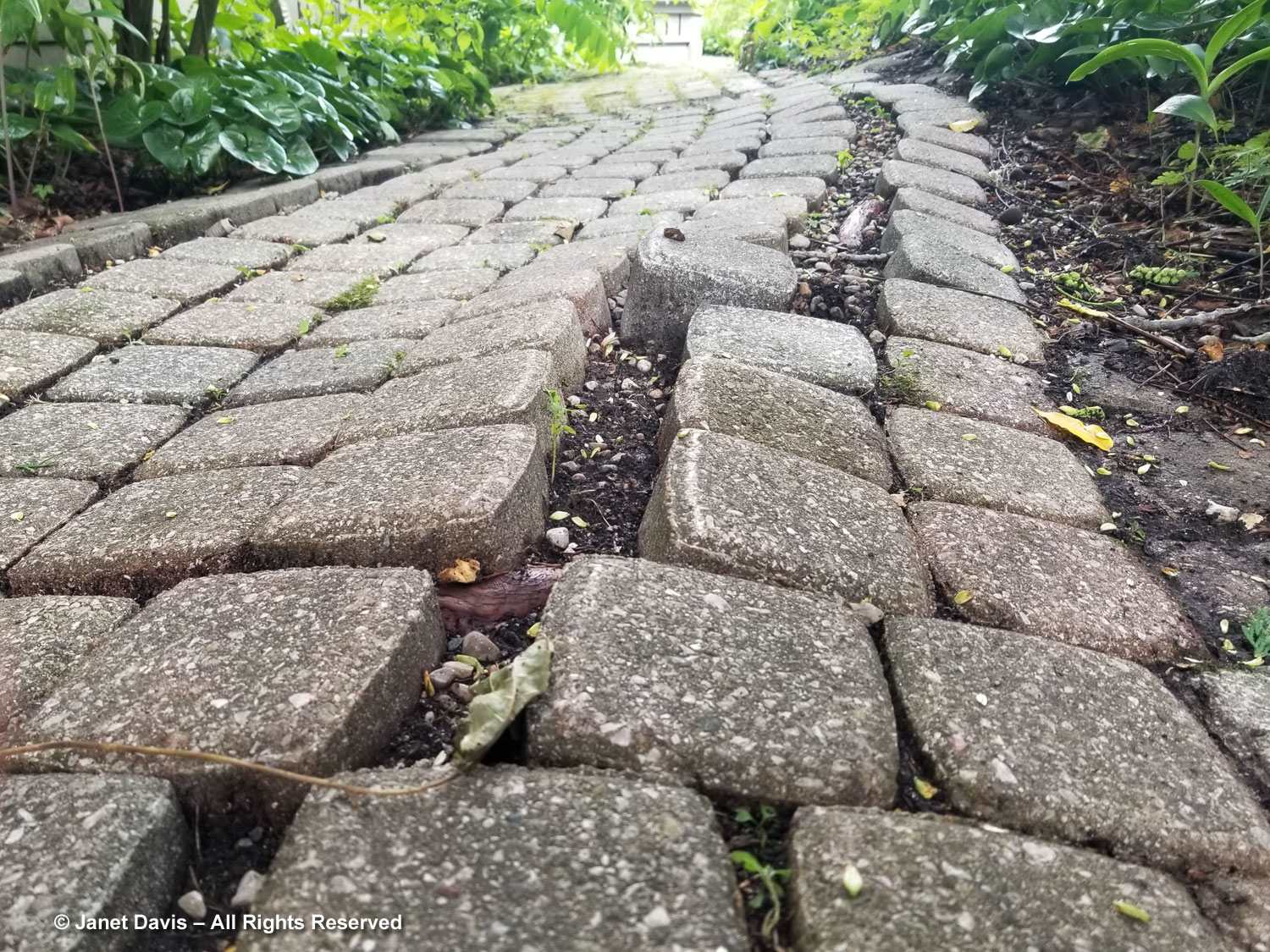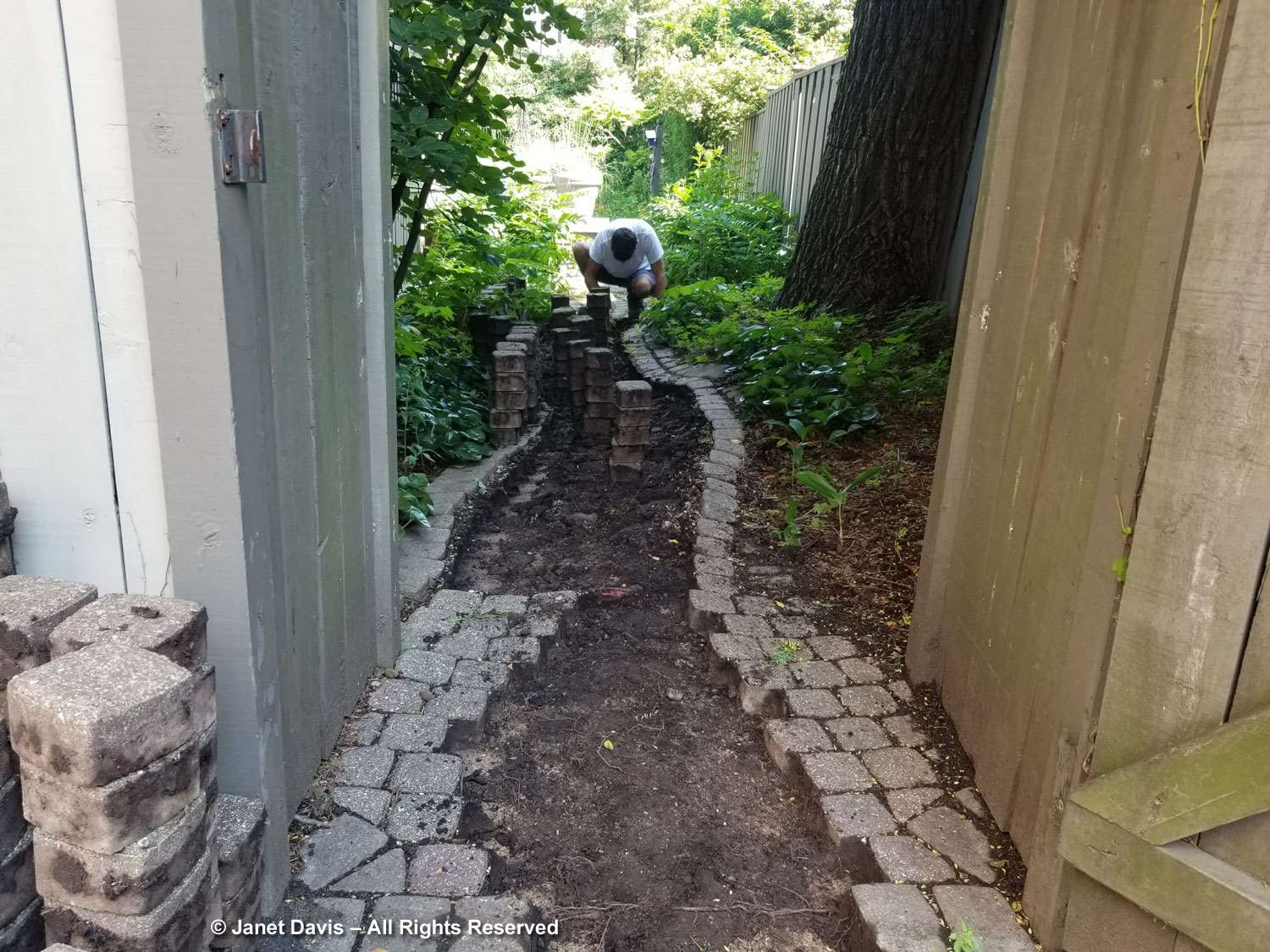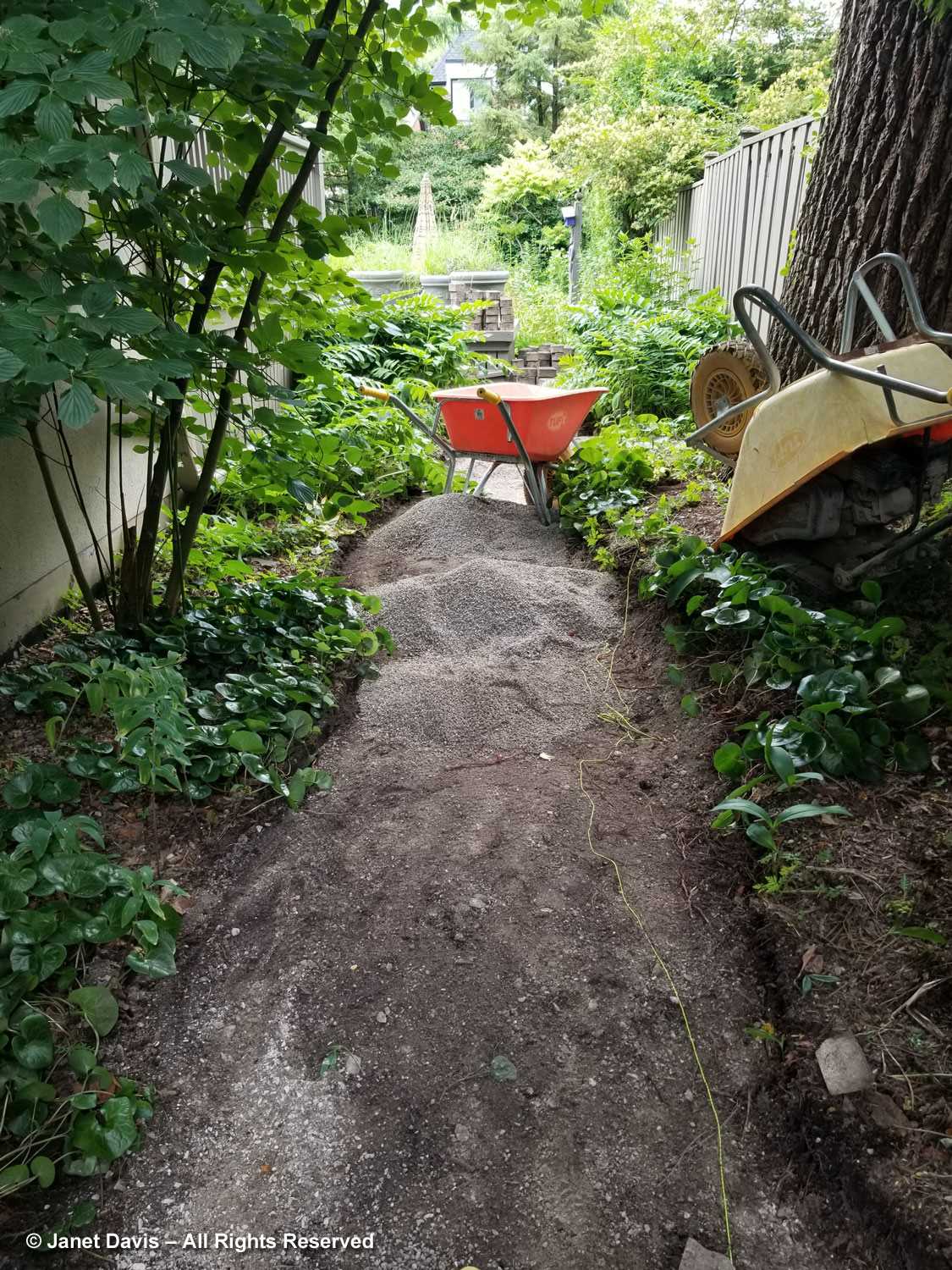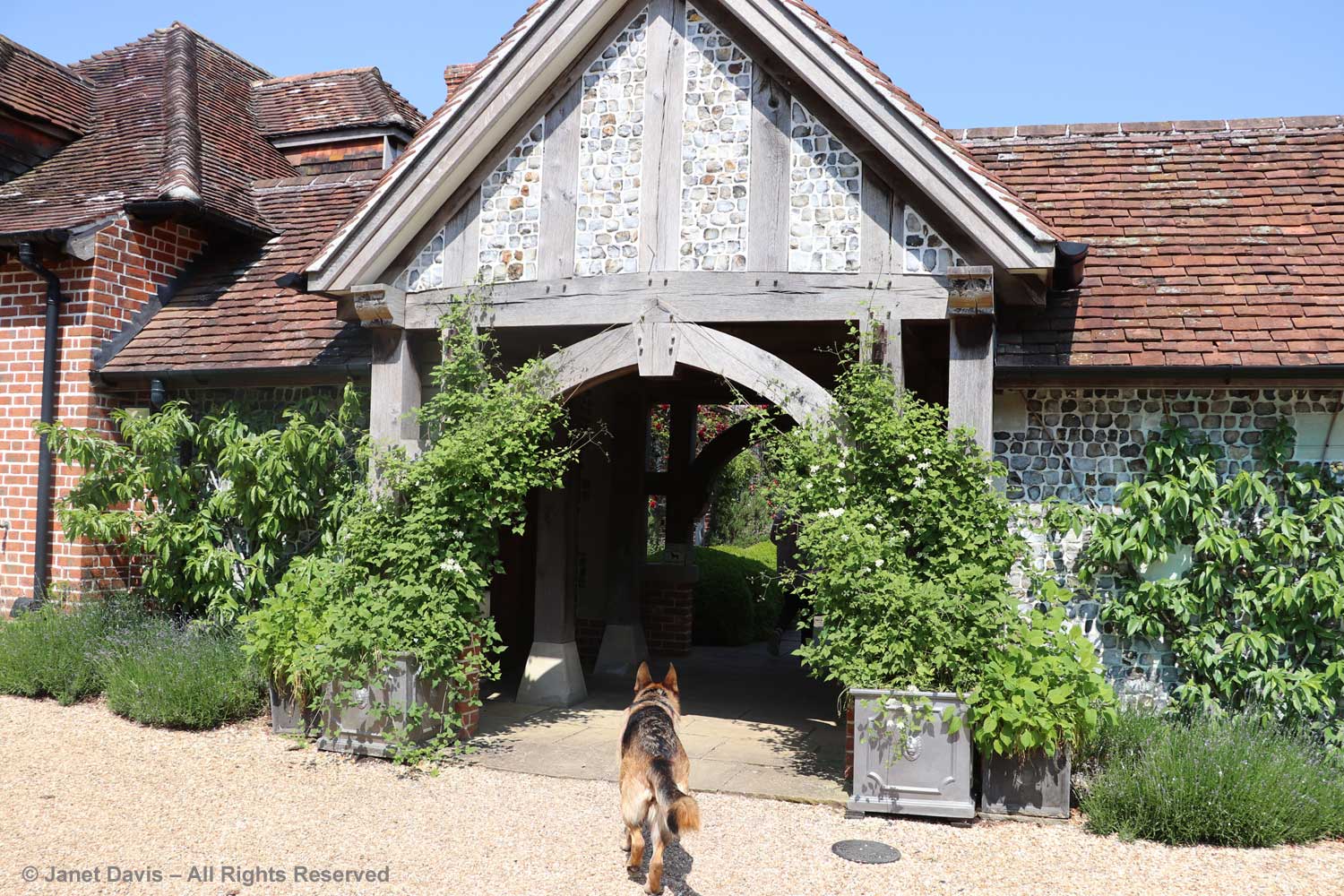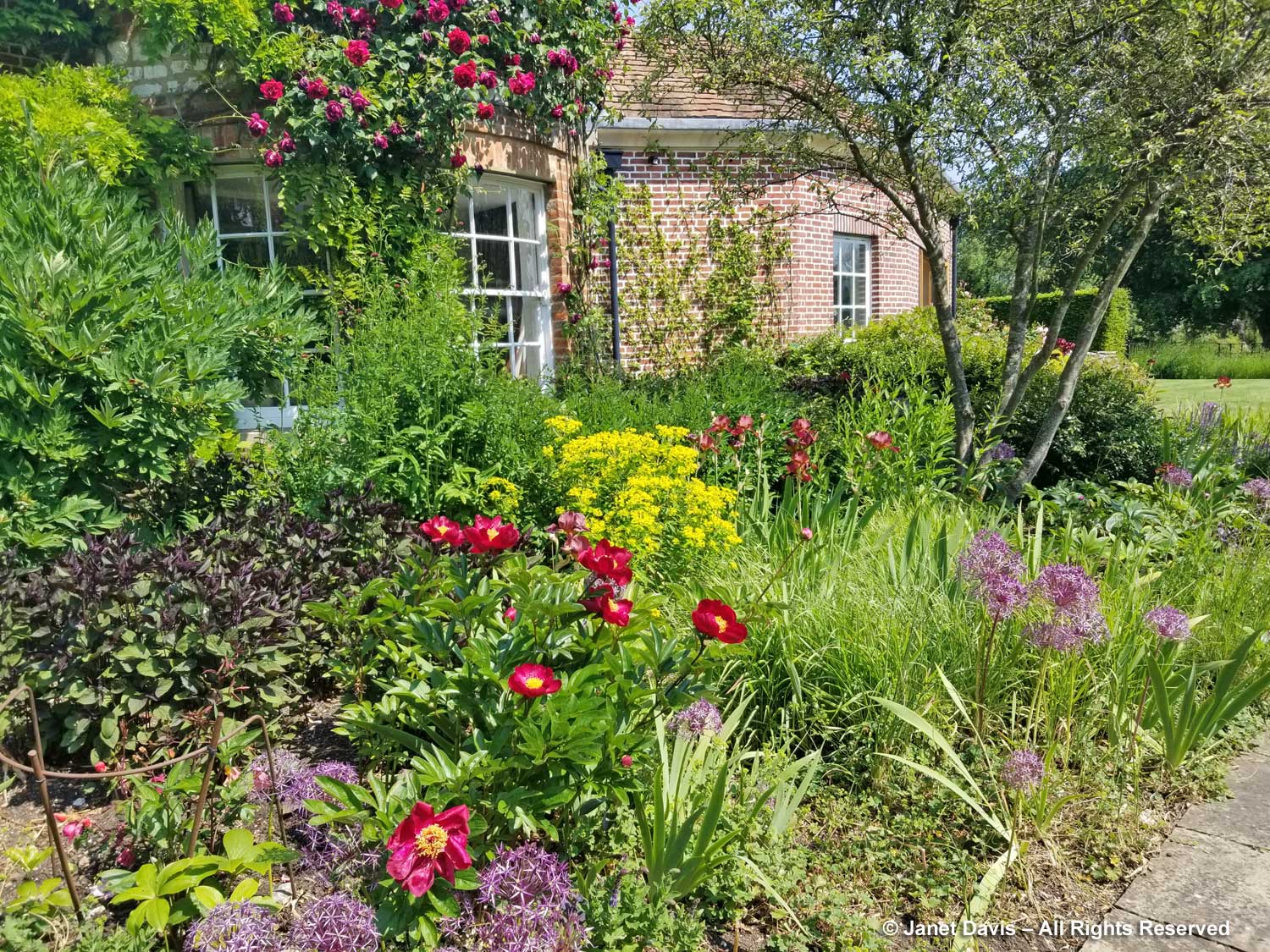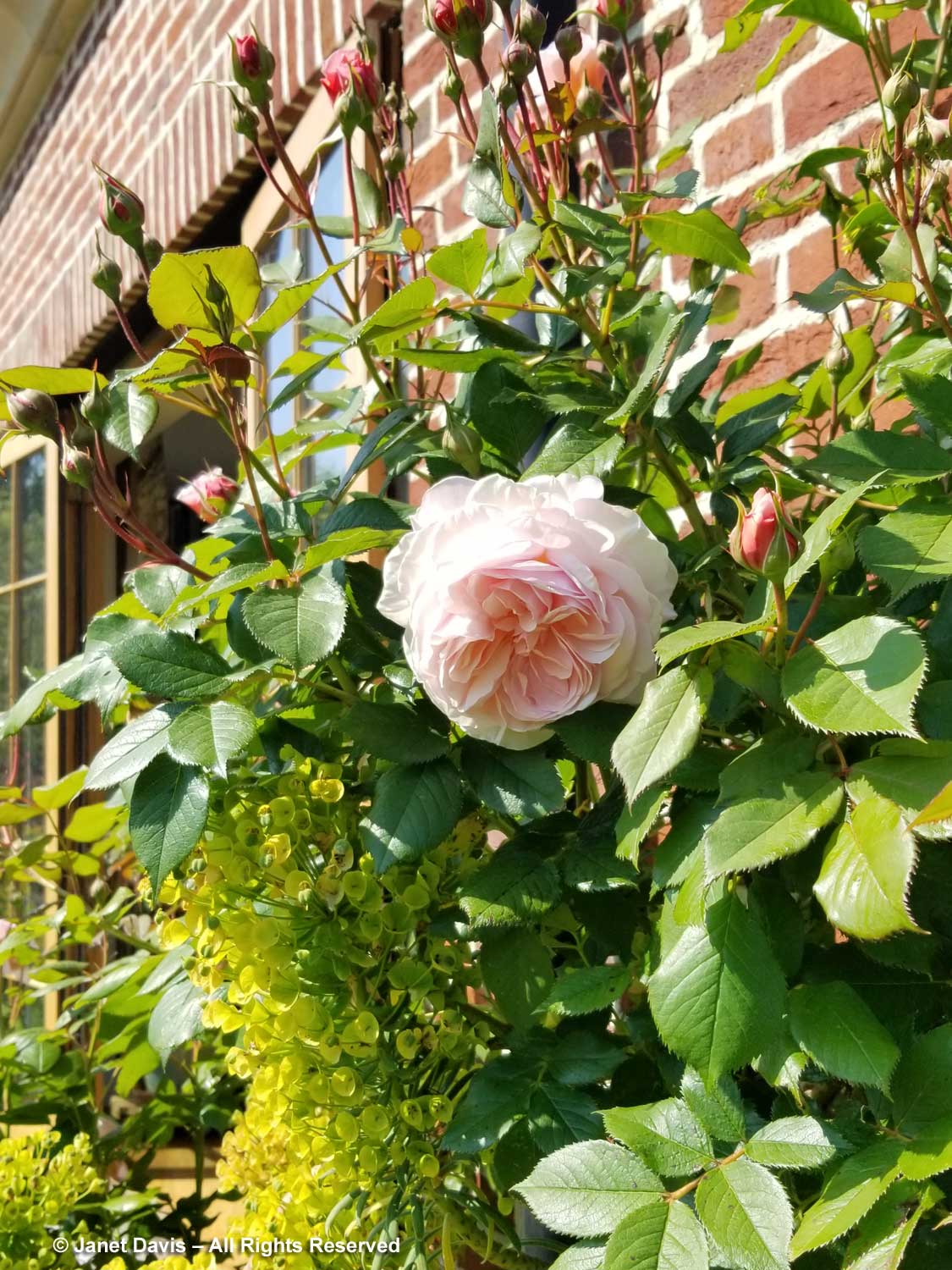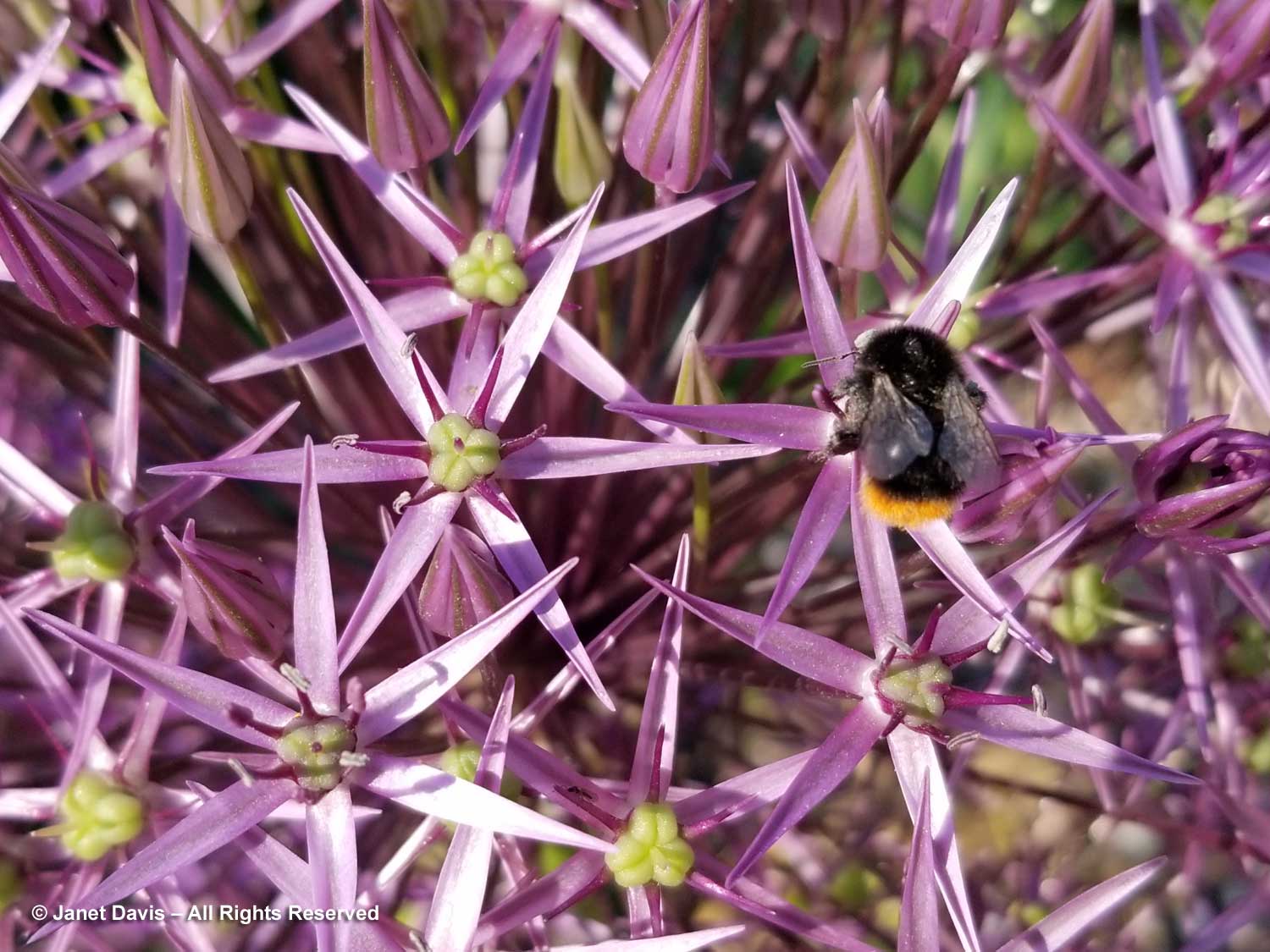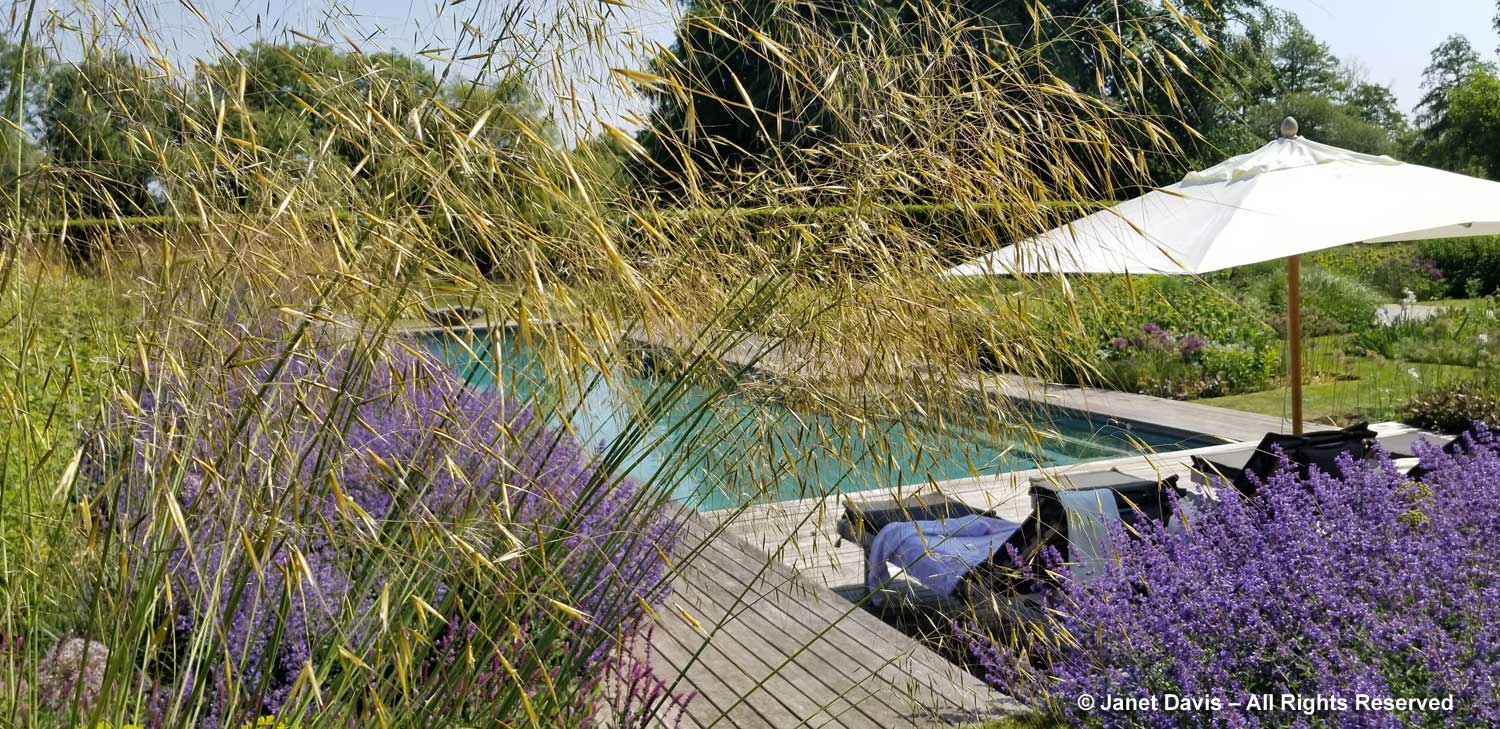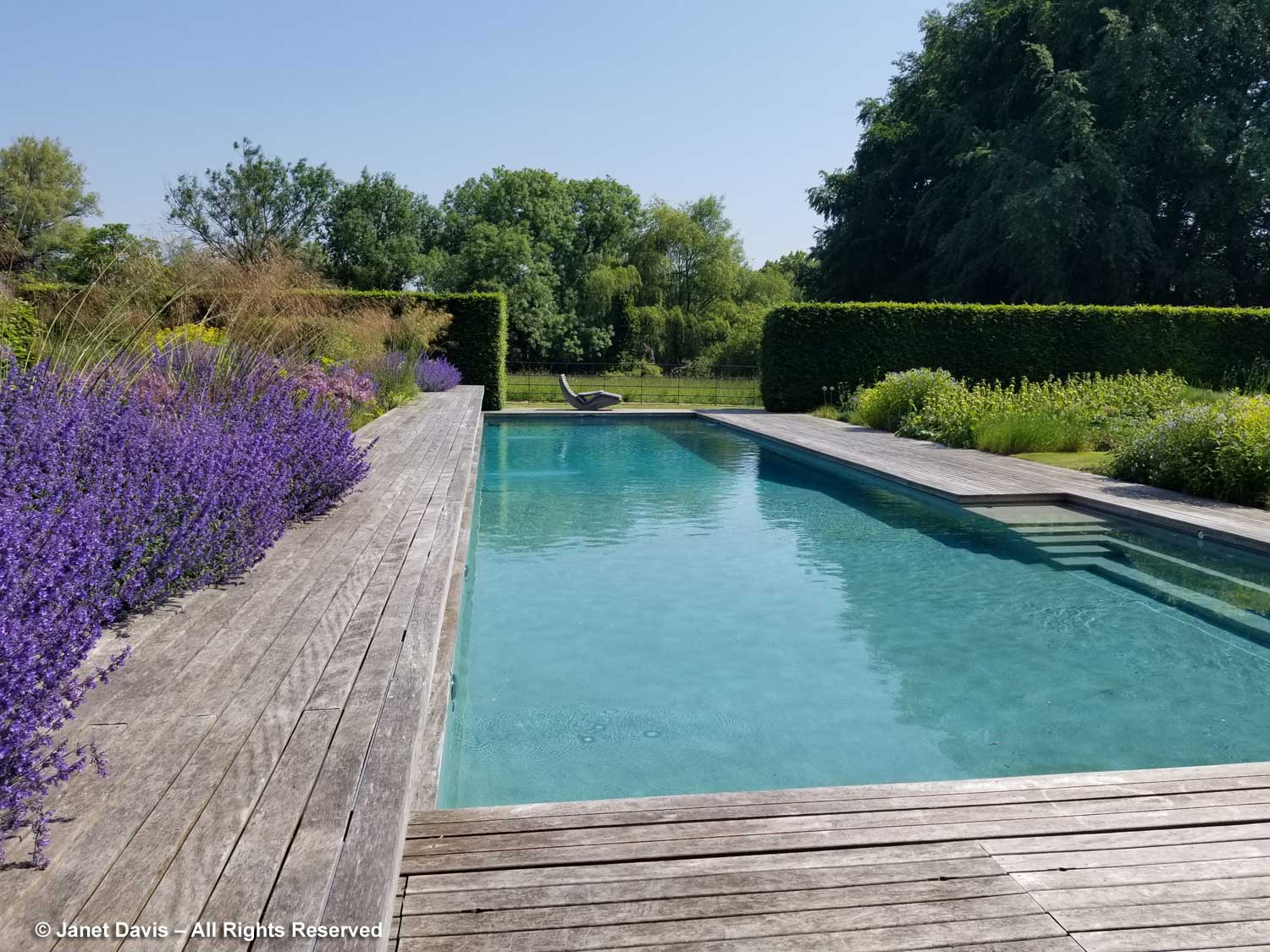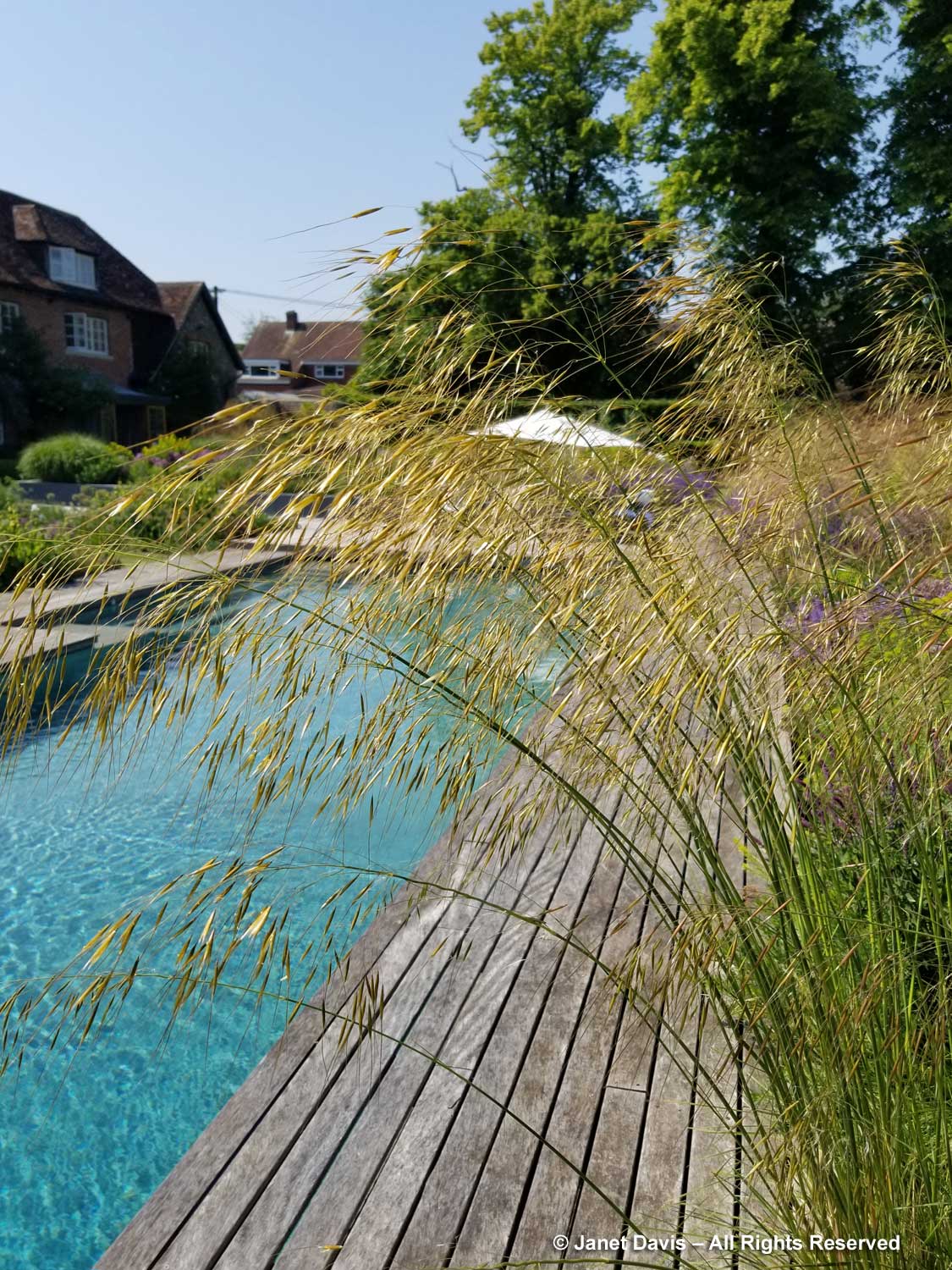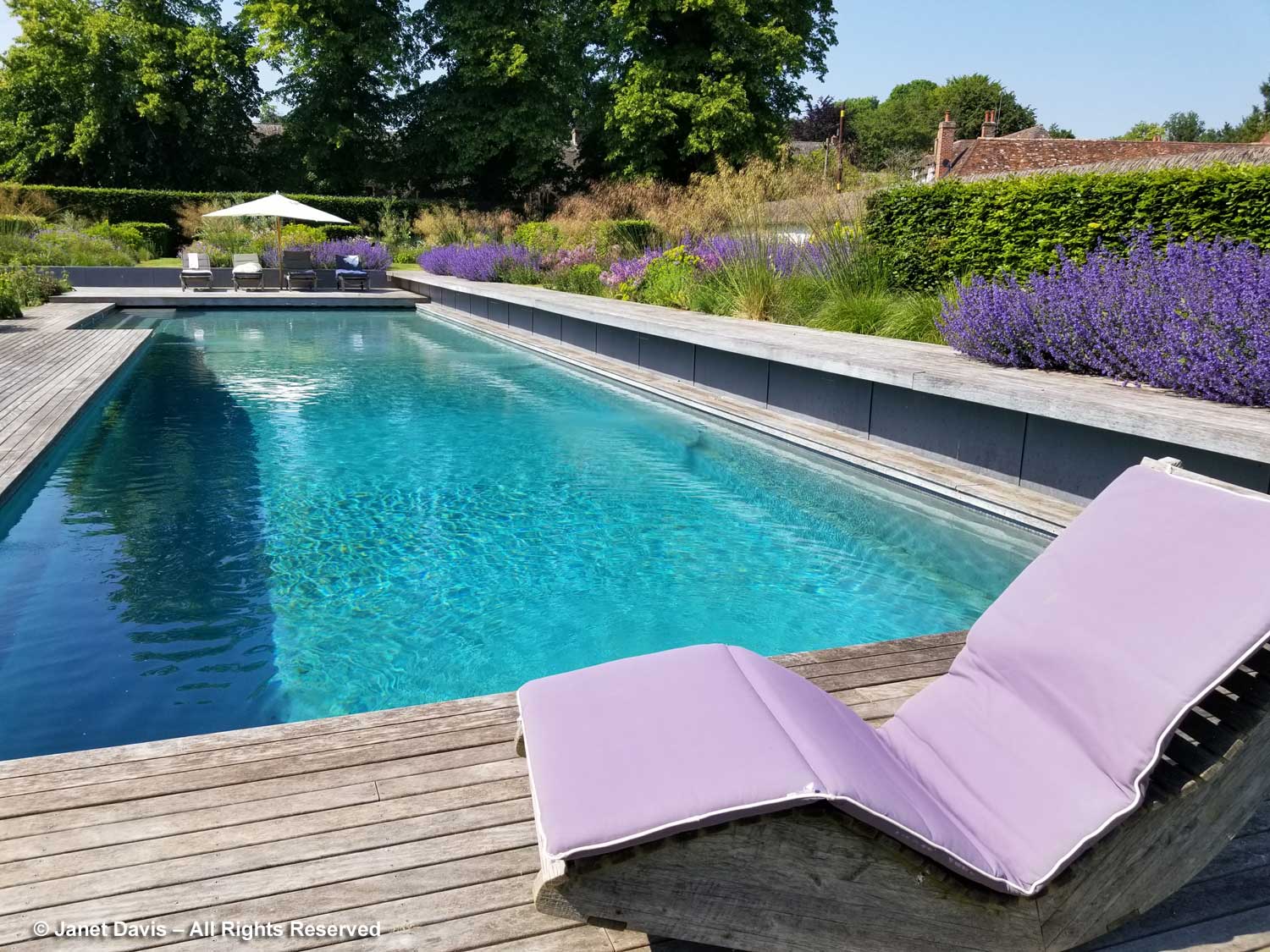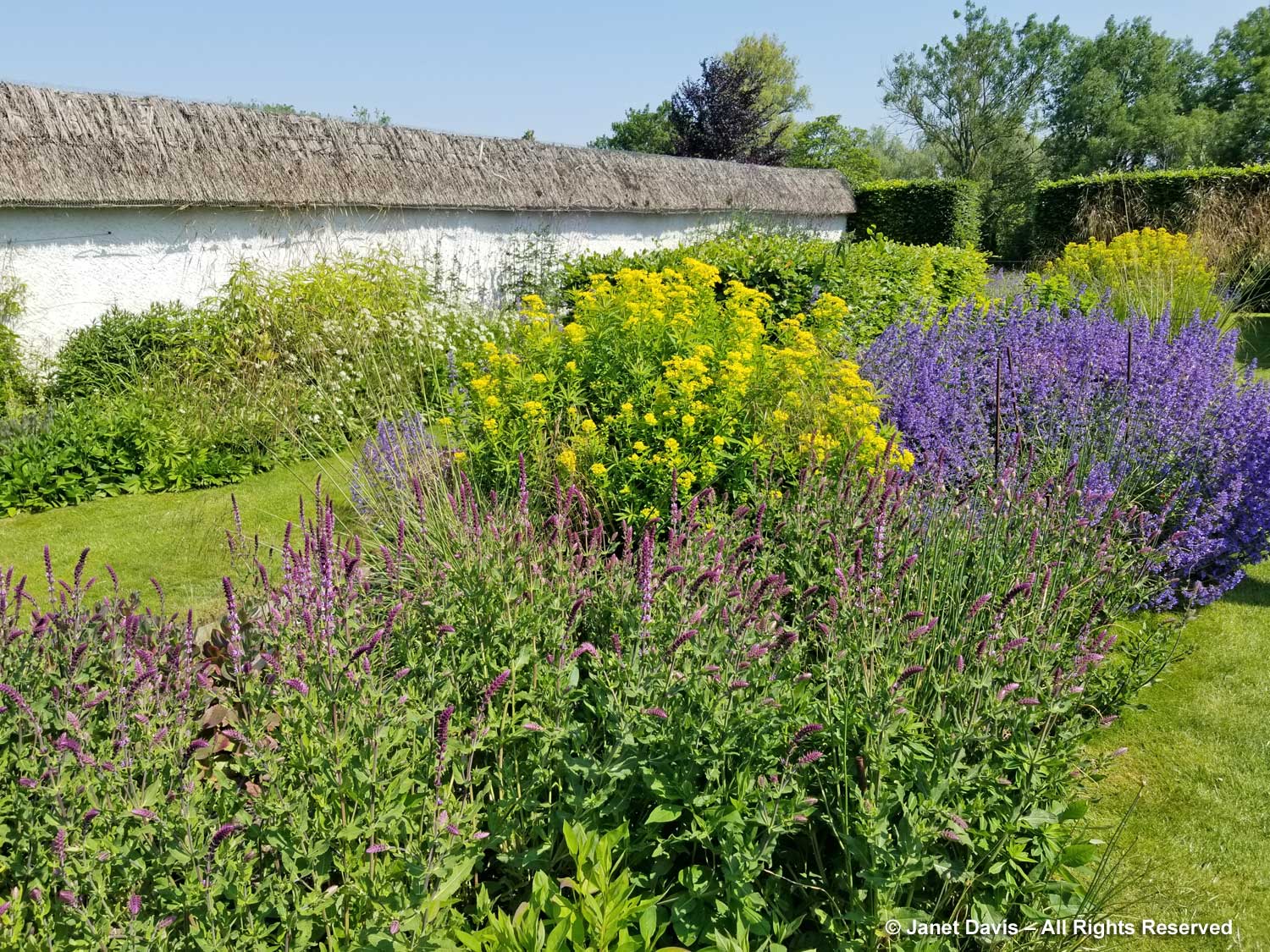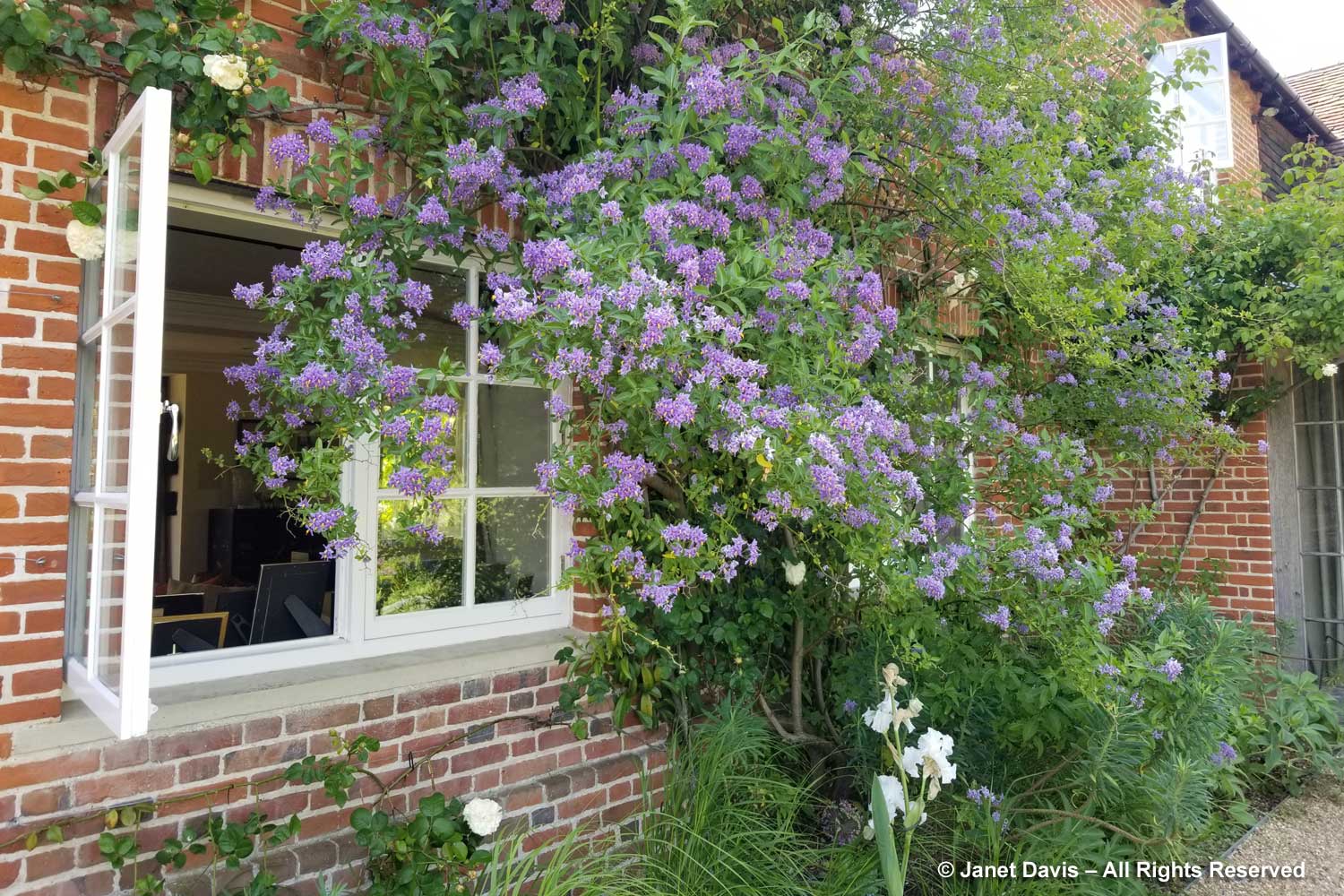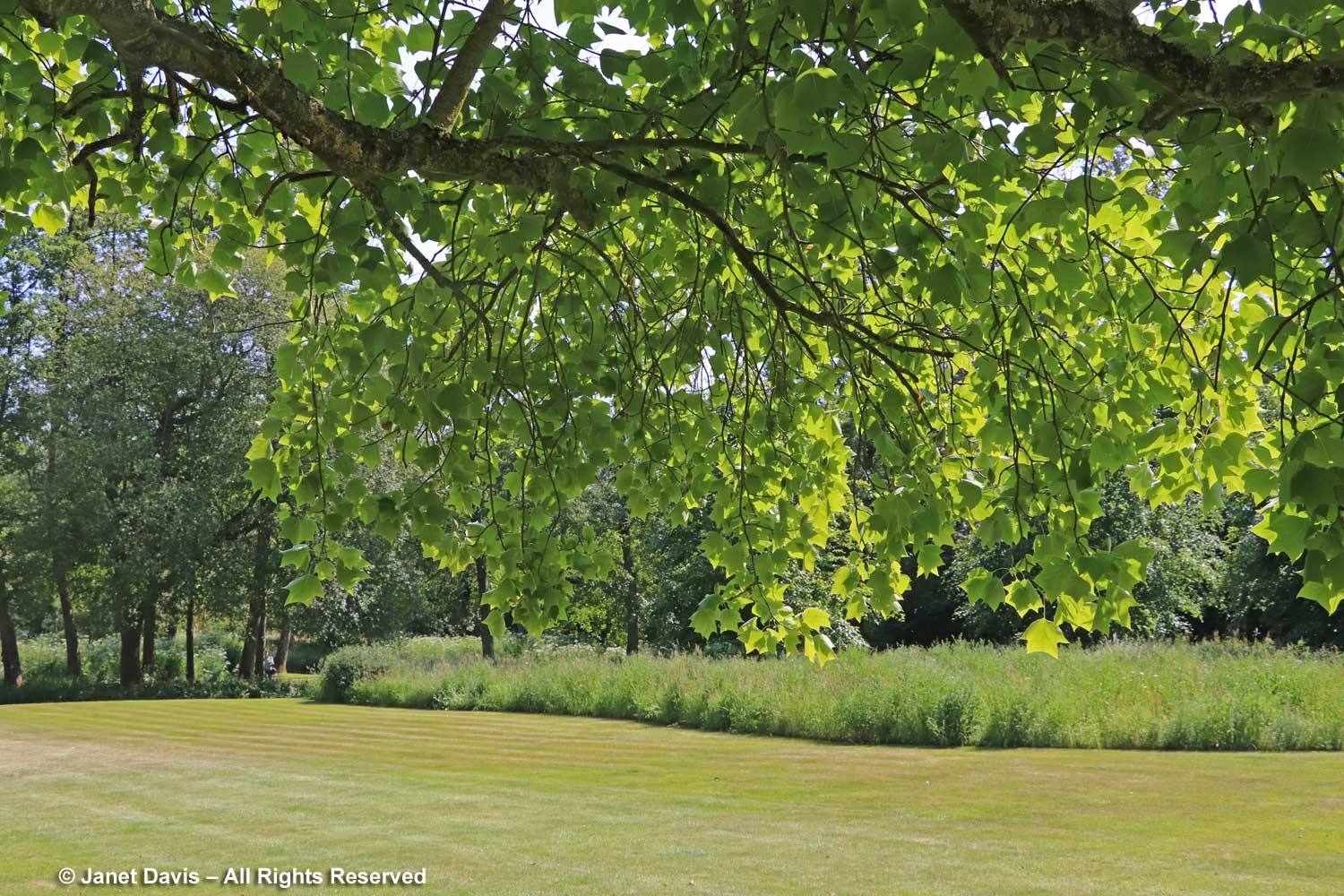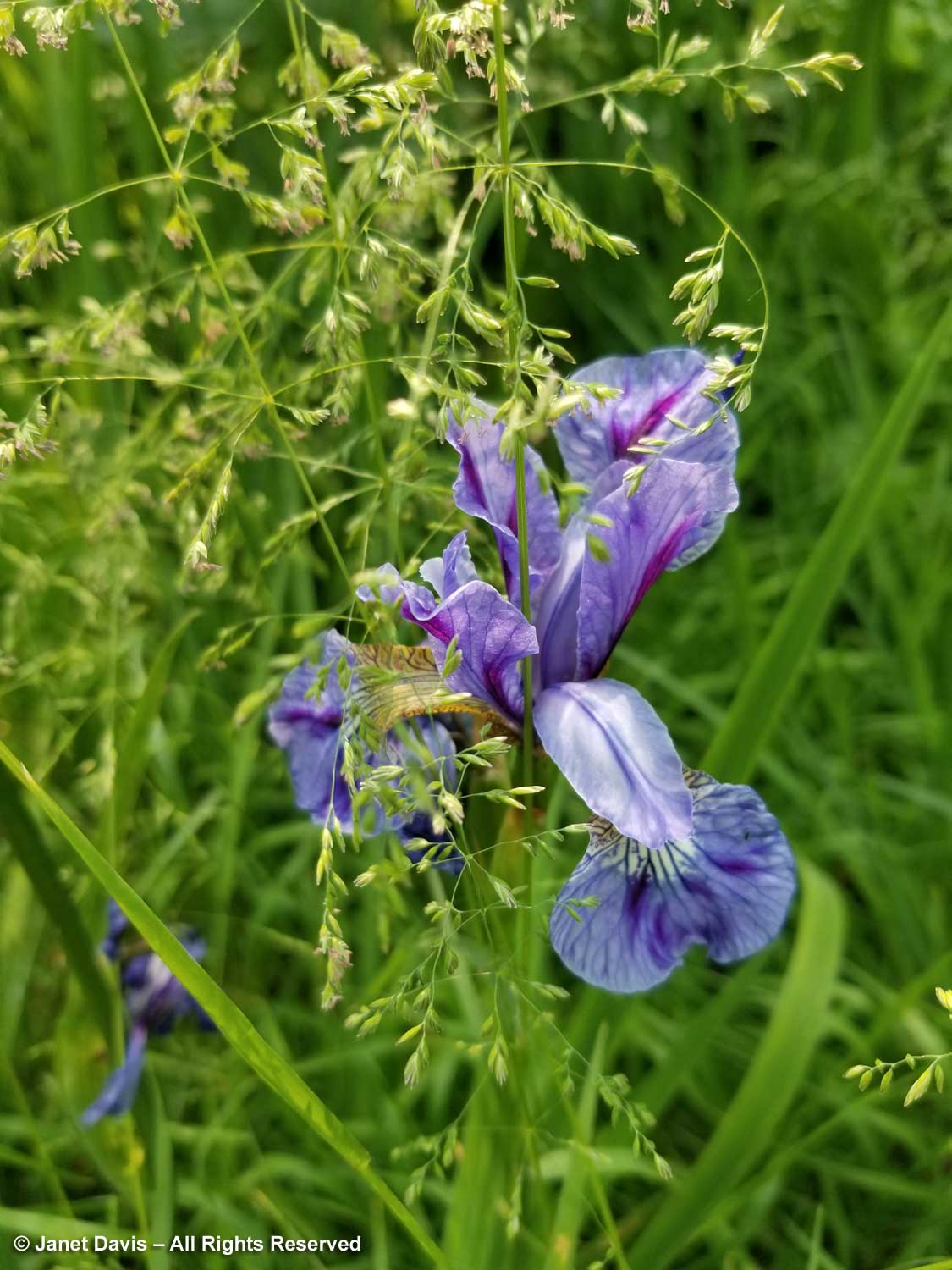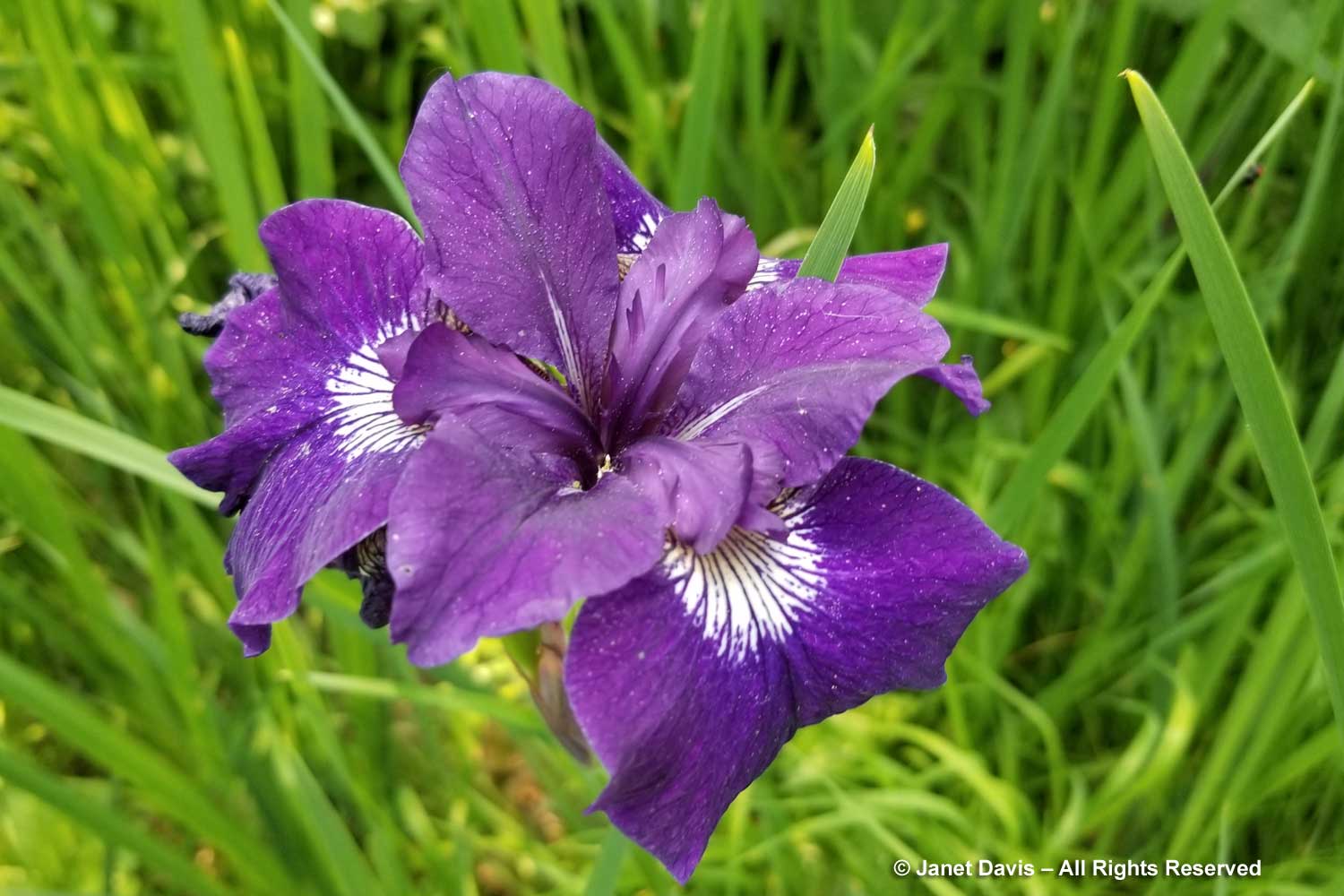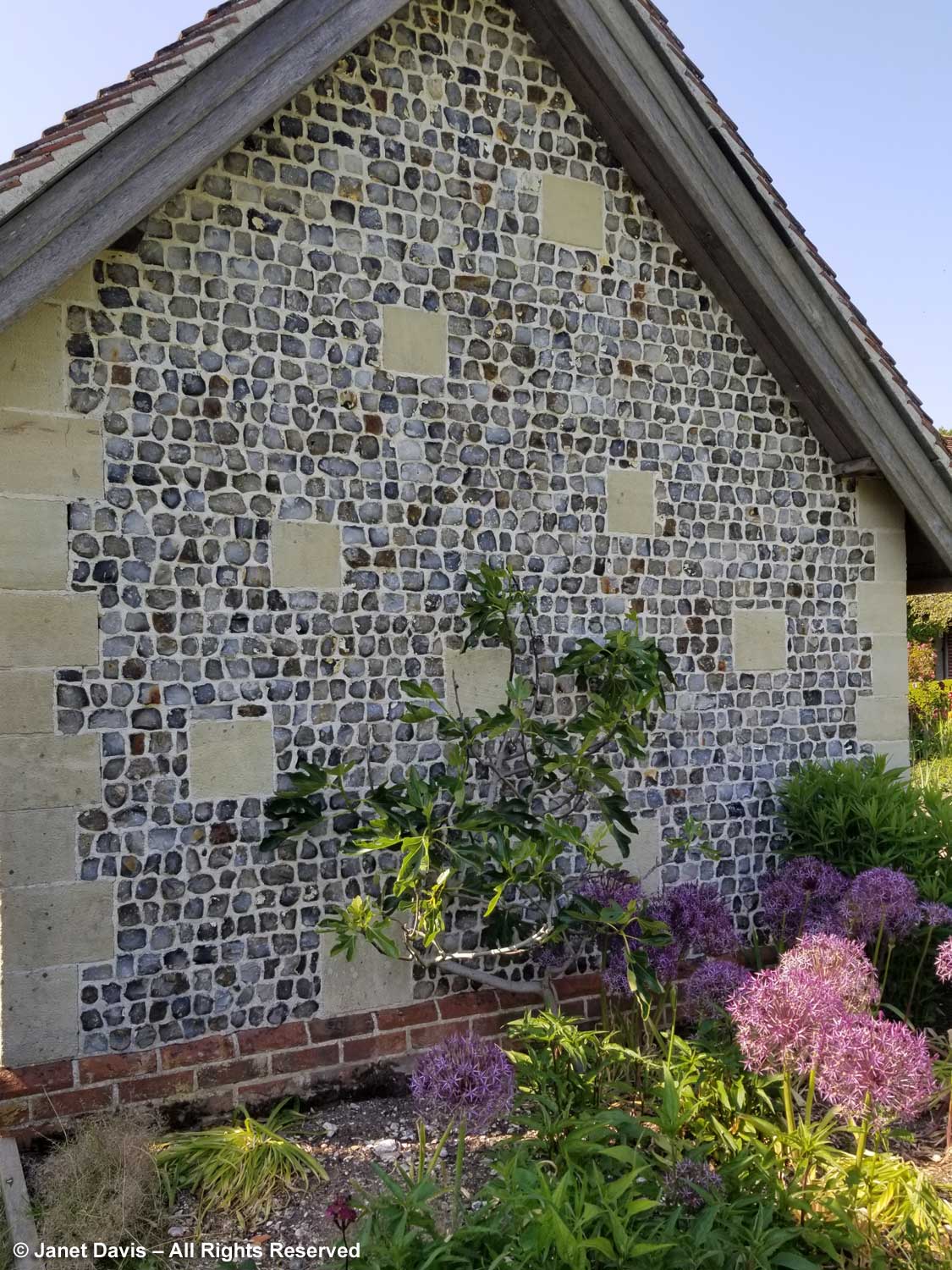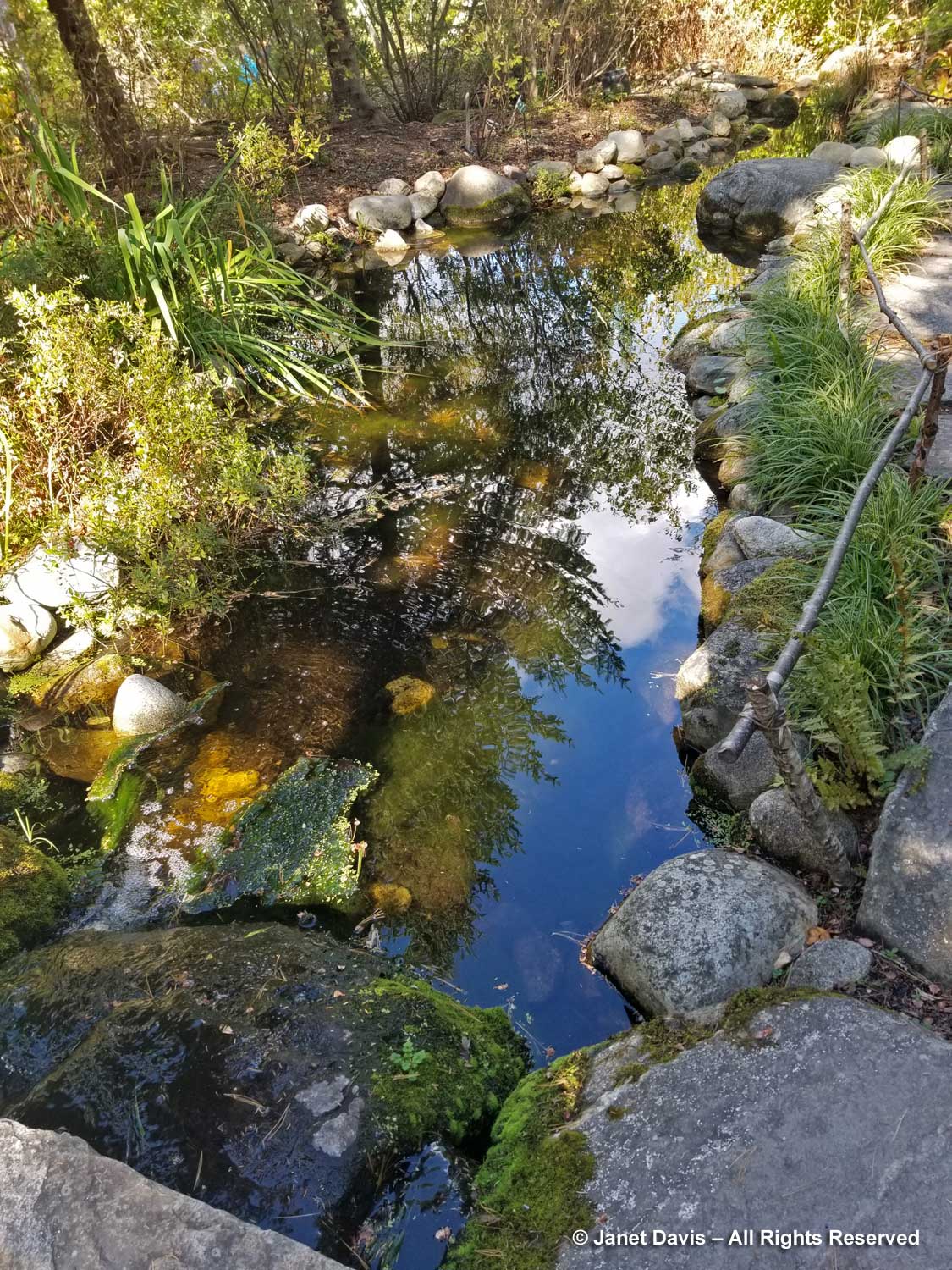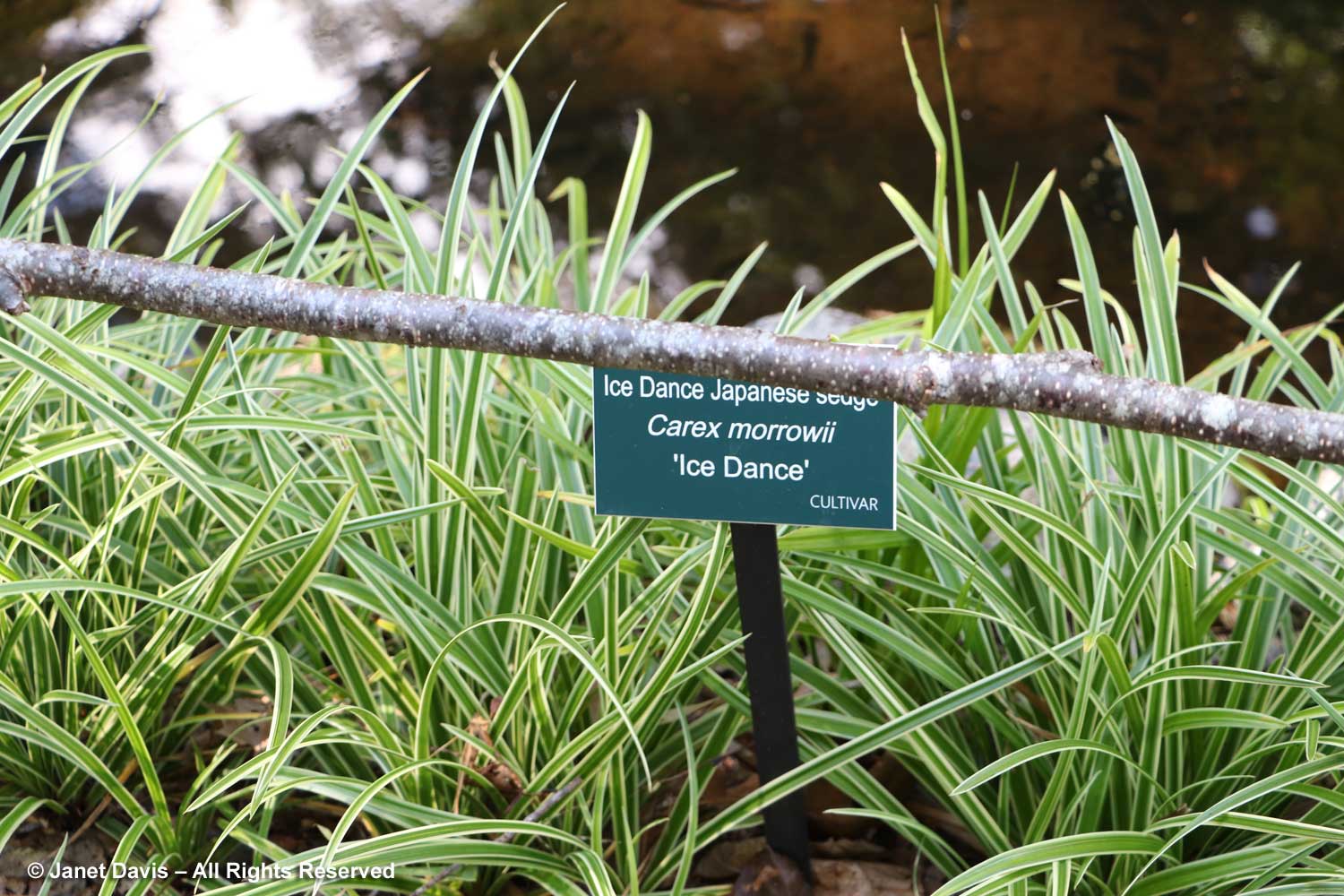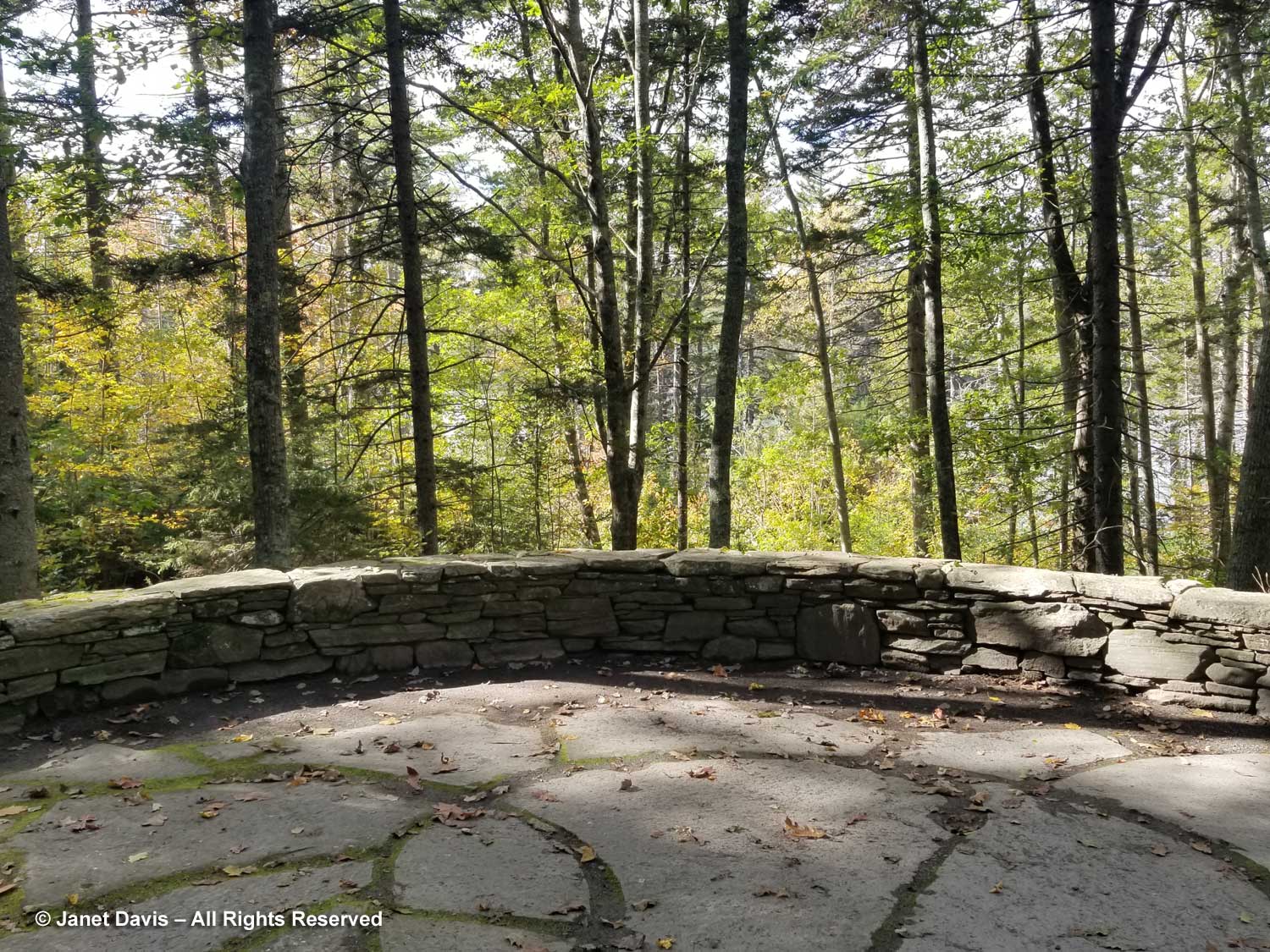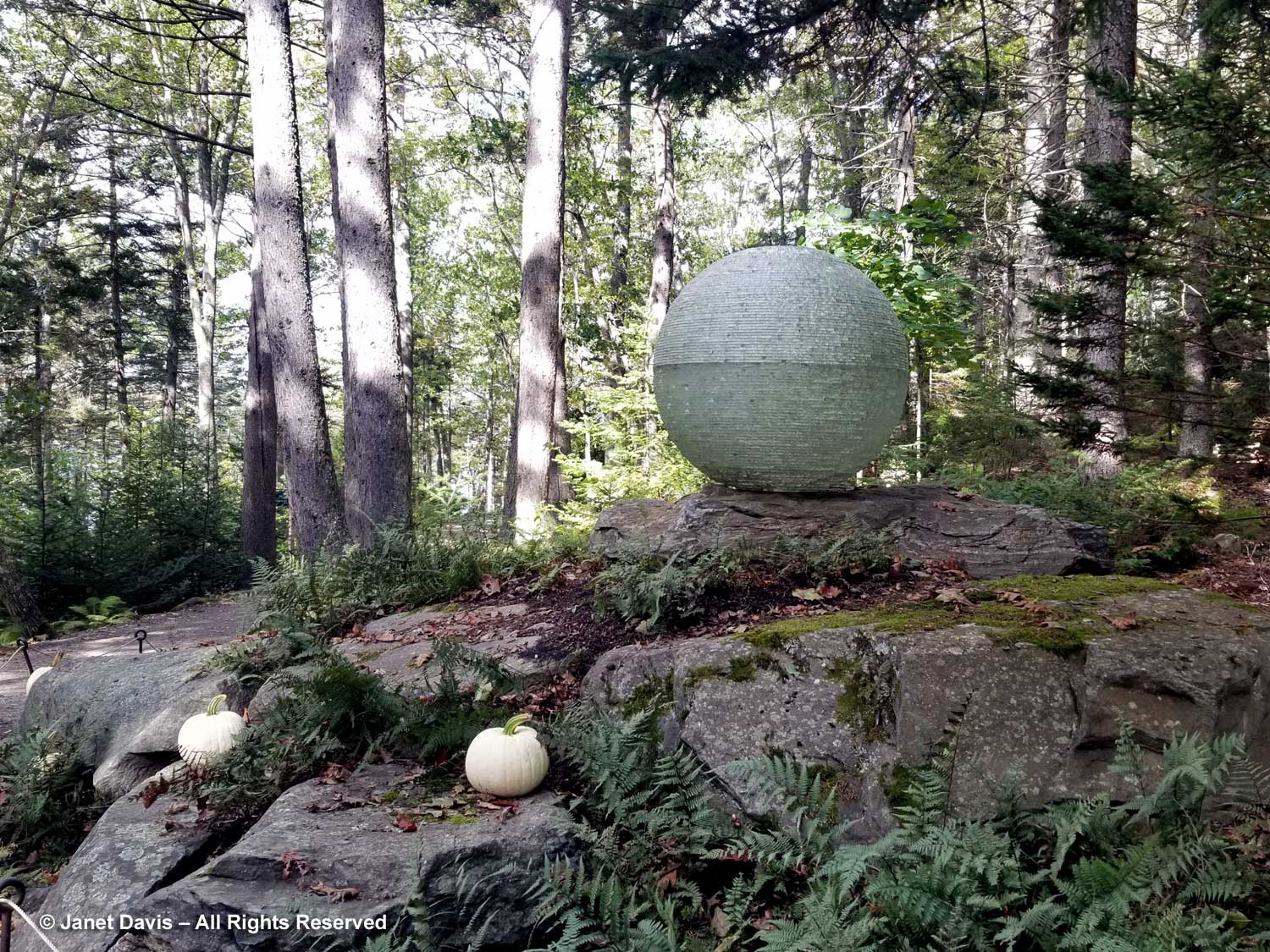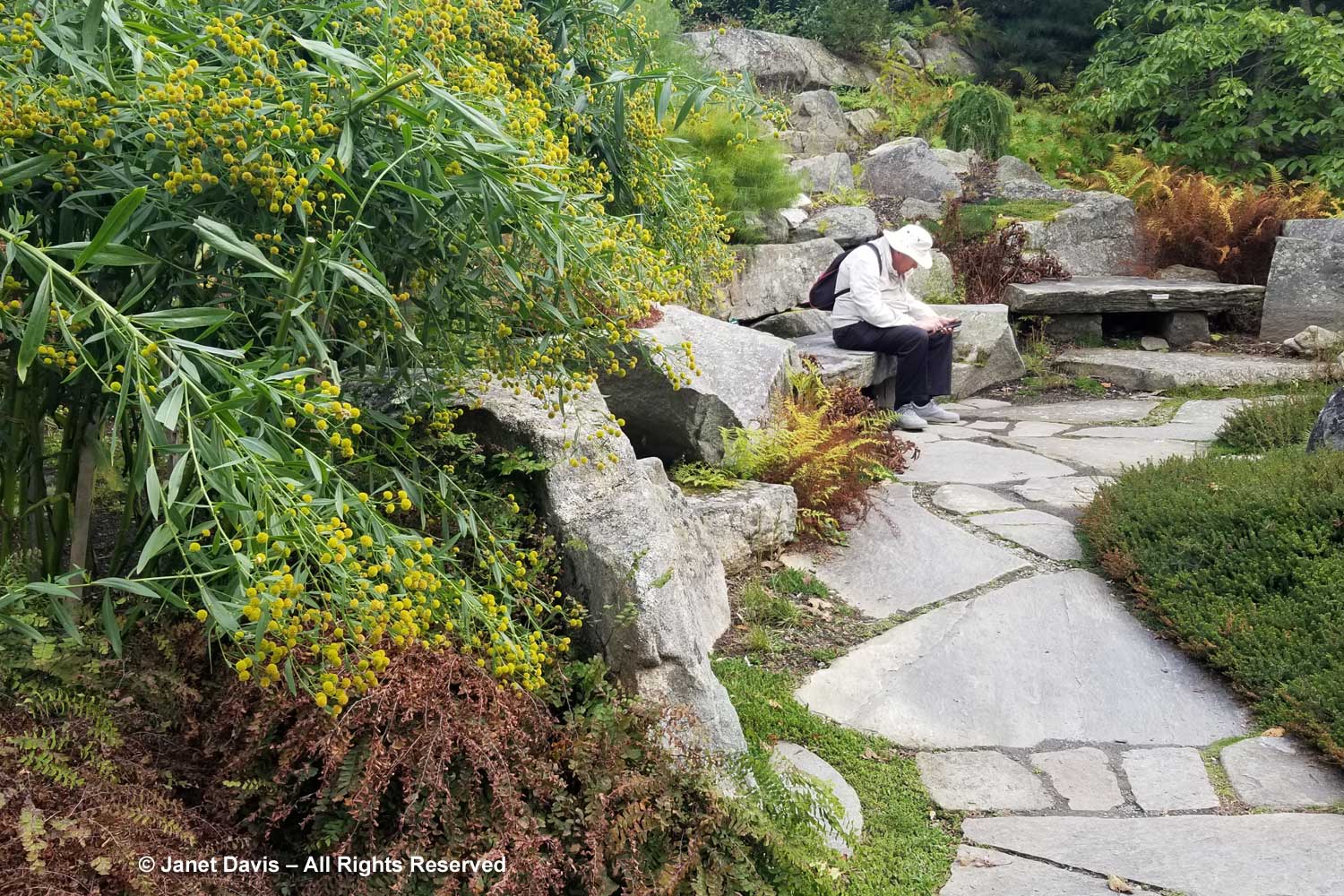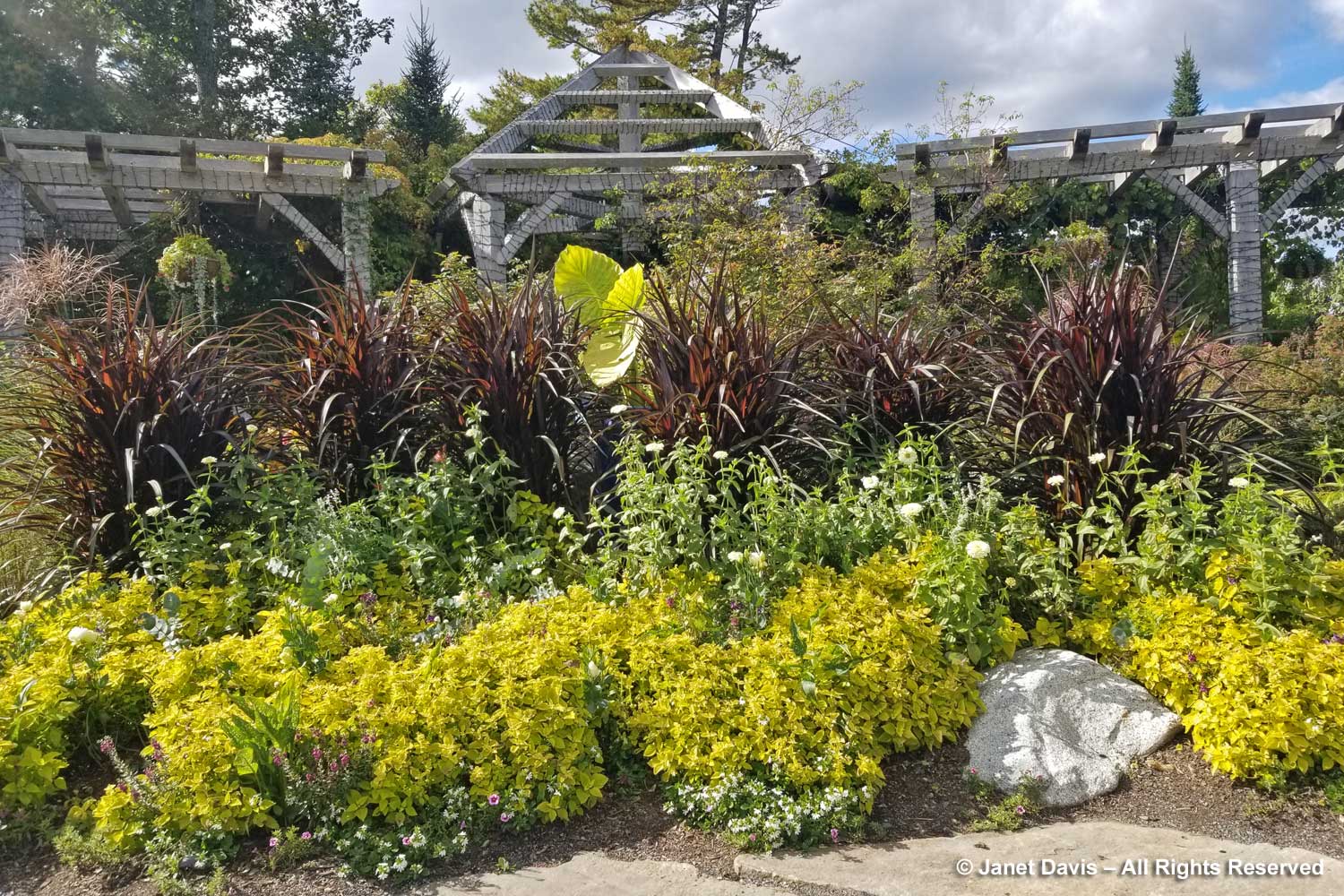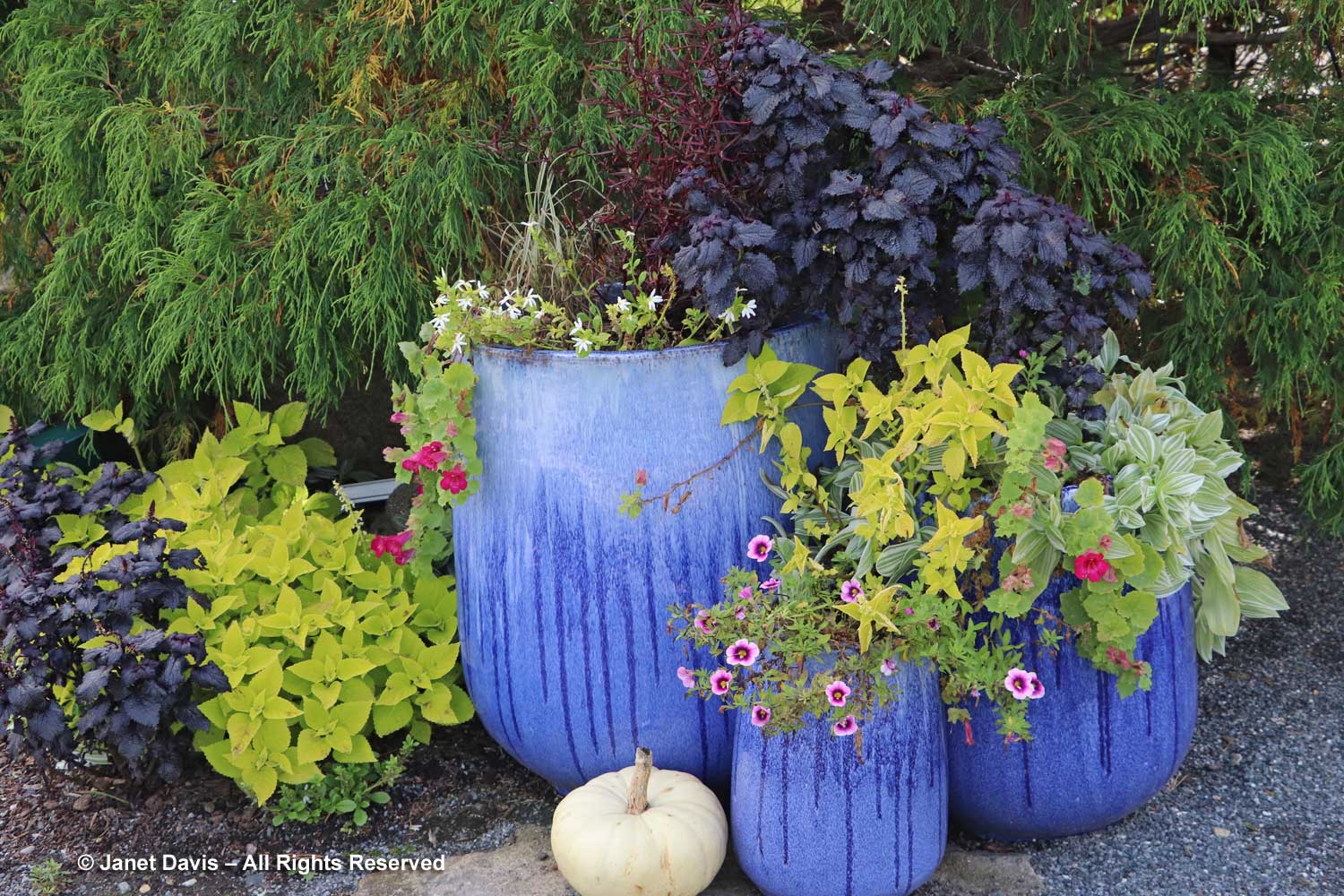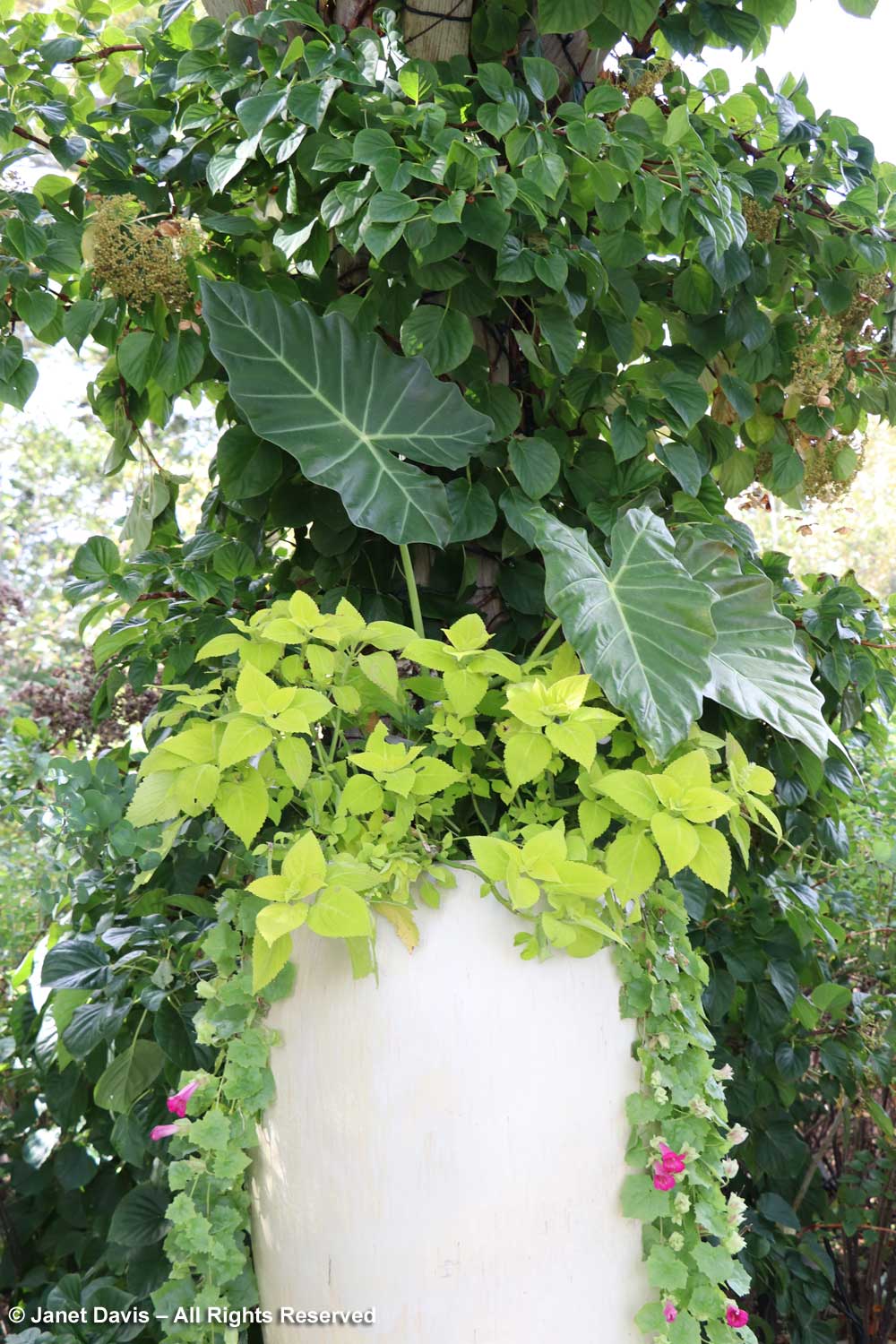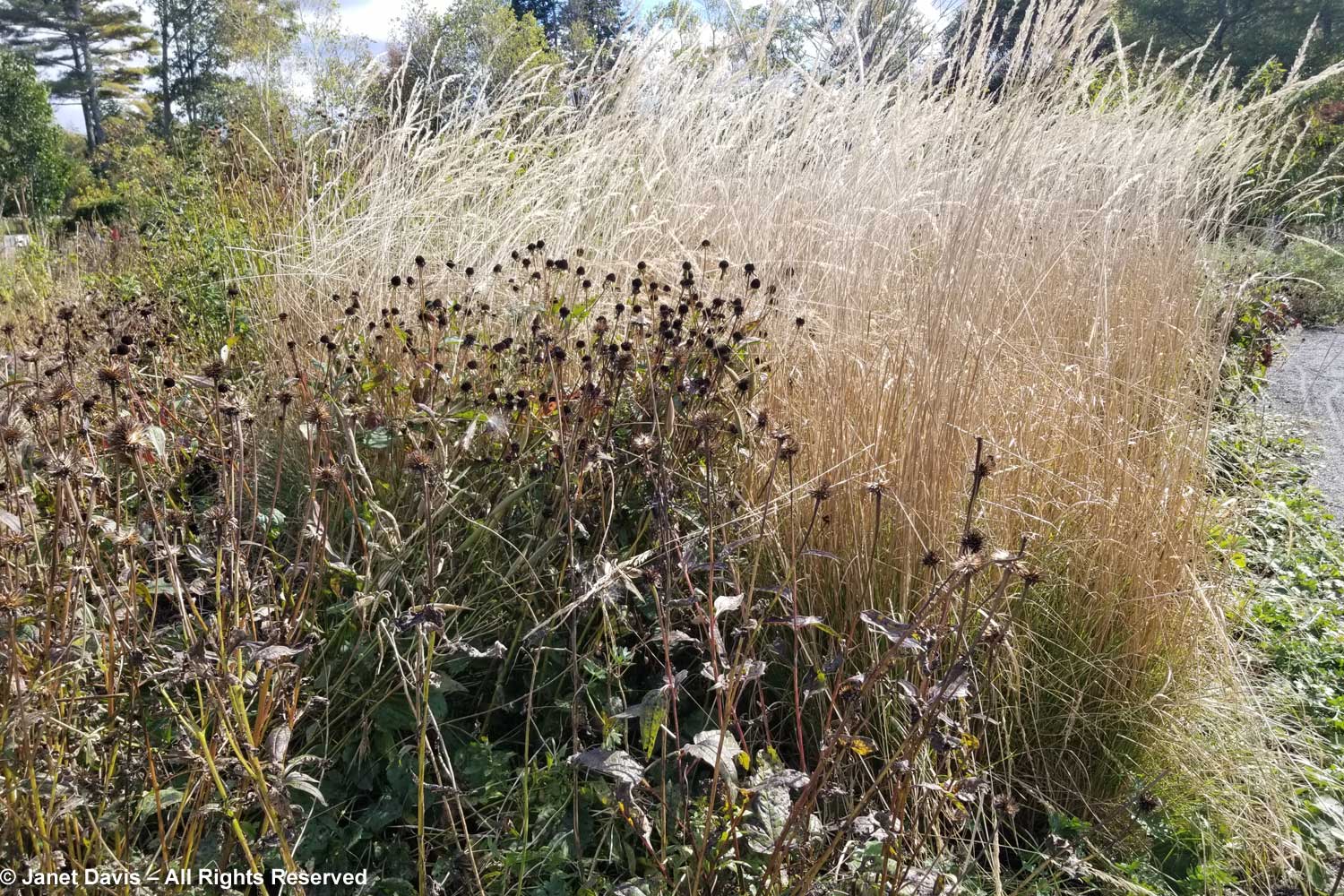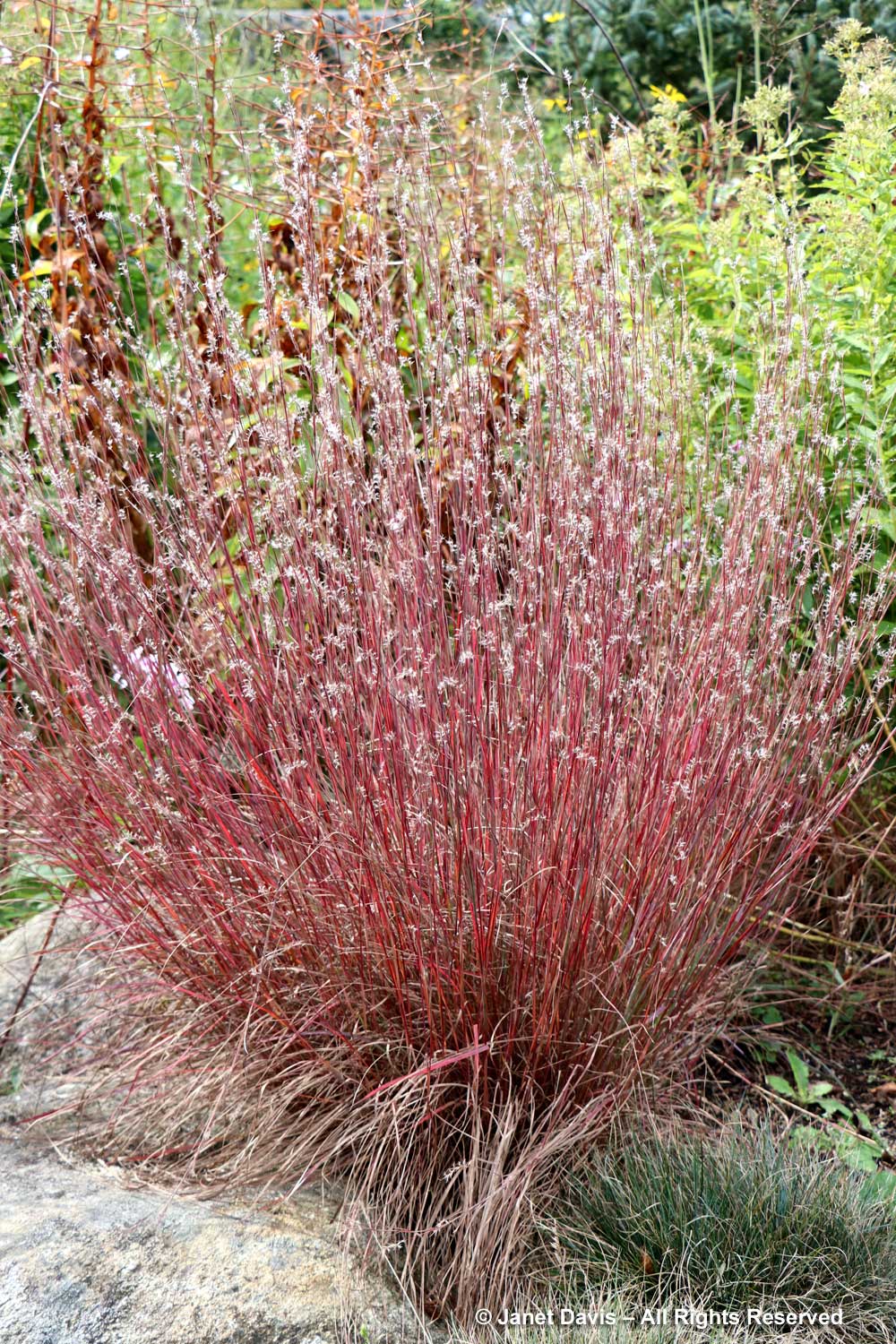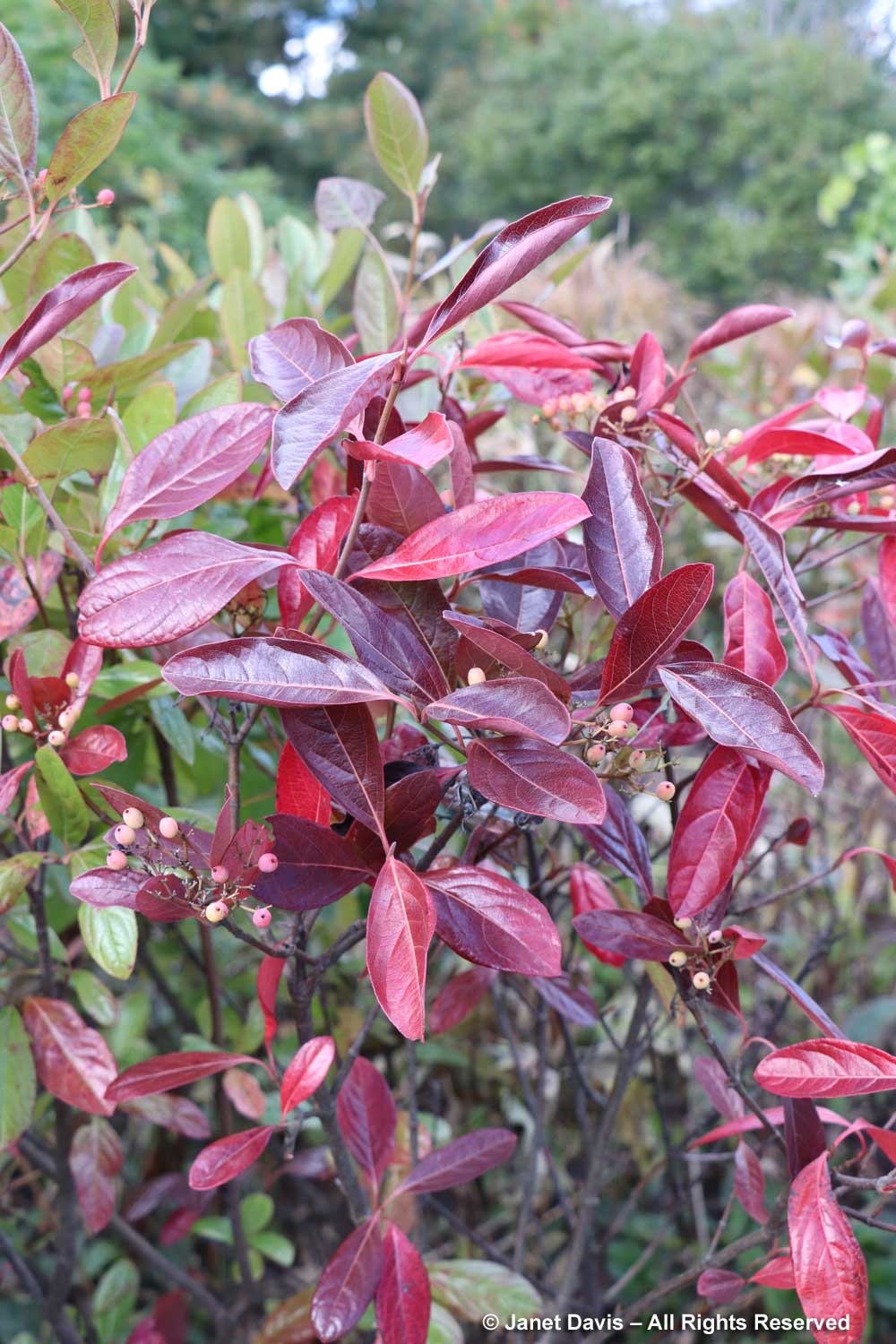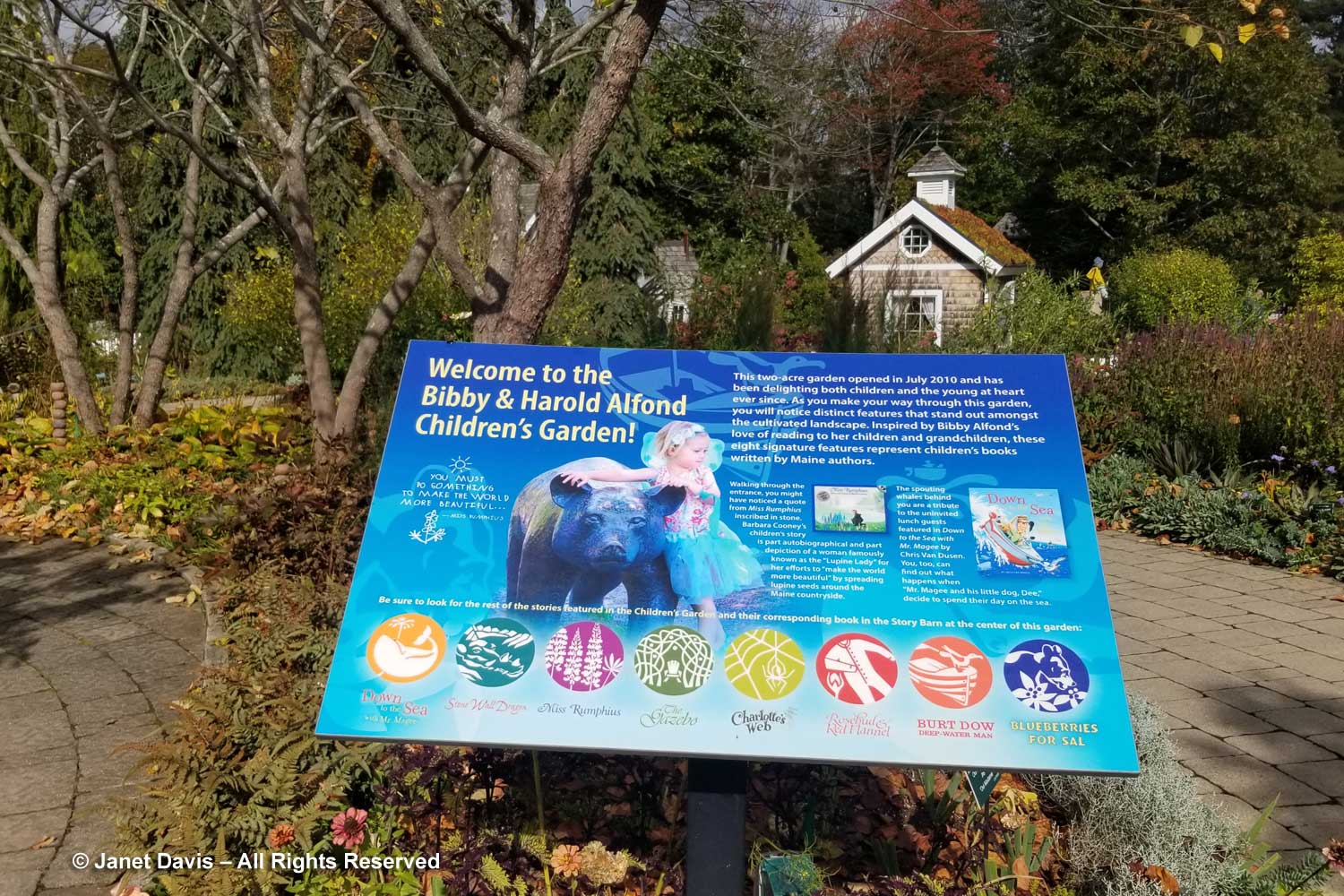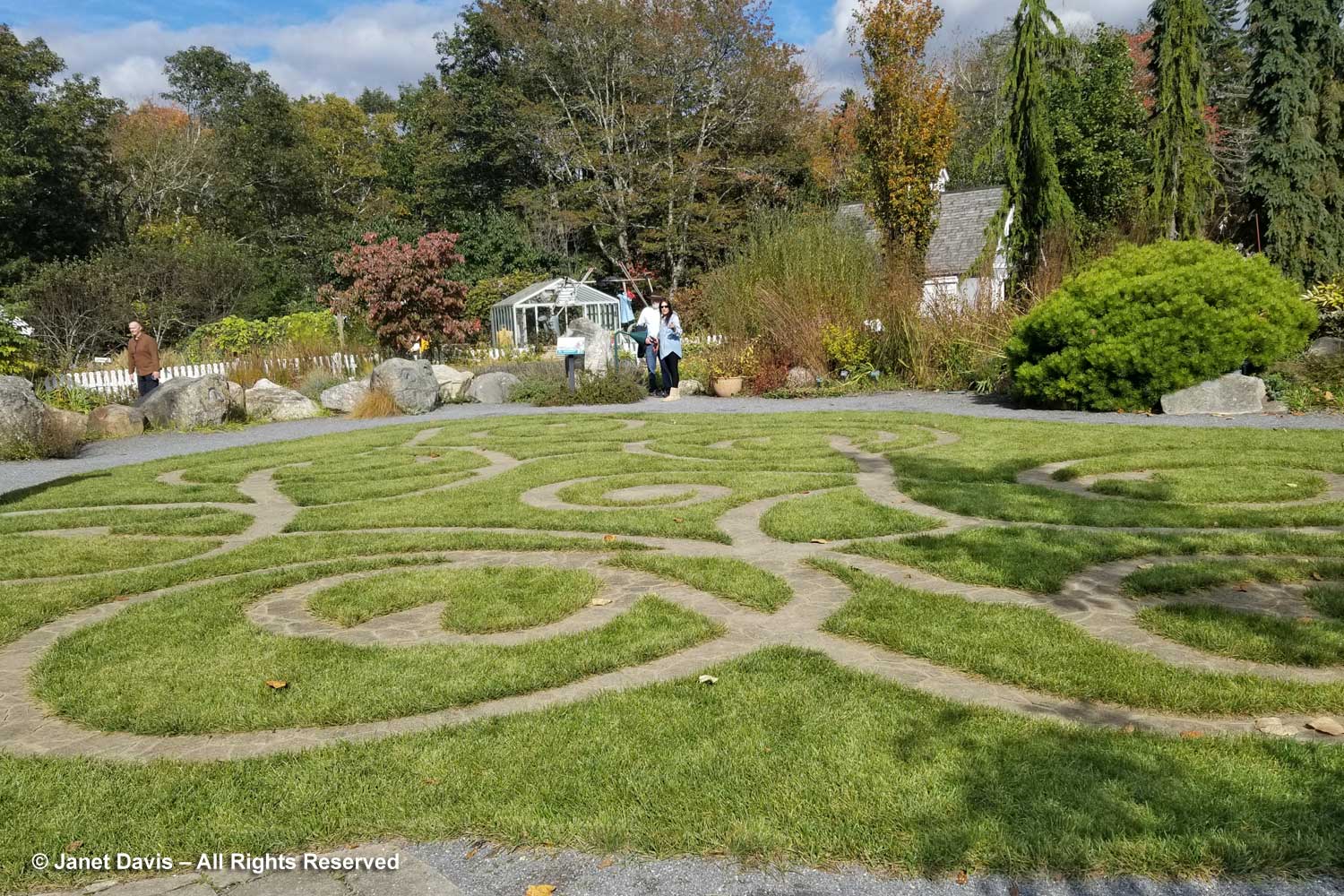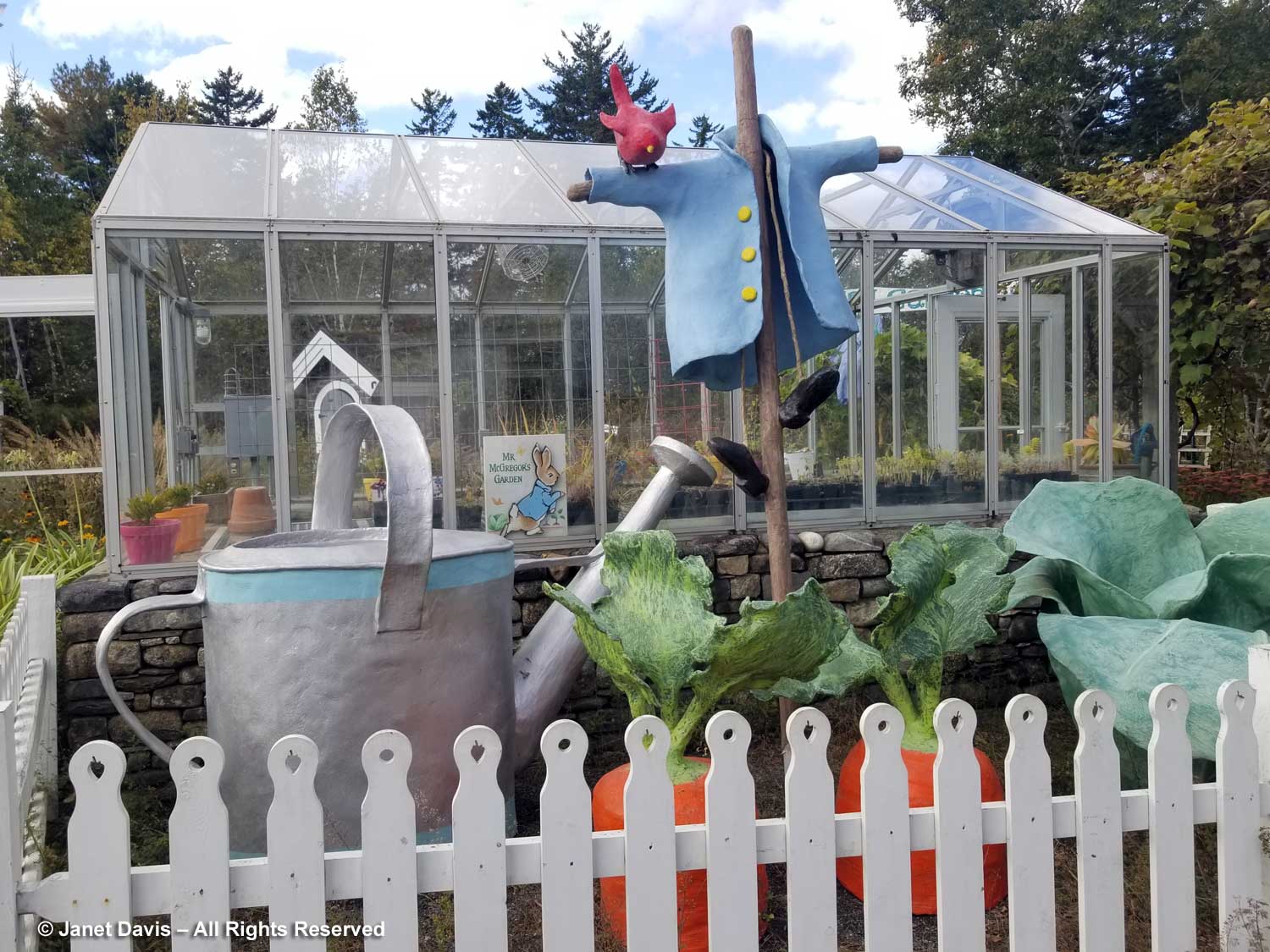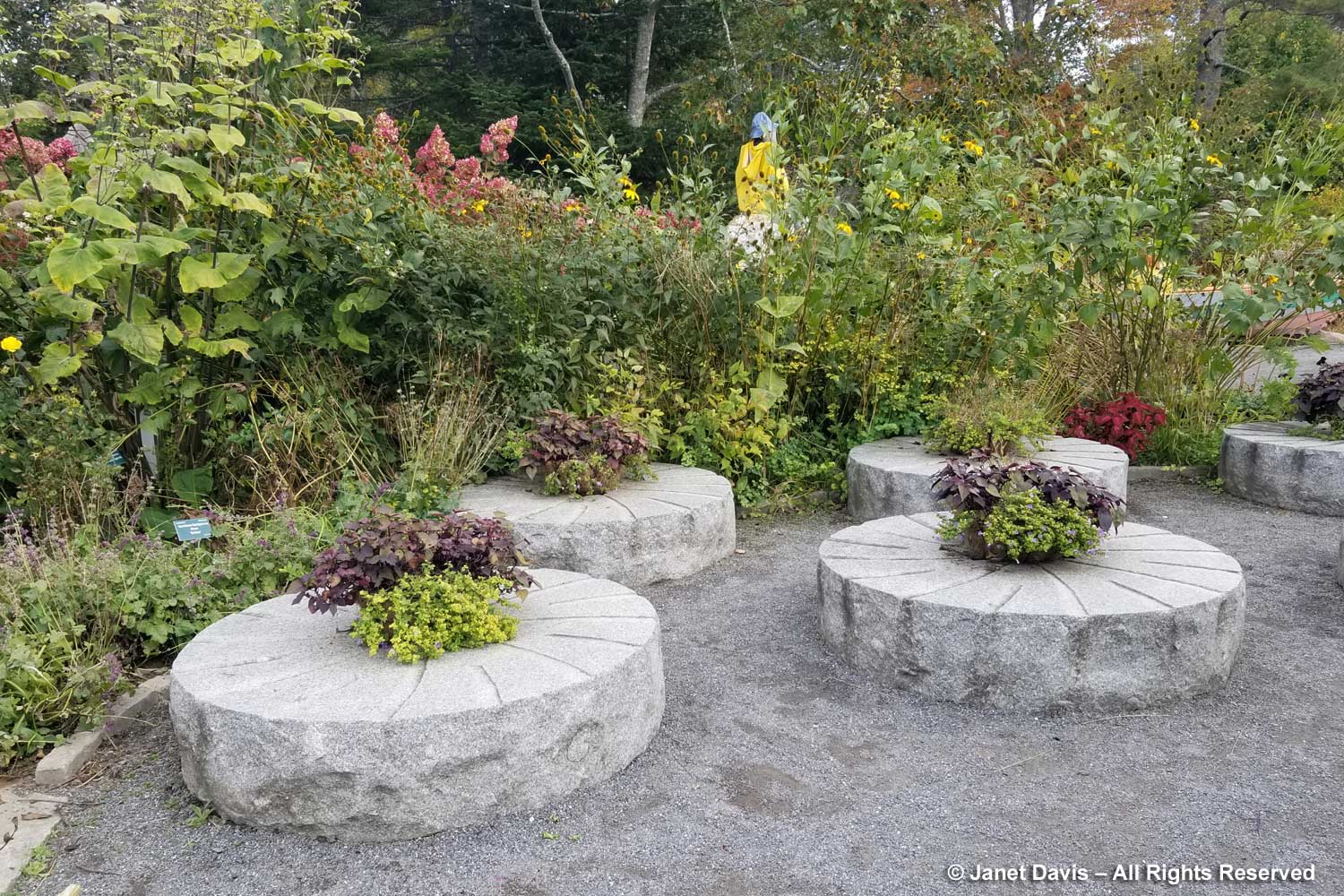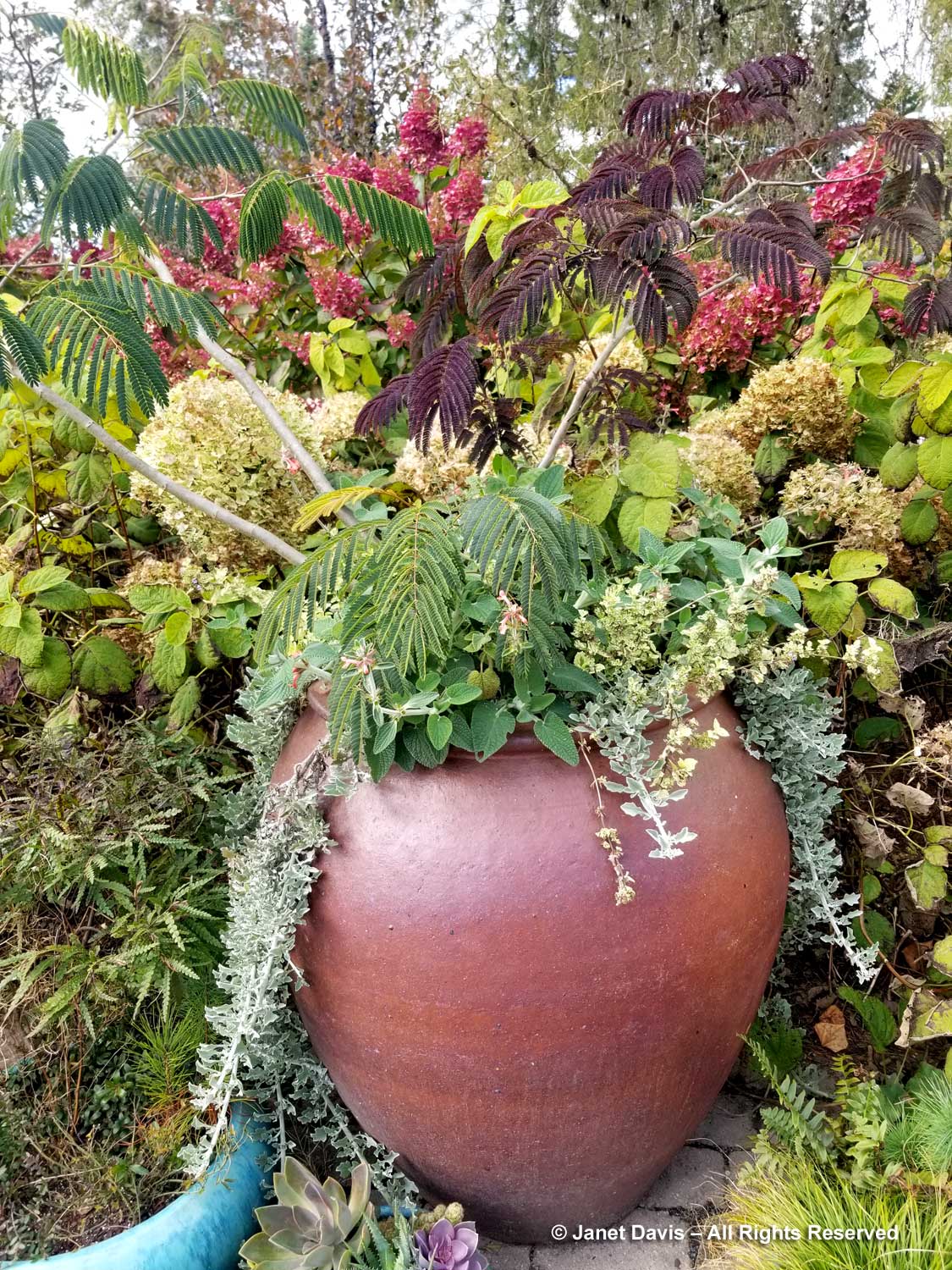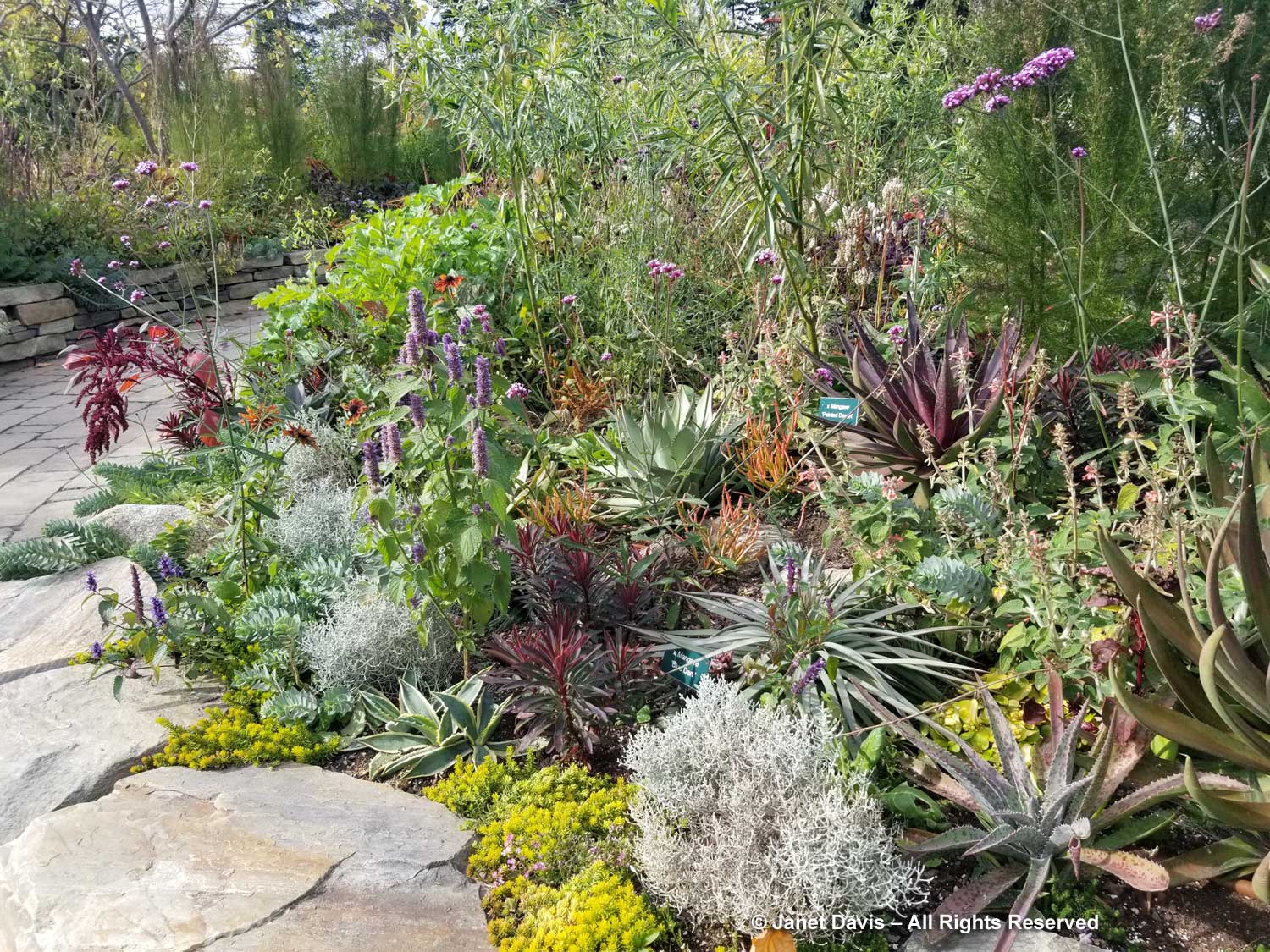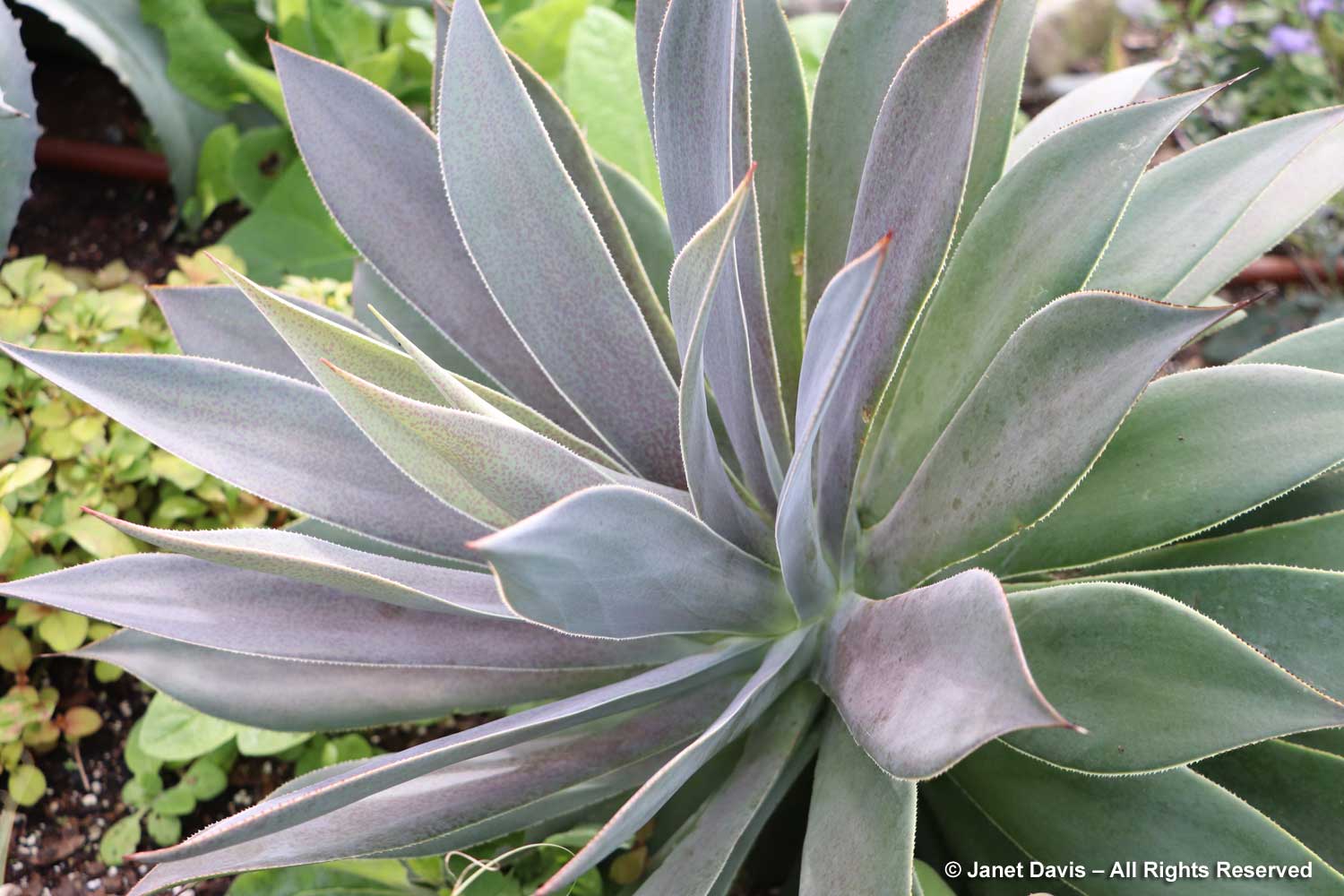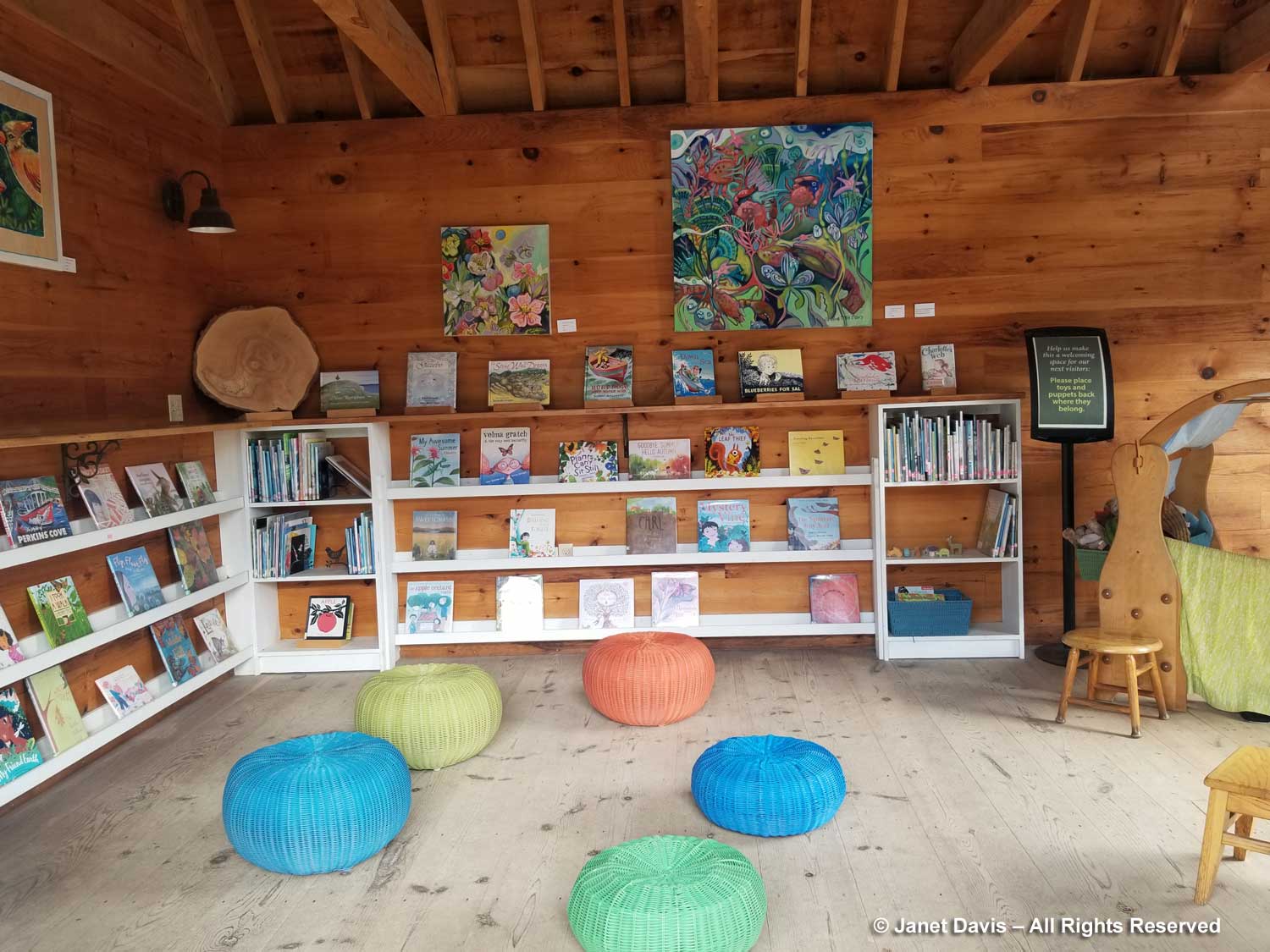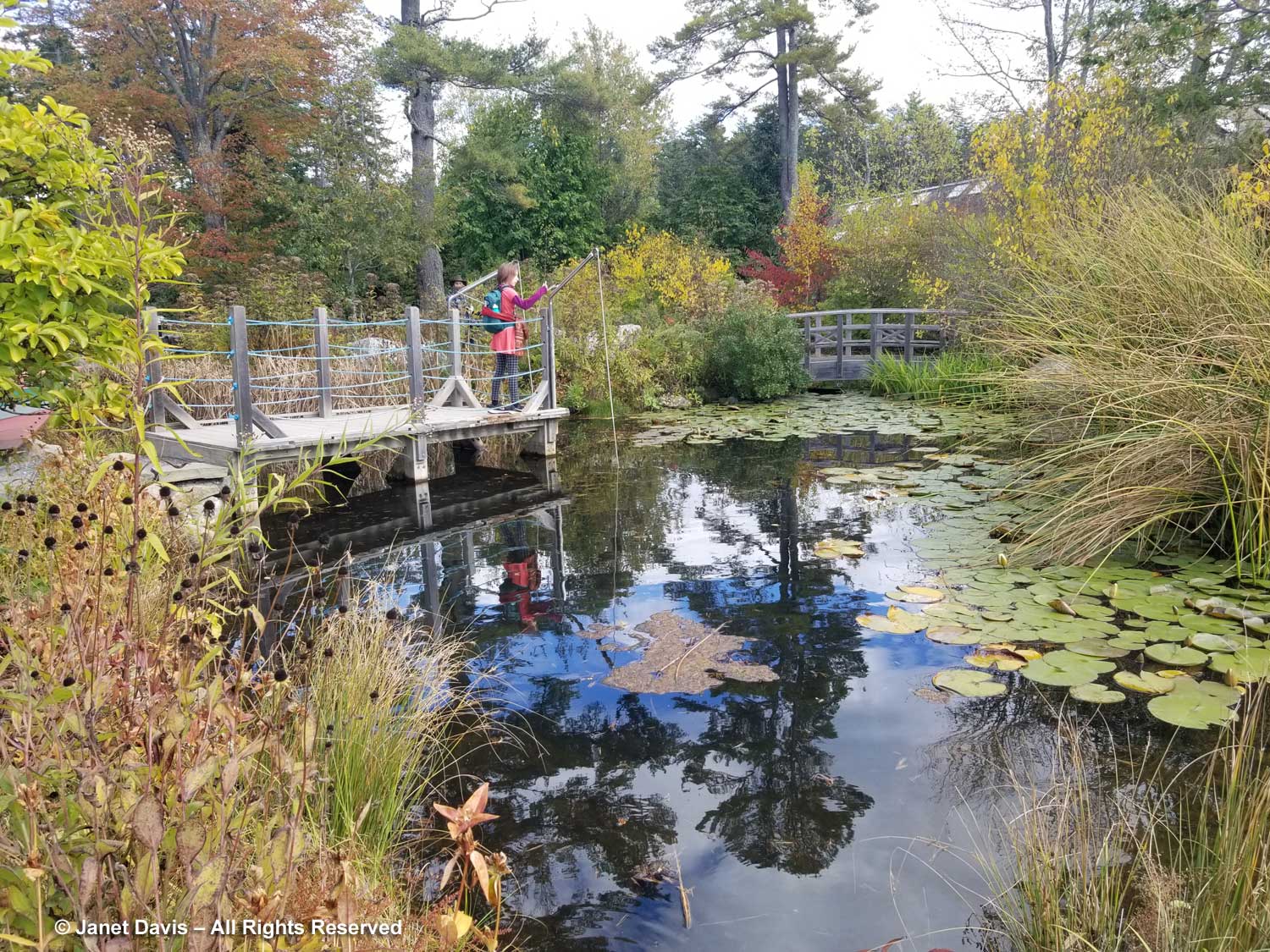My last blog took a tour around some of the big gardens at Chelsea 2024, but of course there is much more to the show. Lining the avenues throughout the grounds are booths of varying sizes showcasing art, clothing, garden furnishings, tools, pots and planters, house plants, etc. while inside the Great Pavilion are nurseries and plant societies, floral designers and ecological/scientific displays. Let’s start with the spectacular floral acronym for the Royal Horticultural Society, as interpreted in UK-grown peonies by the upscale floral designer Pinstripes & Peonies.
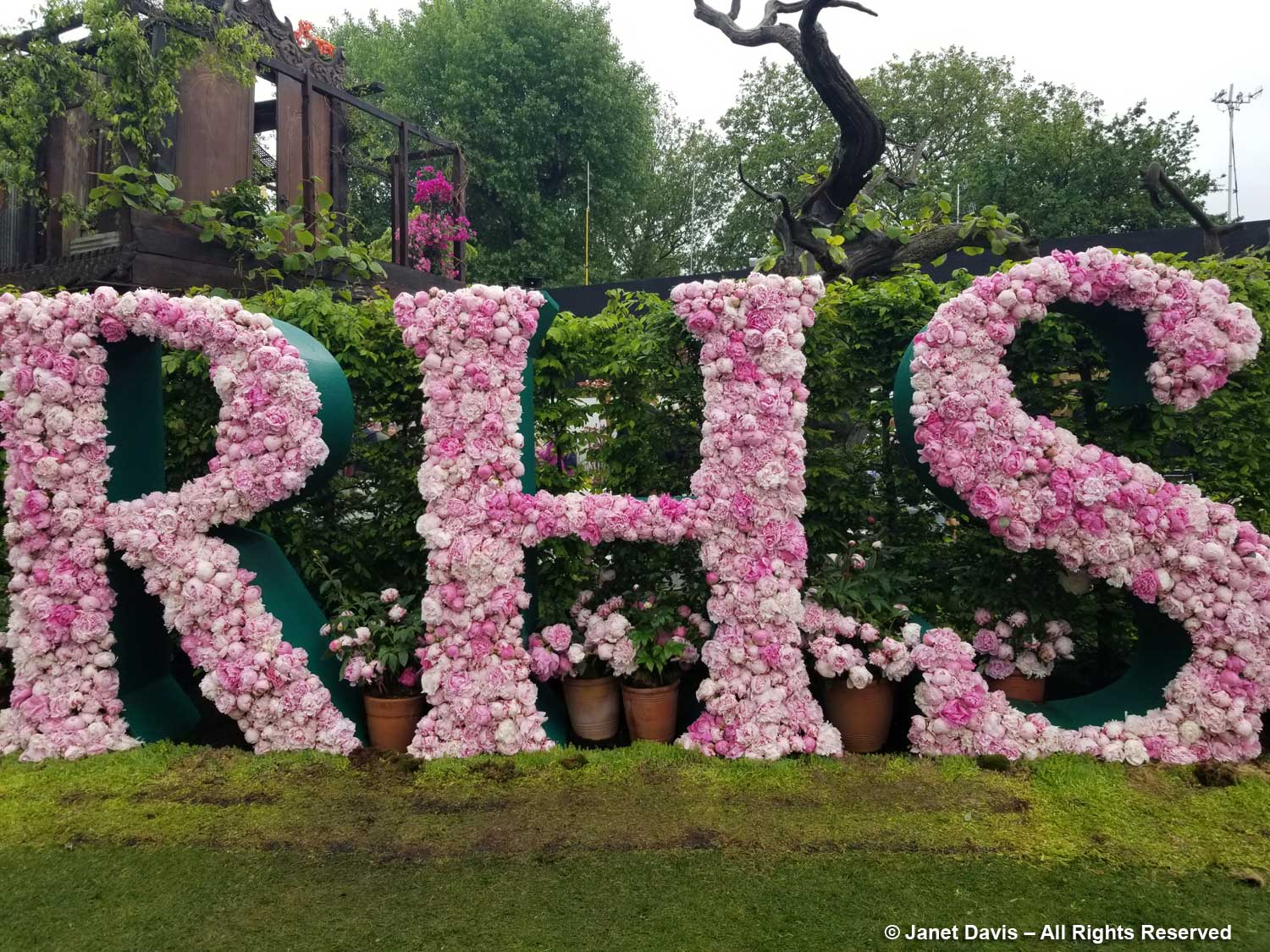
Here is a small bit of the letter “S”. Imagine how much work it took to condition all those peonies and then insert them into the matrix using “eco-friendly principles”….. which I assume must mean floral-oasis-free, though I wasn’t able to confirm that.
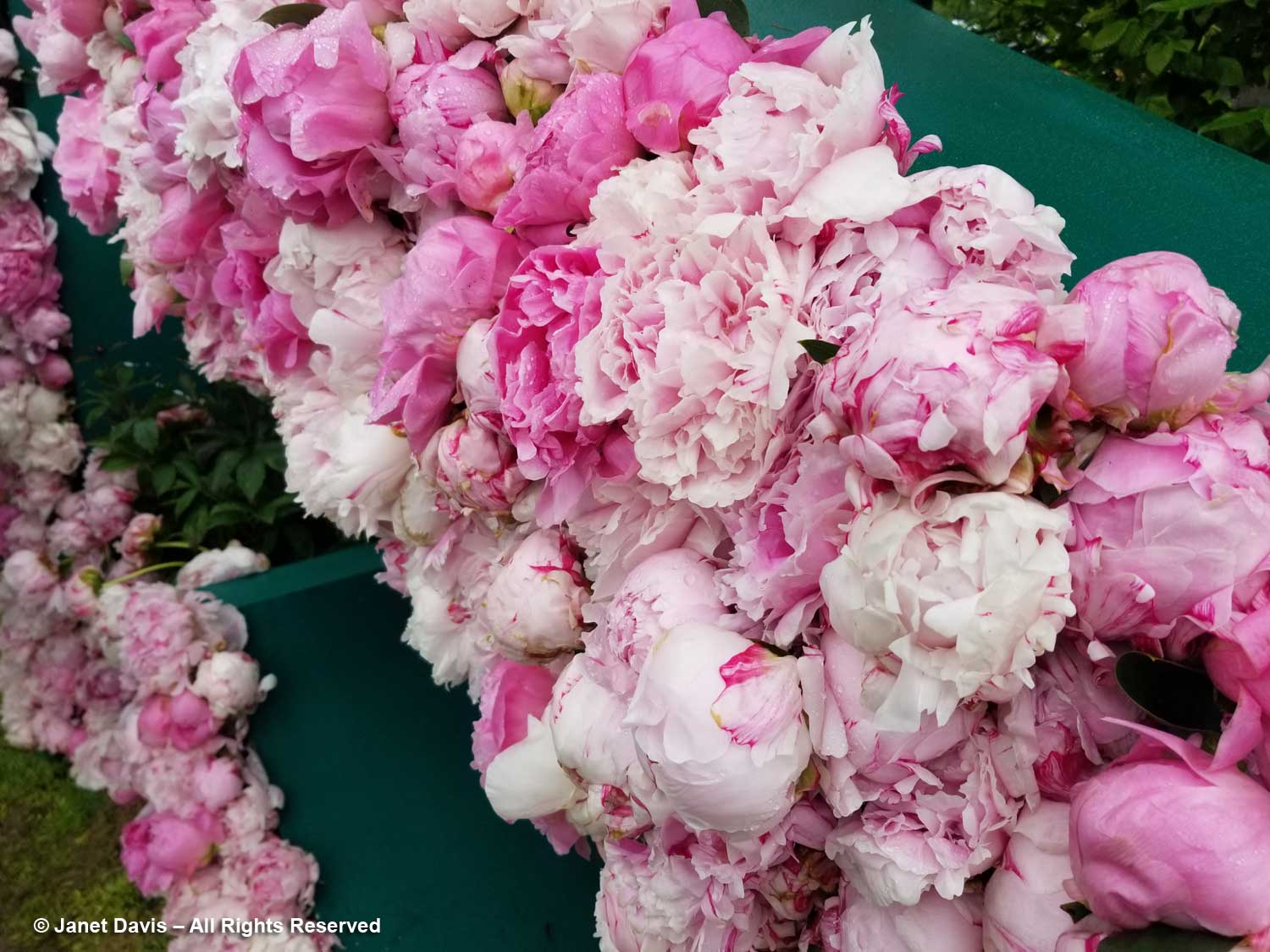
Artists have long been a part of Chelsea, which is now in its 111th year. The best show off their works in small gardens, like Scots sculptor James Parker below. who chose rodgersia, Siberian iris and foxglove to complement his stacked slate and bronze pinecone sculptures.

David Harber Sculpture was nestled in a leafy setting as well.

The Clancy Workshop took a more lighthearted approach at Chelsea. Architect/artist Mike Clancy positions his sculptures, like these animals, between art and architecture using traditional and digital techniques.
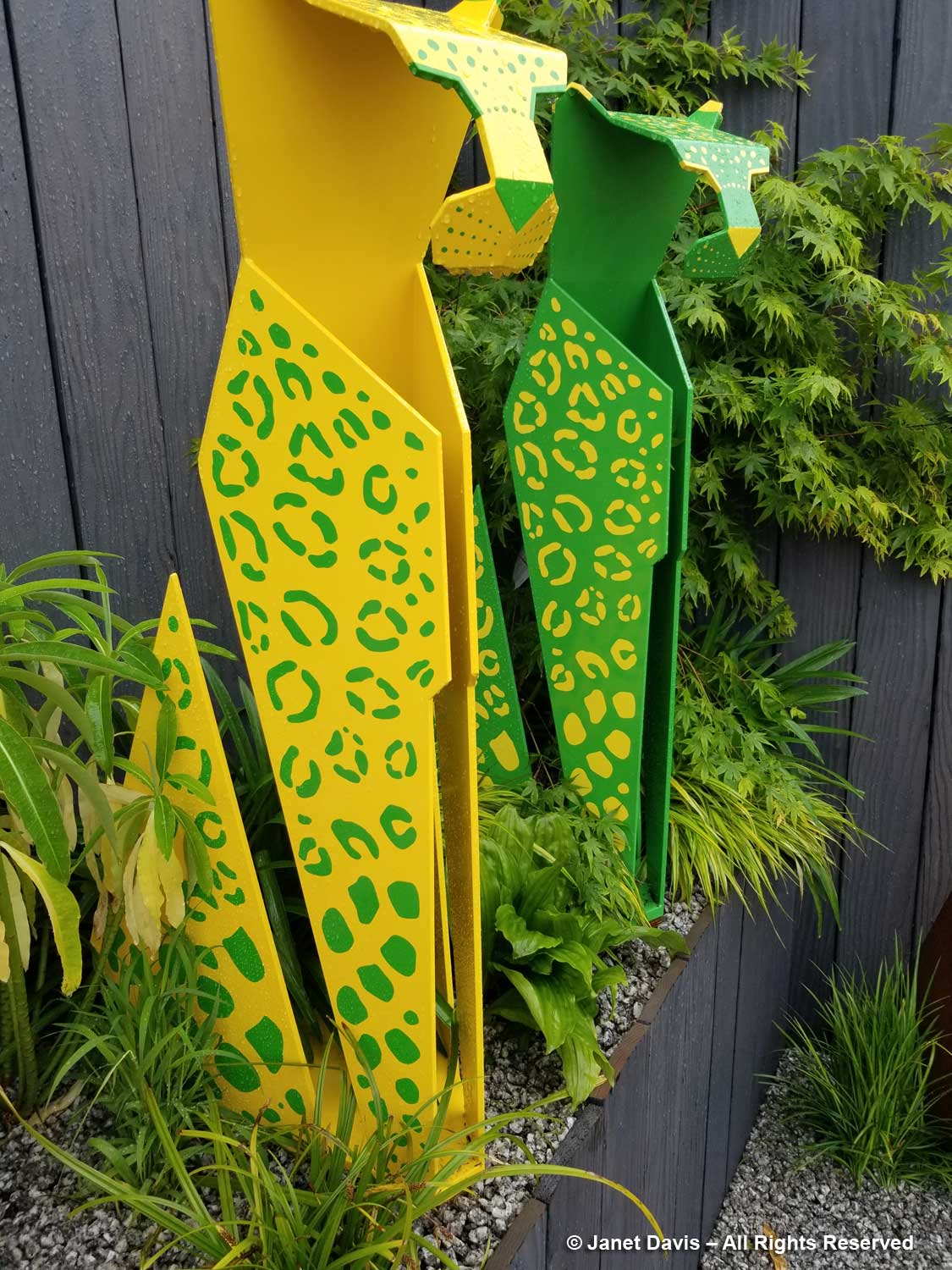
I’ve taken the odd stroll through Harrod’s in London but I wasn’t aware there is also Harrod Horticultural – unrelated to the department store, but obviously benefiting at the show from the similarity in names. Its horticultural line is an offshoot of its business as a long-time supplier of sport goalposts – including to the Olympics!
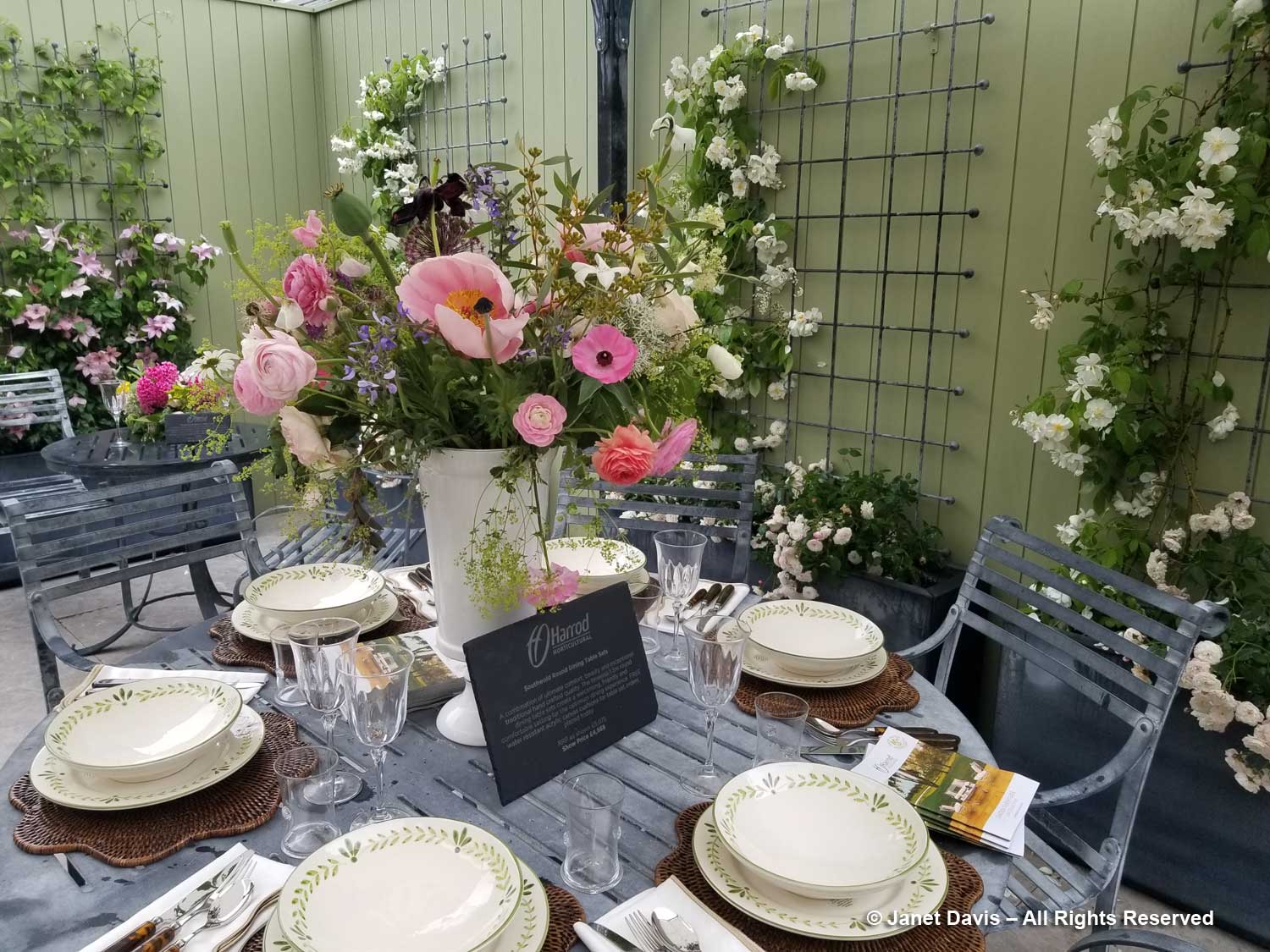
Garden buildings come in all shapes and sizes in England, and those displayed by Scotts of Shrapston, celebrating its 60th anniversary, seemed quite modest.
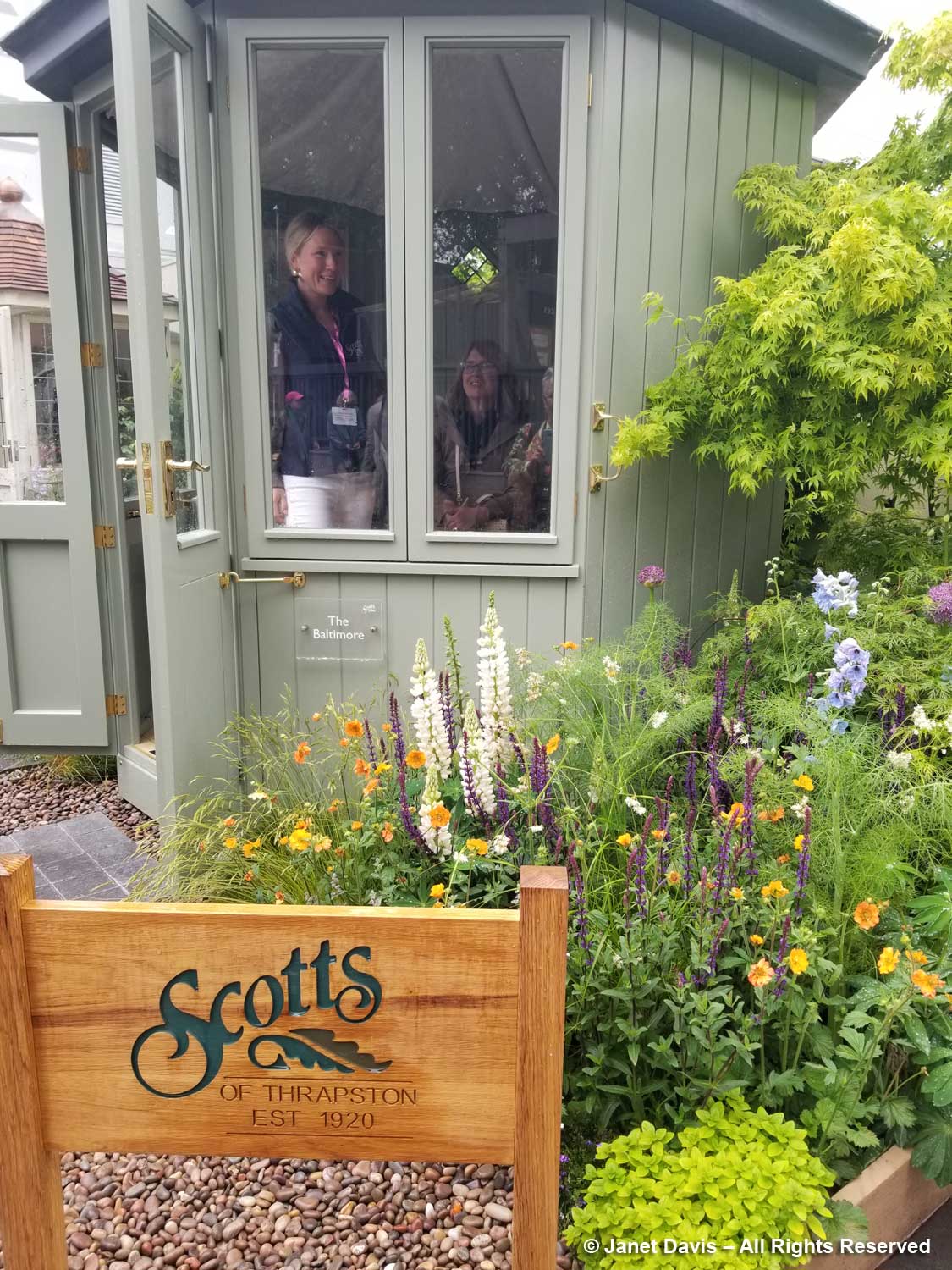
But it was the lovely landscaping around their shed that I loved featuring Siberian iris and an unusual umbellifer, Baltic parsley (Cenolothium denudatum).
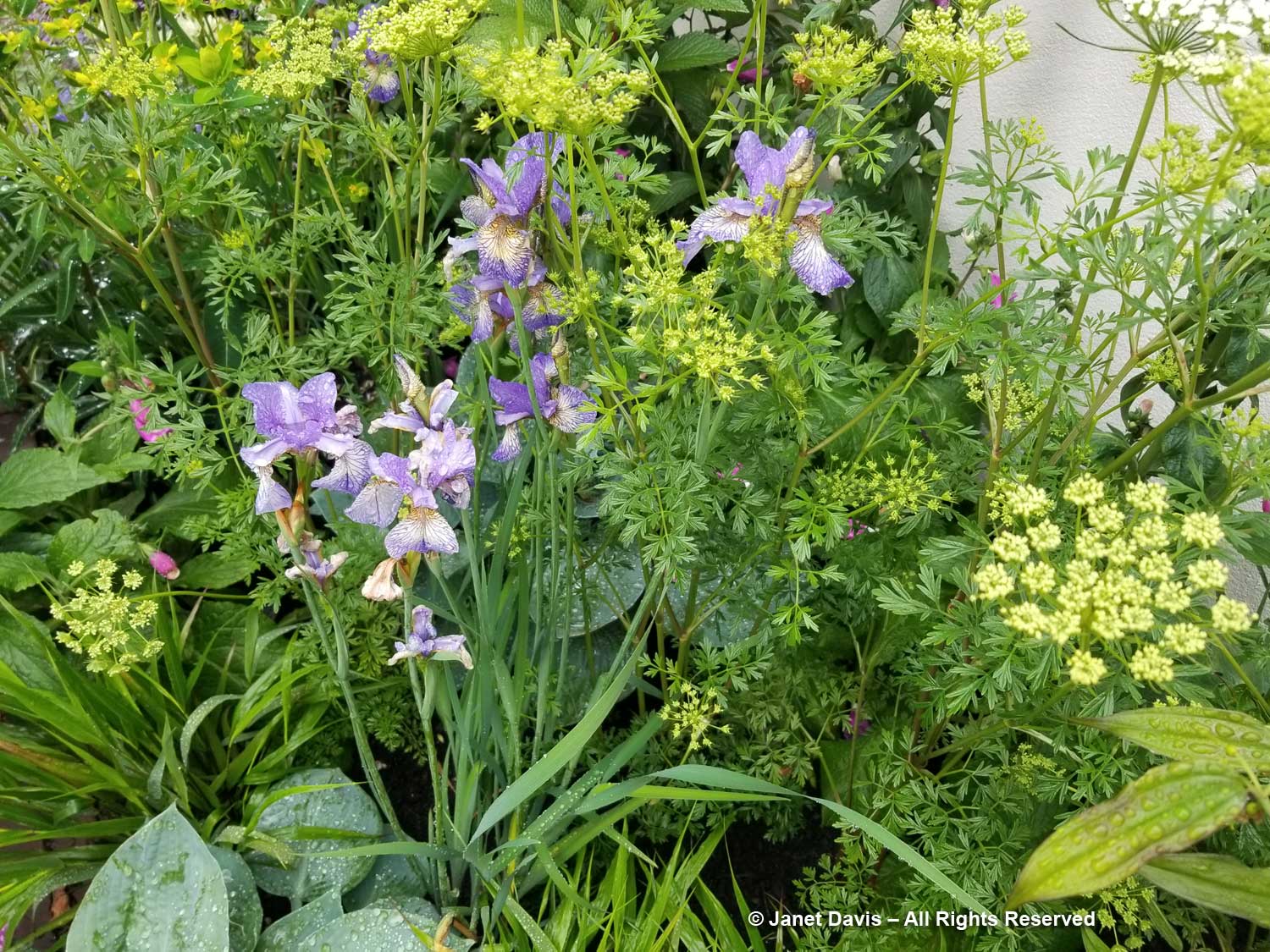
At Garden Art Plus Limited, this 18th century French limestone trough with lion’s paws feet and mossy patina could be had for the trifling sum of £12,500.

Solus Decor started in “a humble single car garage in 1998” in Vancouver, B.C. where they now have an 18,000 sq ft location, and expanded to four locations worldwide from which they export to 35 countries. They make fire pits, fire tables and fire bowls, and if those get too… fiery…

…. they also have compact water fountains.

As the rain increased, it was a pleasure to wander into the Great Pavilion where Pheasant Acre Plants were showing off their gladioli.

Barbados Horticultural Society displayed fabulous floral designs featuring warm-coloured tropical plants.
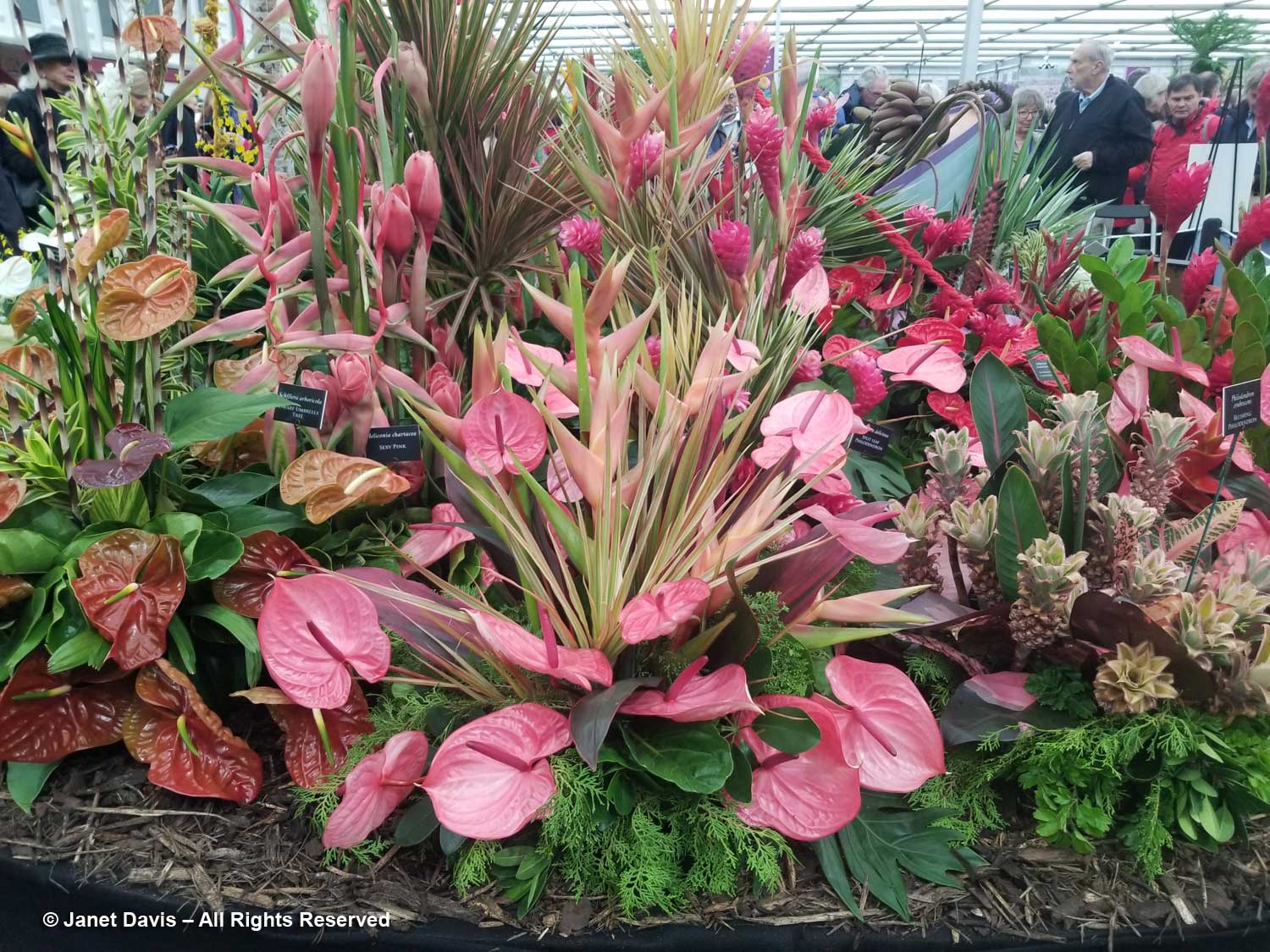
Moore & Moore Plants are woodland specialists and their exhibit was a lush celebration of ferns and flowering shade-lovers.
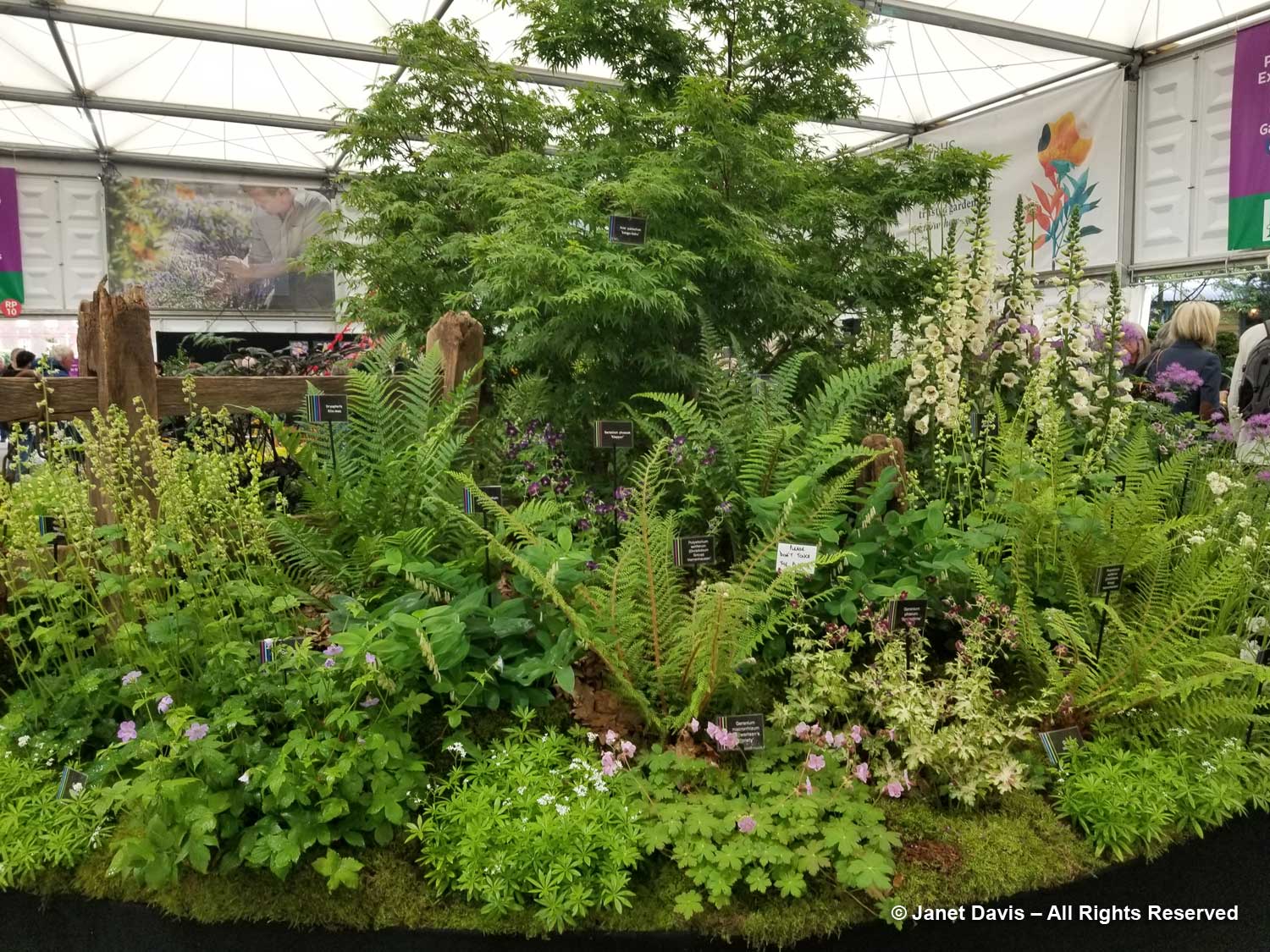
I was enchanted with the stunning display of plant treasures by Kevock Garden Plants of Scotland, including many beautiful meconopsis species….
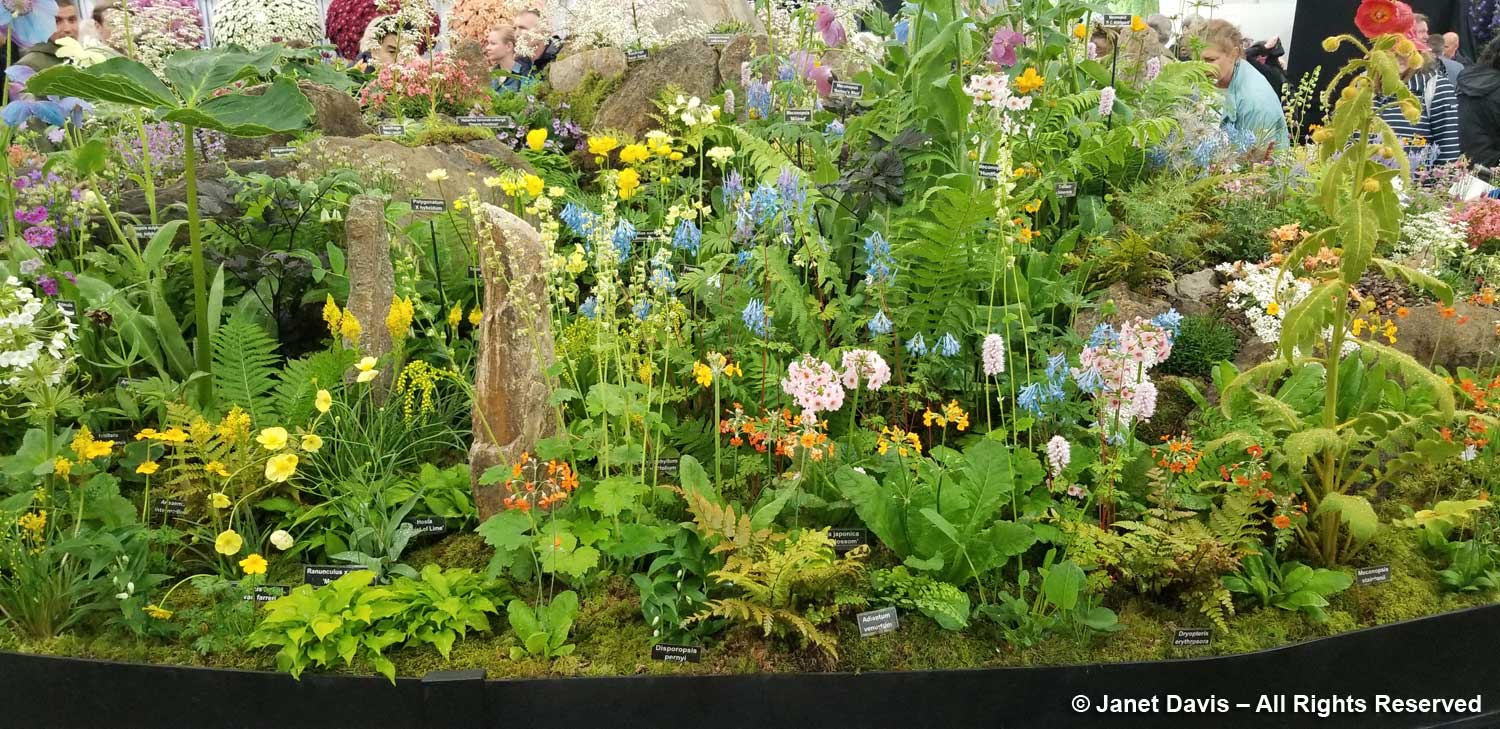
….. such as the rare, red M. staintonii.

Look at all those primulas!

The display was designed by Monica Wylie and I asked her to pose for me for this blog.
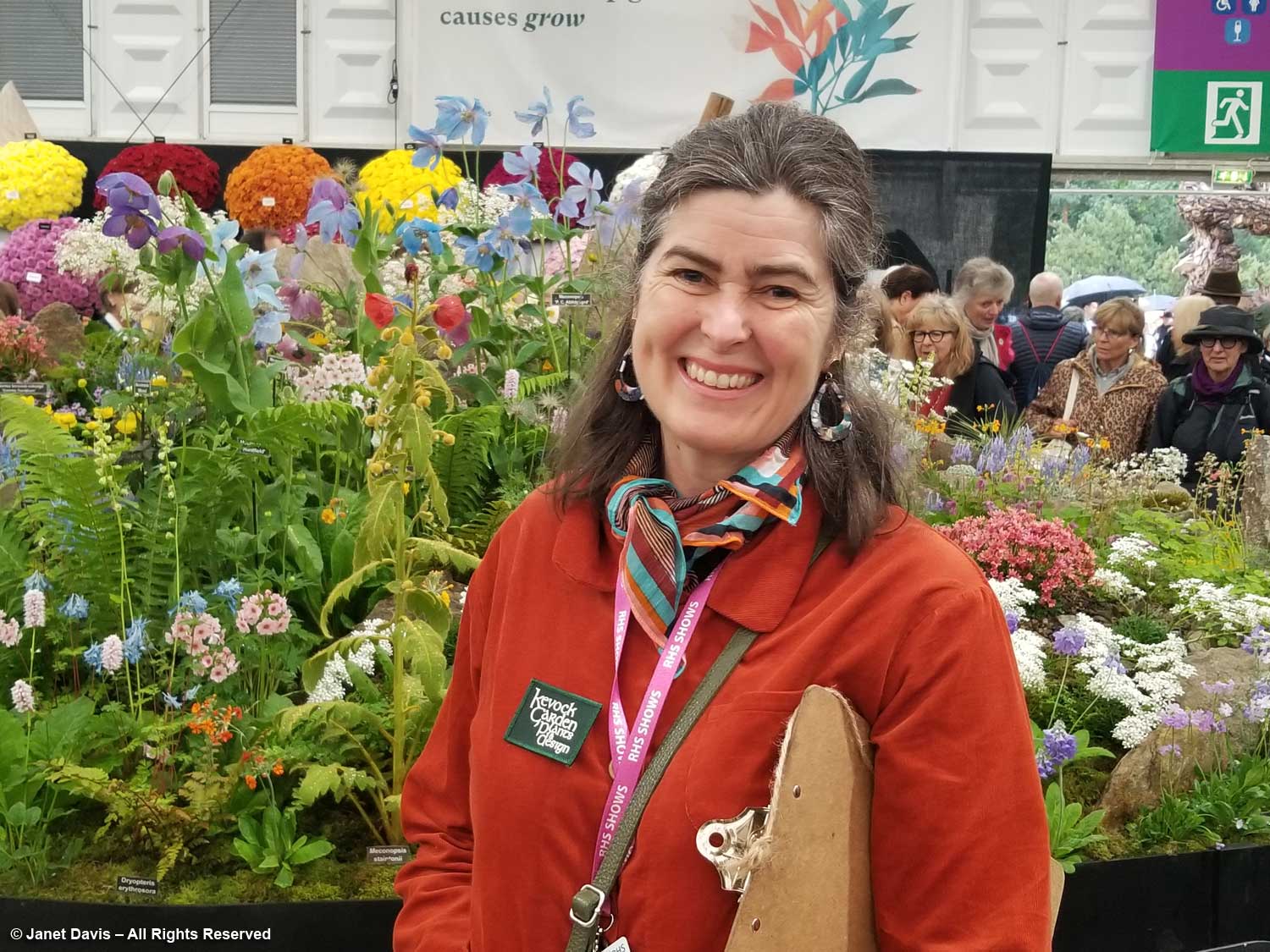
And what a serendipitous delight to find my Seattle ‘horty’ friend Sue Nevler and her husband Steve Gatti admiring the Kevock exhibit. After hugs and introductions all round, Sue & I posed with Kevock’s owner David Rankin – with Himalayan poppies posing above us! We were heading on to Tuscany to see our youngest son and Sue and Steve were heading to Malta, then France.
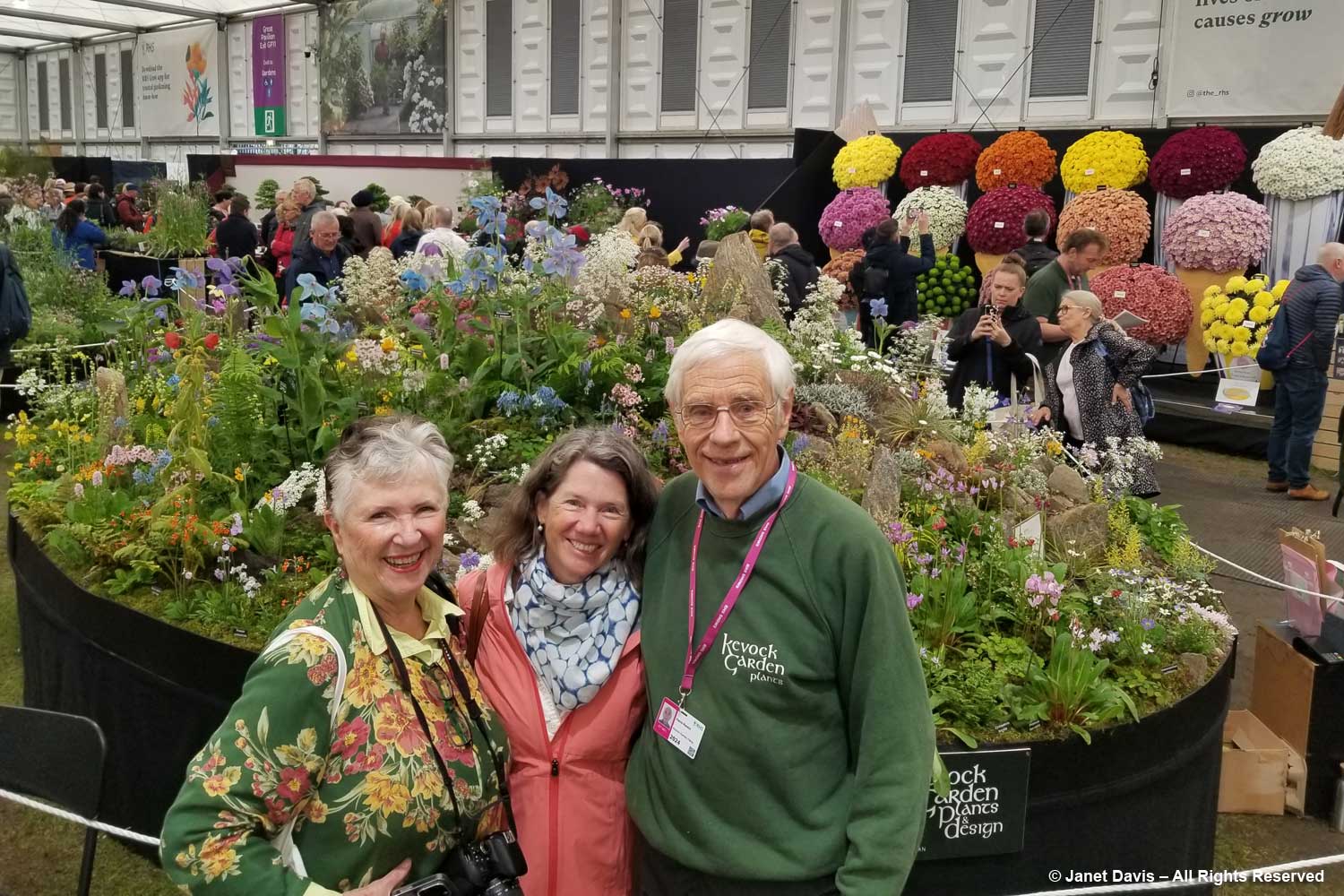
Grow just two things, but grow them very well. That could be the motto of Blackmore & Langdon’s, with their luscious begonias and delphiniums. And I swear I made the identical photo 32 years ago, when I was last at the Chelsea!

The Botanic Nursery in Wiltshire holds the National Collection of foxgloves, and it shows.
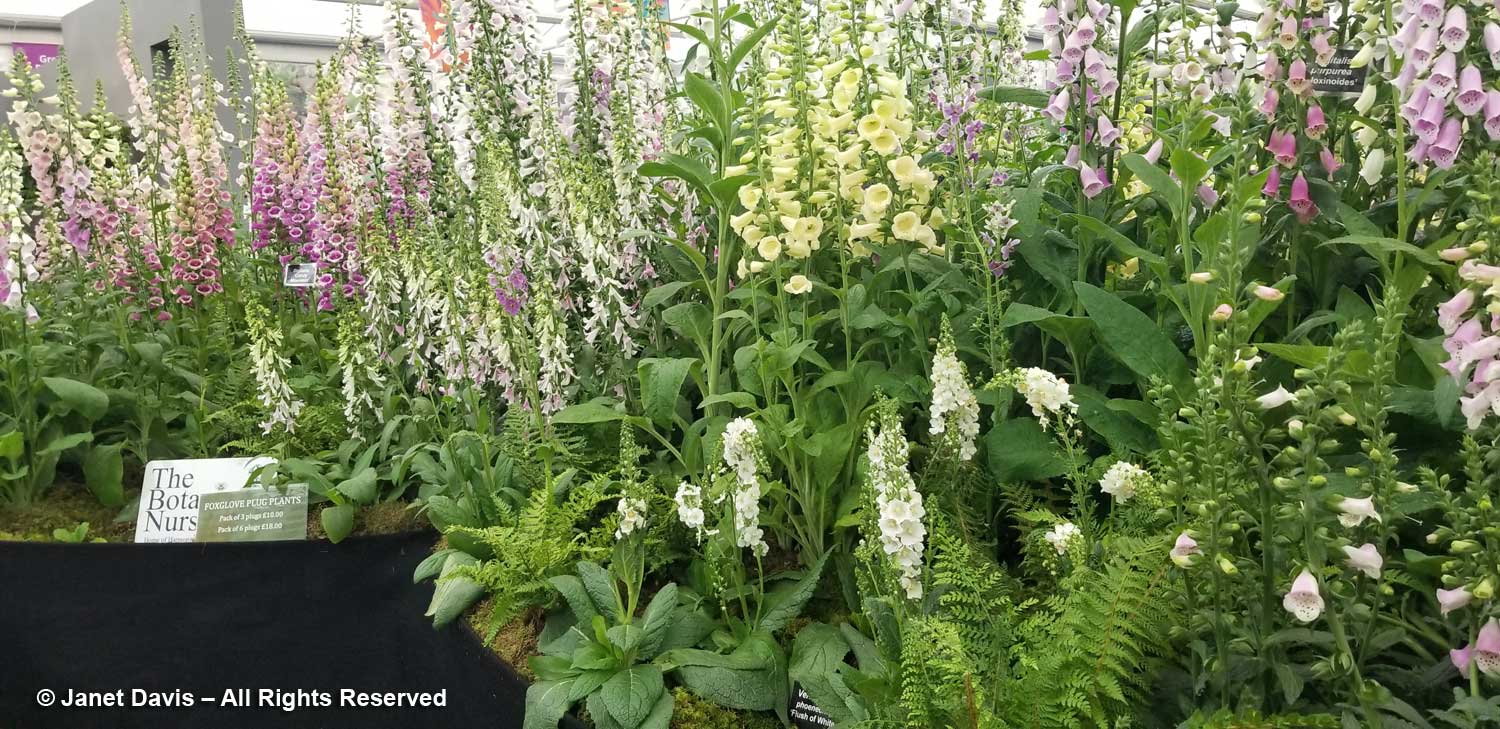
This delicate foxglove is Digitalis ‘Apple Blossom’.

W.S. Warmenhoven displayed a trove of Amaryllis and Alliums in the pavilion. A family company established in the Netherlands in 1885, they grow 55 varieties of allium, something like a million bulbs in their fields and greenhouses. There, they sell the blooms as cut flowers at the Dutch Flower Auction and harvest the bulbs for their bulb business.
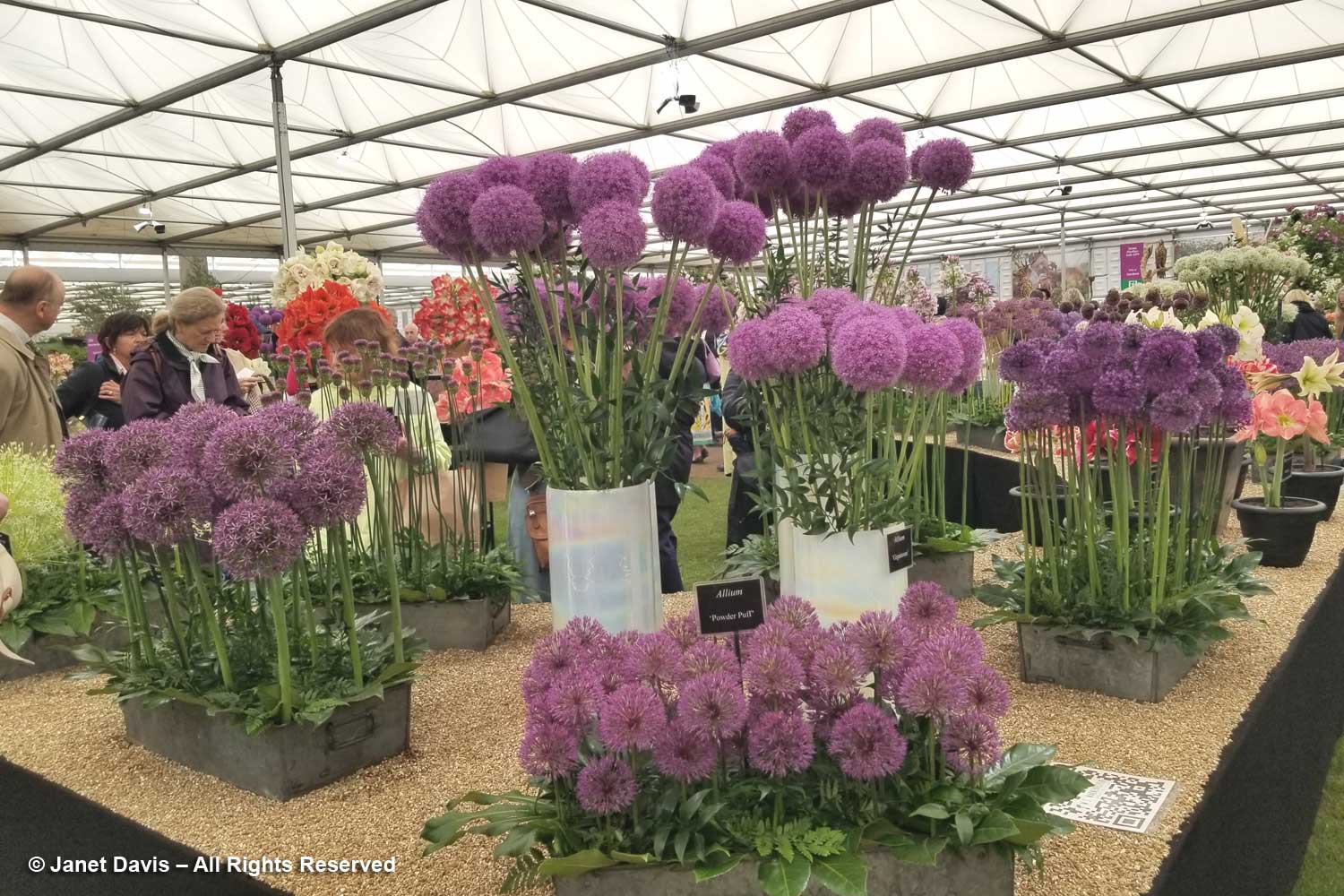
I’ve never grown Allium schubertii with its big, low-growing, starry globes, but I liked ‘Arctic Snow’.

Allium macleanii is a parent of ‘Globemaster’ and I was delighted to photograph it. I wish I could source this one in Canada, because I find the other parent, A. cristophii or star-of-Persia attracts bees but ‘Globemaster’ doesn’t, presumably sterile and also not a big nectar producer. One of my reasons for growing alliums is their great attraction to bees.
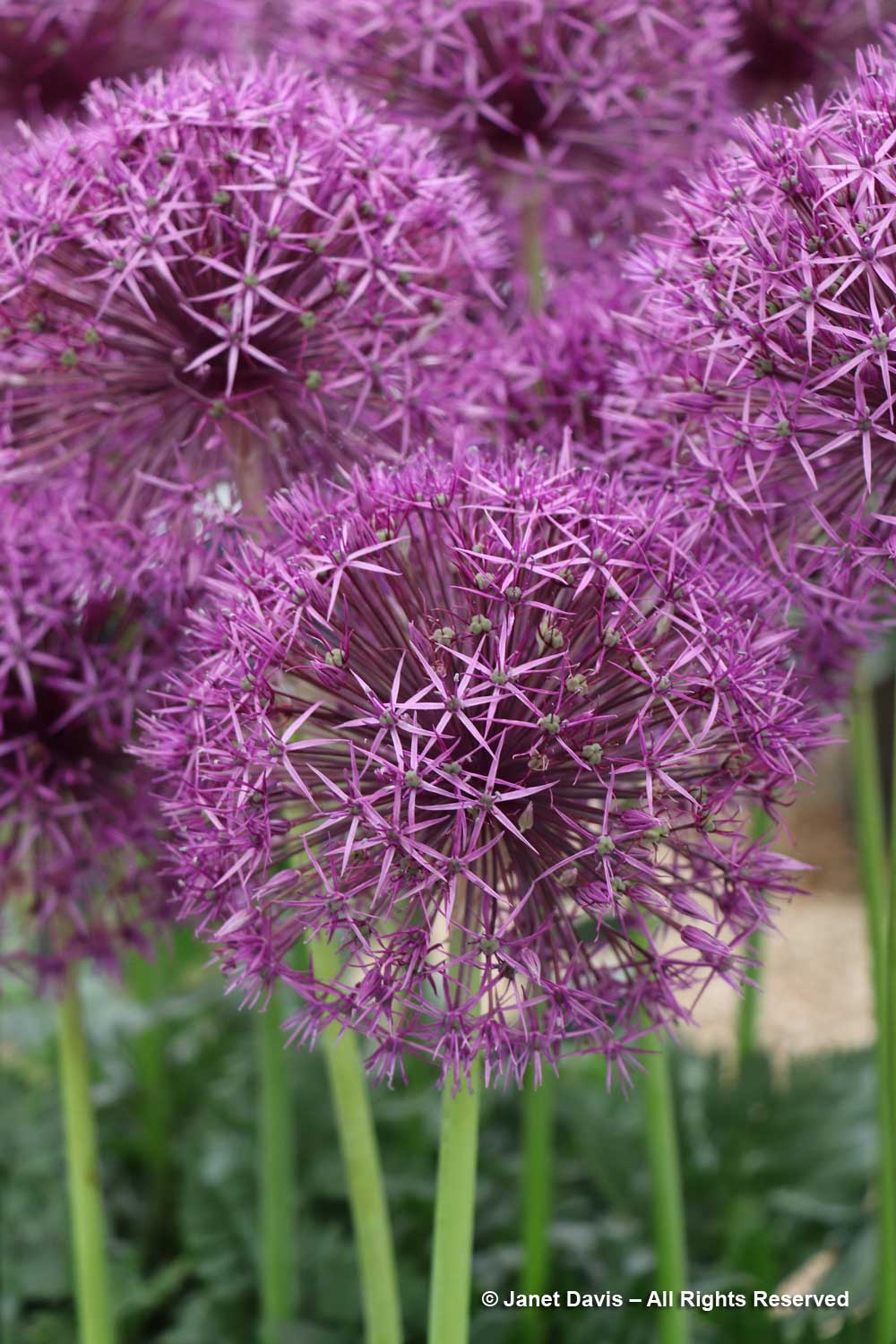
Peter Beales Roses featured a tribute to the 200th anniversary of the Royal Navy Liveboat Institution (RNLI) in their exhibit, incorporating a small inshore lifeboat.and a splash of their commemorative apricot floribunda rose 200th With Courage at right.

Not to be outdone, Harkness Roses introduced their ‘Chelsea Pensioner’ rose, which I asked this Pensioner to pose beside. For every bush sold, Harkness donates £2.50 to the care of the Chelsea Pensioners and their home.
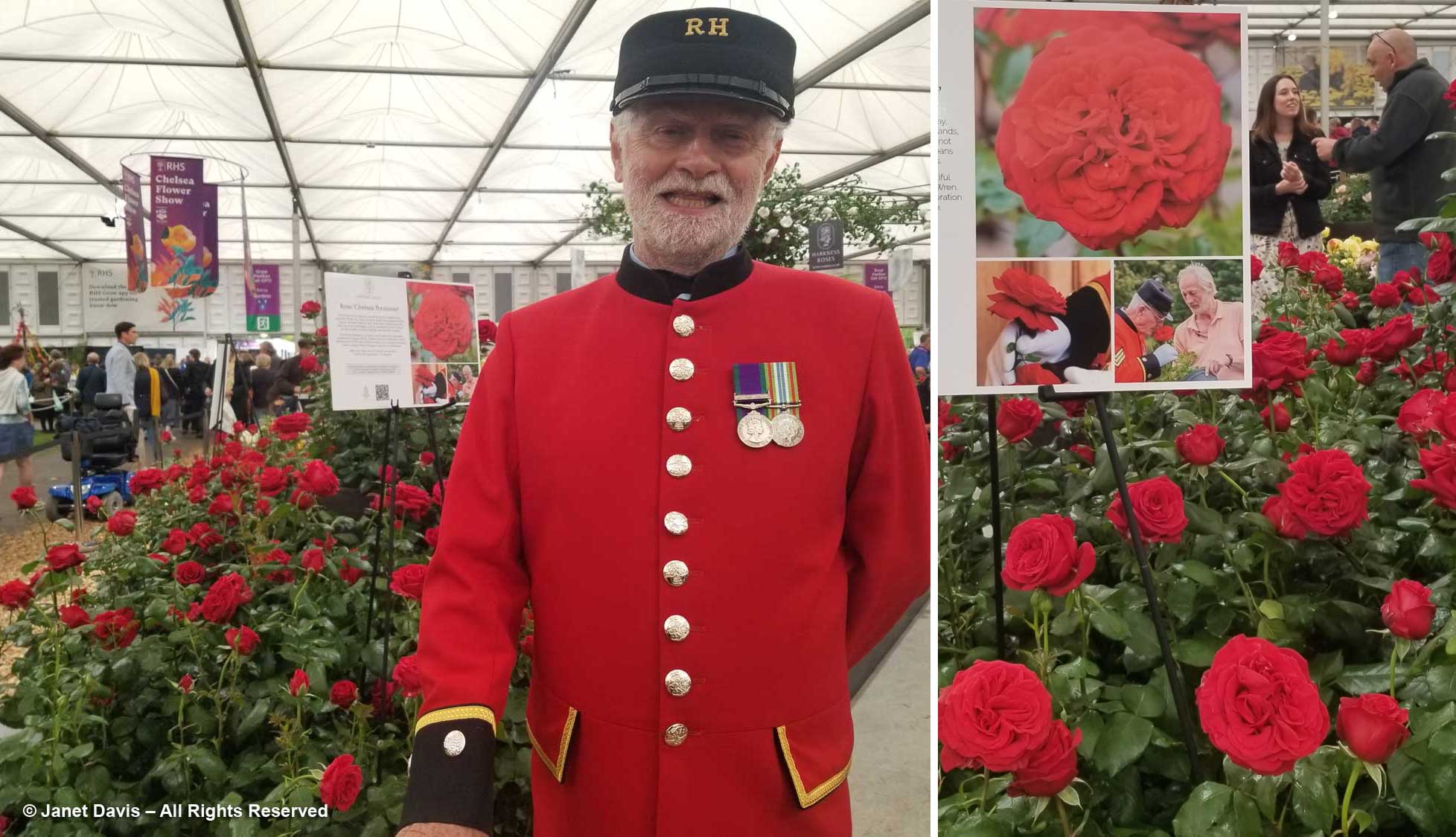
Jacques Amand had two side-by-side exhibits displaying a large range of perennials, bulbs and small trees – and they won two Chelsea Gold Medals for their efforts.

Caley Brothers sells edible and medicinal mushrooms and wanted their Chelsea display “to inspire visitors to get growing their own delicious mushrooms through a series of easy to grow projects. Regardless of space, budget or season,” they say they have a mushroom project to suit every gardener – and have written their own book called “Project Mushroom”.
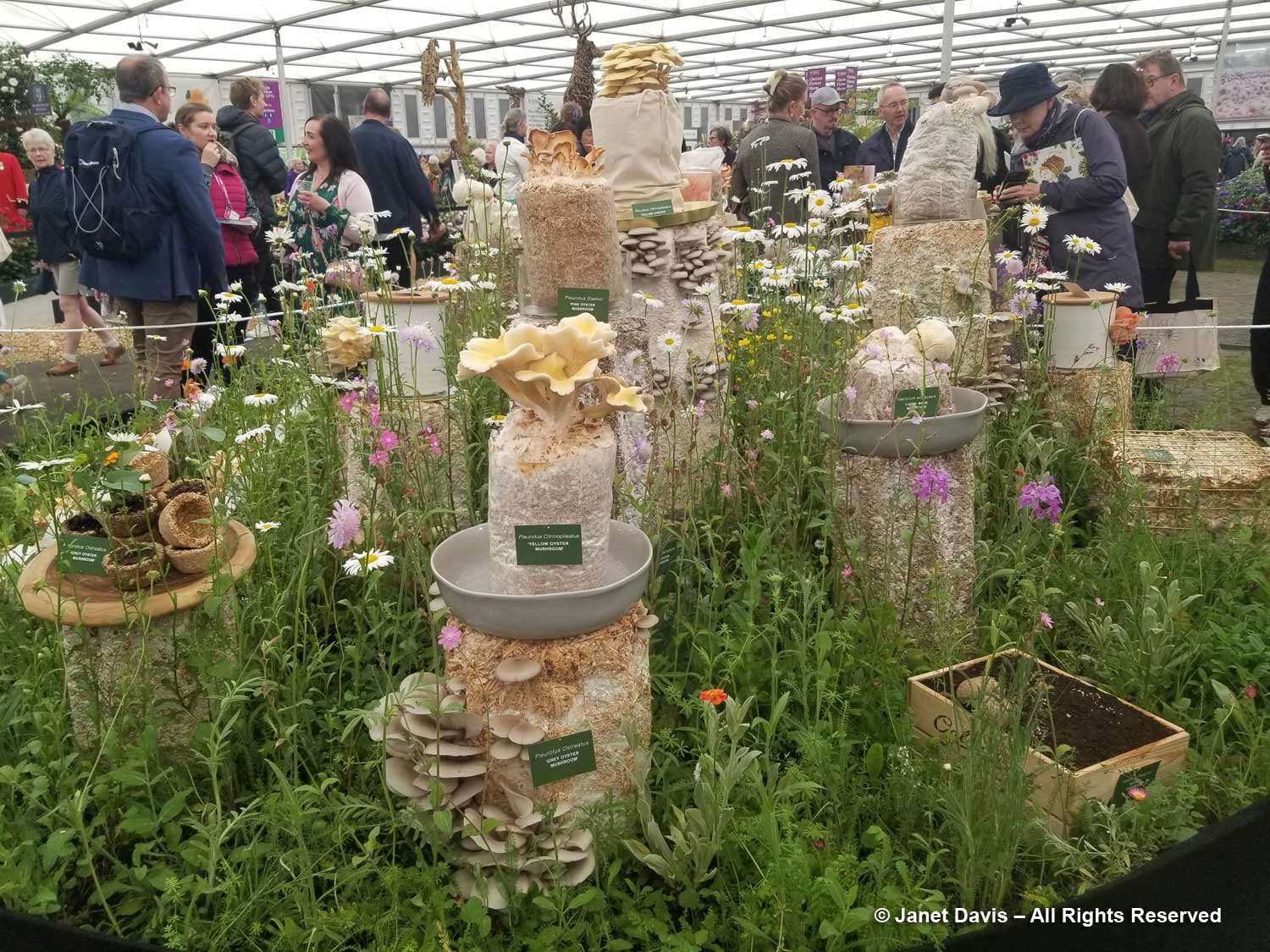
Hampshire Carnivorous Plants is the UK’s largest grower of carnivorous plants. They had a colourful display featuring loads of pitcher plants (Sarracenia spp.) and maidenhair ferns and a Jurassic dinosaur. They also sell nepenthes, Venus flytraps (Dionaea muscipula) and sundews (Drosera); the latter at least, have been traced to the Jurassic Age.

What insect could resist the alluring pitchers of Sarracenia ‘Juthatip Soper’?
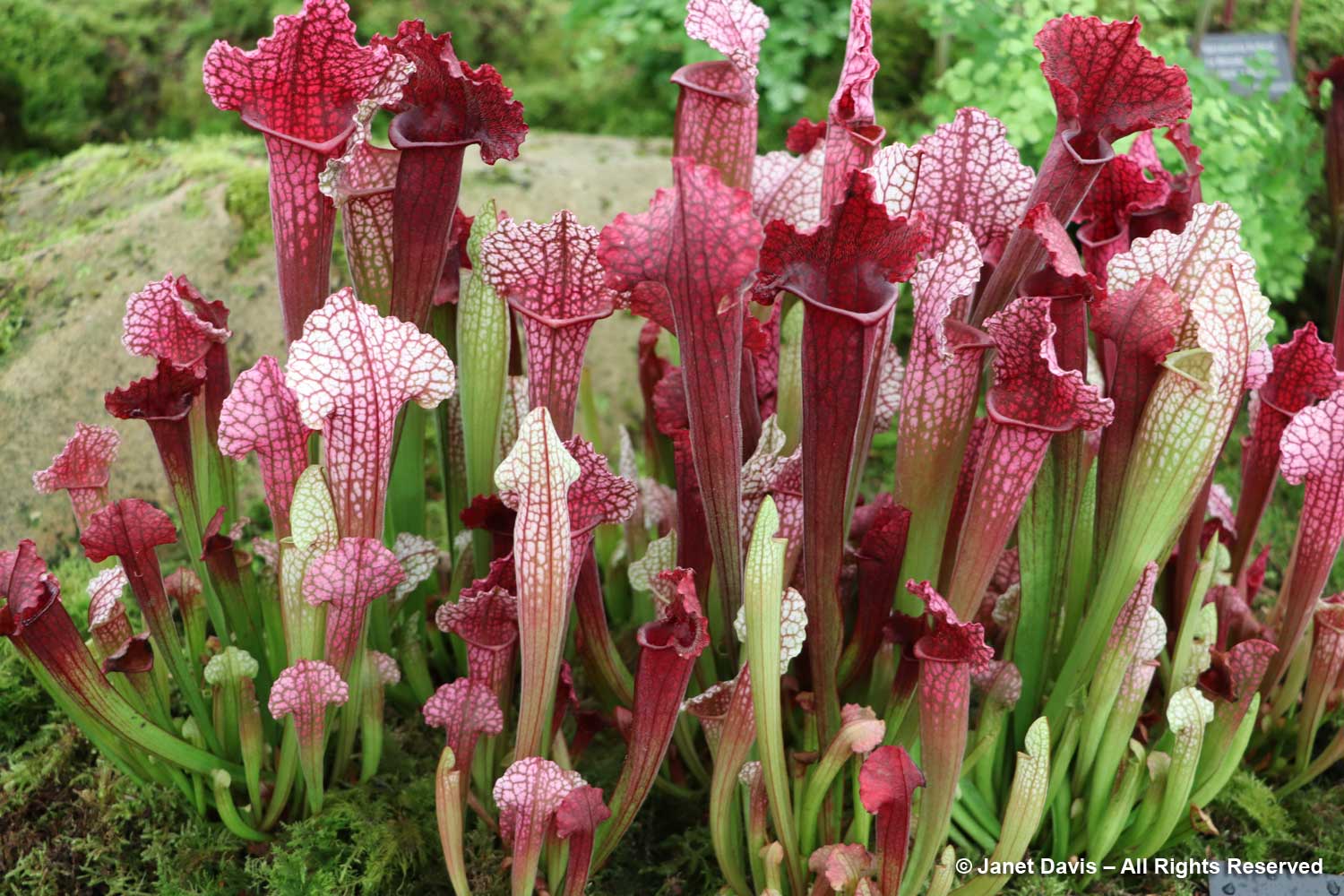
We played along, not very convincingly, since we all know dinosaurs are herbivores, right?

Driftwood Bonsai had a handsome display along the wall of the pavilion.
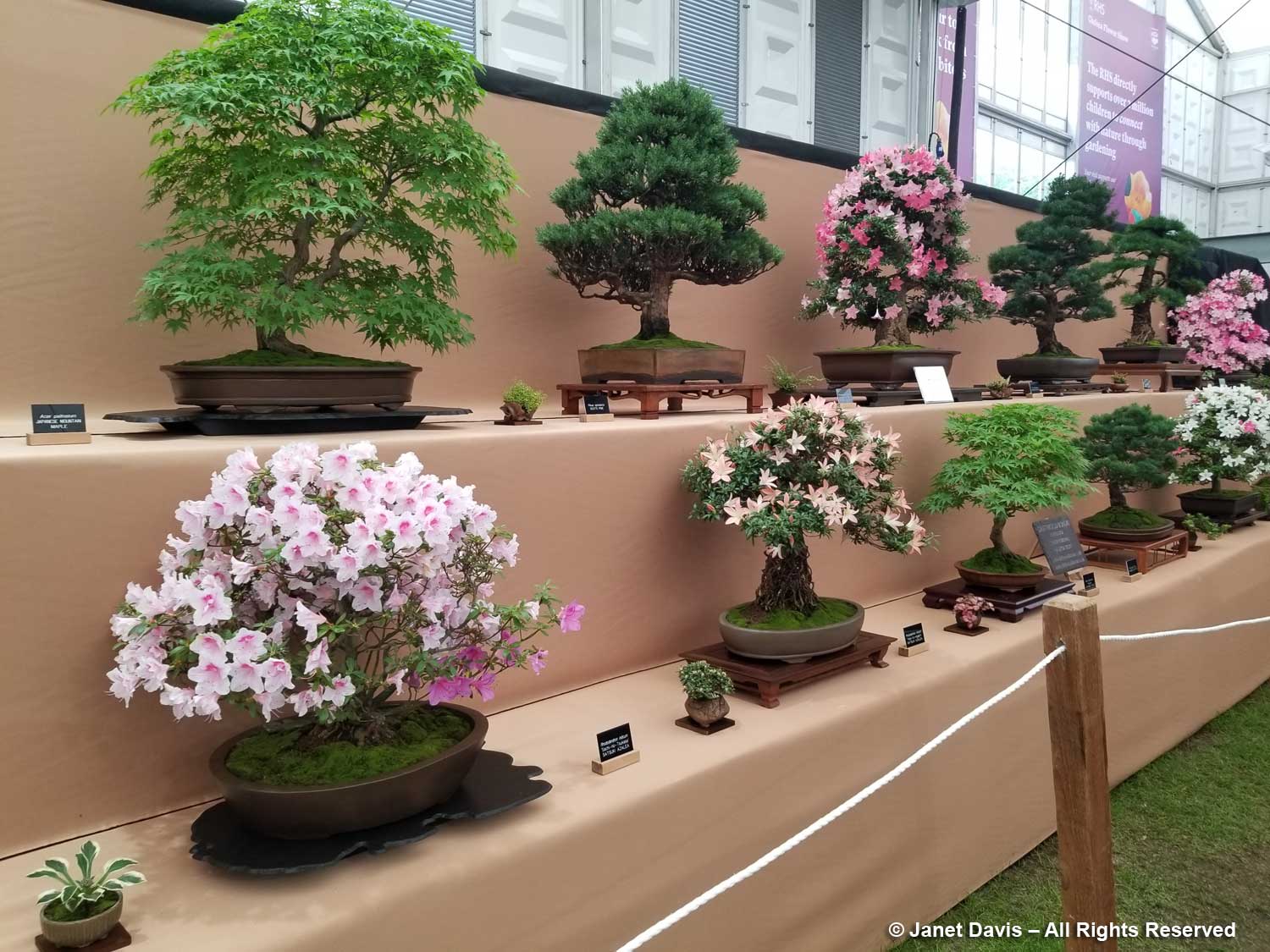
On the far wall, Kelnan Plants featured a lush display of South African natives, included many Resionaceae species.
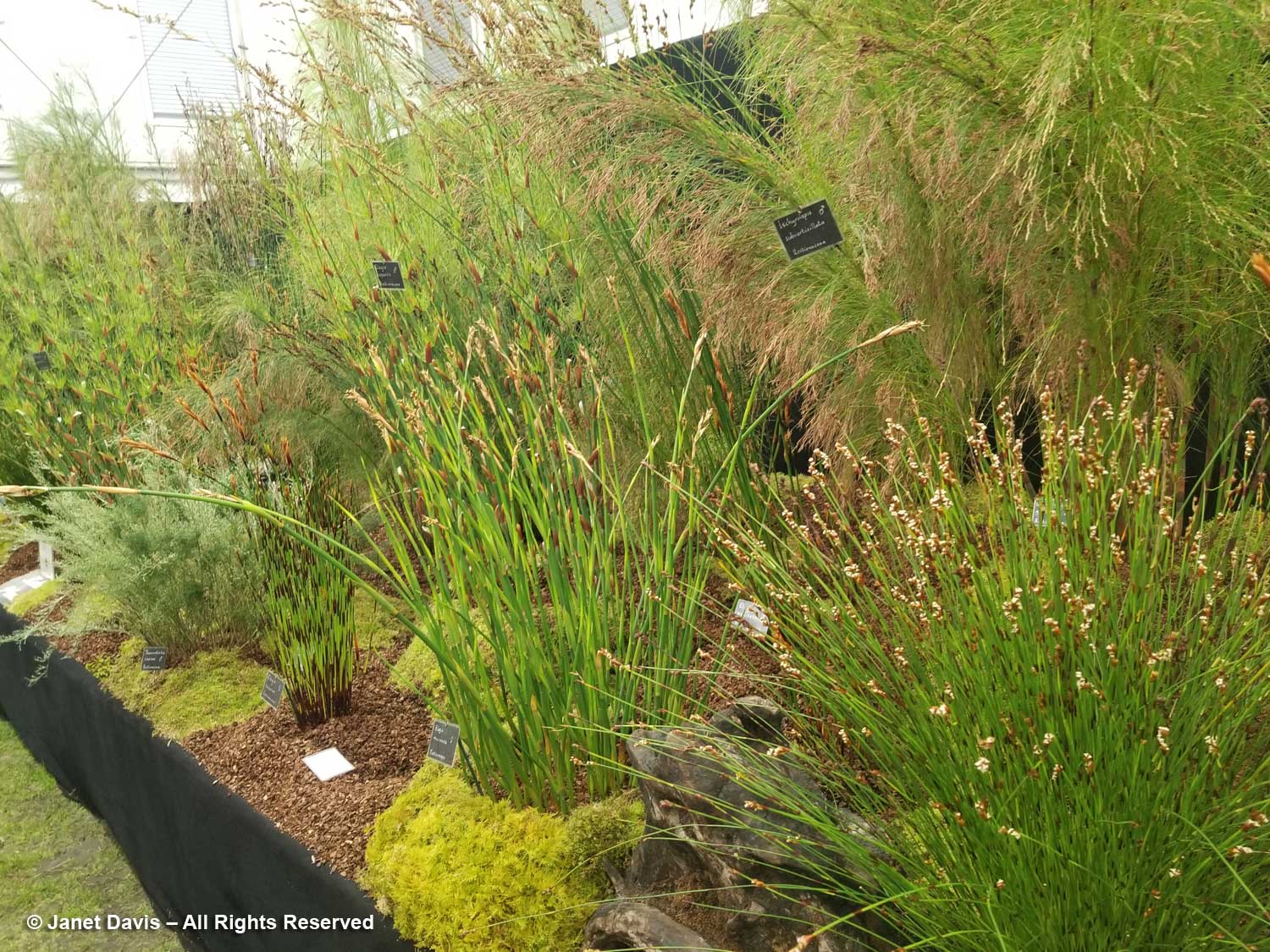
As we were leaving to head to a pub lunch, I spied a visitor preparing to try on a garment at Original Fibres. It produces 100% European wool and linen clothing for men – I loved their springy planter design.
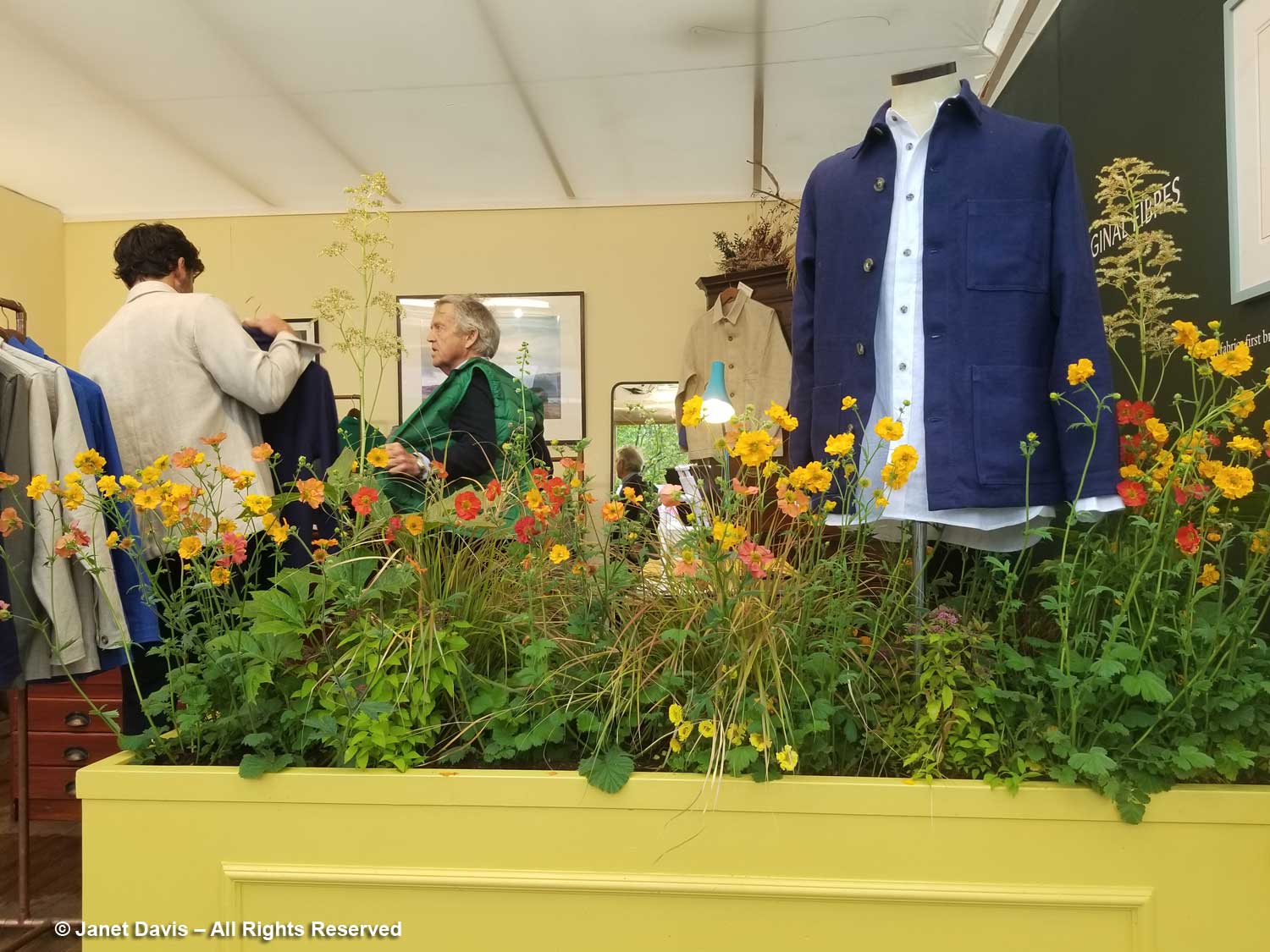
And I confess, I sneaked a photo of what might be the most beautiful garment I saw at the Chelsea on this rainy May Wednesday. But a little online detective work let me know that, sadly, I need to upgrade my shopping experience to Dolce & Gabbana. Because who wouldn’t want to stay dry under raindrops on spectacular wisteria blossoms?
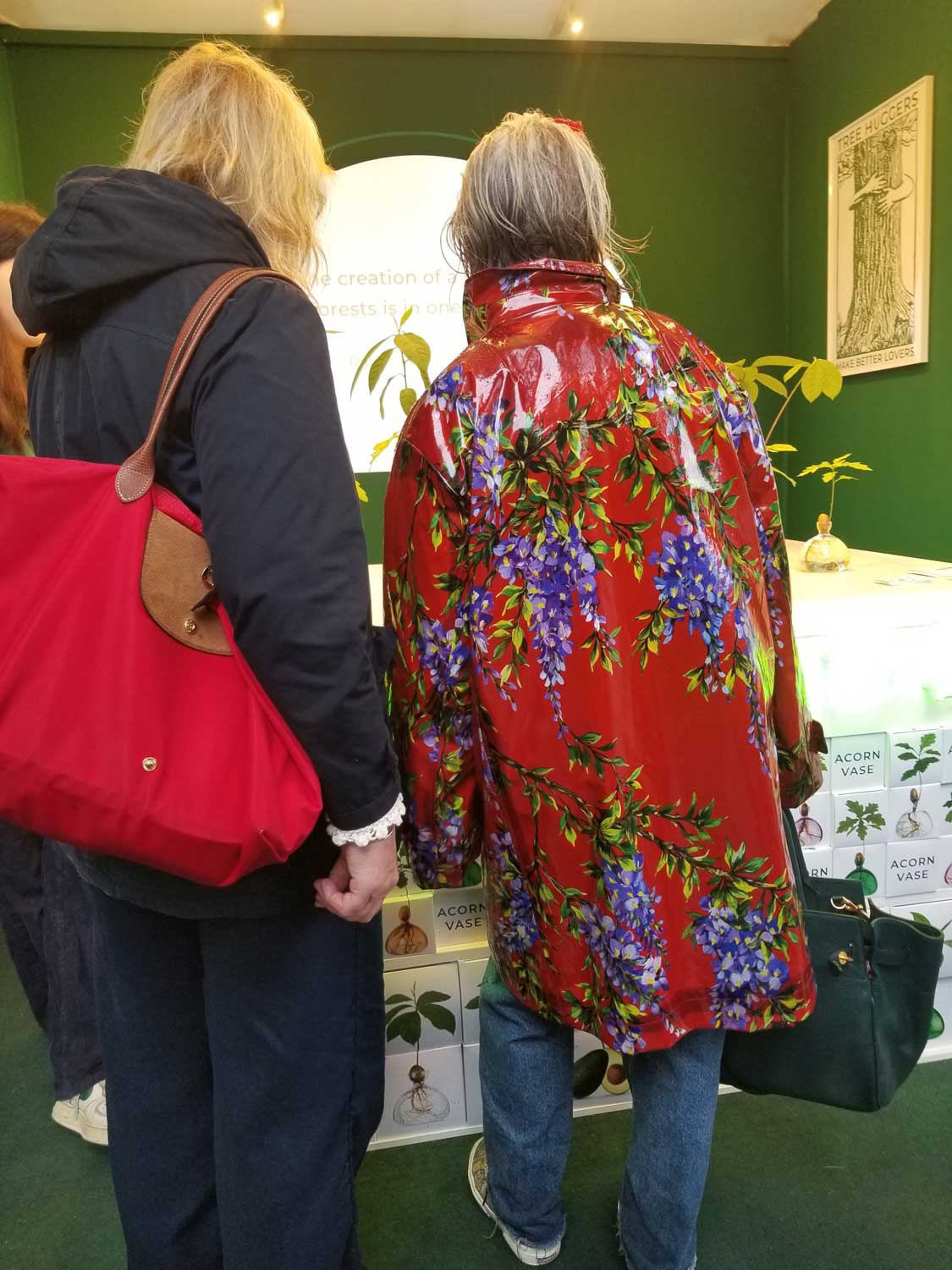
And that’s a Chelsea wrap. I missed about one-third of the show, thanks to Mother Nature, jet lag and basic energy level, but I had a truly wonderful morning and sparked a little horticultural fire in my younger menfolk! Stay tuned for future blogs on the Chelsea Physic Garden, the Garden Museum and the fabulous Moat in Bloom at London Bridge.





























